
BANAUE, PHILIPPINES: The Banaue Rice Terraces are 2,000-year-old terraces that were carved into the mountains of Ifugao in the Philippines by ancestors of the indigenous people. The Rice Terraces are commonly referred to as the "Eighth Wonder of the World". It is commonly thought that the terraces were built with minimal equipment, largely by hand. The terraces are located approximately 1500 metres (5000 ft) above sea level. They are fed by an ancient irrigation system from the rainforests above the terraces. (PHOTO BY BRENT STIRTON/REPORTAGE BY GETTY IMAGES FOR CROP TRUST.)

Banaue, Ifugao, Philippines, 8 August 2016: Ana Dulnuan-Habbiling is an Ifugaon leader with extensive knowledge of the Rice world in the area where she lives in the highlands of the Philippines. There is a long-standing tradition of rice growing in this area, something Ana speaks of as a tribute to the memory of her ancestors. She is seen with her family rice stocks, cleaning and preparing rice, cooking it and serving it to her family. She is also seen as she begins to clear her ceremonial rice paddy, something that will be seen by the other villagers as a sign that they too must begin to ready their paddies for planting. The rice they plant is known as aromatic and glutenous rice, a small group of rice strains they try to preserve and protect. Ana visited the International Rice Research Institute in Manila a few years ago where she was able to find a strain of rice her ancestors grew and which had been lost to her community, she now grows that rice again and is grateful to IRRI for the chance, in her words, to honor her ancestors. (Photo by Brent Stirton/Reportage by Getty Images for Crop Trust)

Banaue, Ifugao, Philippines, 8 August 2016: Ana Dulnuan-Habbiling is an Ifugaon leader with extensive knowledge of the Rice world in the area where she lives in the highlands of the Philippines. There is a long-standing tradition of rice growing in this area, something Ana speaks of as a tribute to the memory of her ancestors. She is seen with her family rice stocks, cleaning and preparing rice, cooking it and serving it to her family. She is also seen as she begins to clear her ceremonial rice paddy, something that will be seen by the other villagers as a sign that they too must begin to ready their paddies for planting. The rice they plant is known as aromatic and glutenous rice, a small group of rice strains they try to preserve and protect. Ana visited the International Rice Research Institute in Manila a few years ago where she was able to find a strain of rice her ancestors grew and which had been lost to her community, she now grows that rice again and is grateful to IRRI for the chance, in her words, to honor her ancestors. (Photo by Brent Stirton/Reportage by Getty Images for Crop Trust)

Banaue, Ifugao, Philippines, 8 August 2016: Ana Dulnuan-Habbiling is an Ifugaon leader with extensive knowledge of the Rice world in the area where she lives in the highlands of the Philippines. There is a long-standing tradition of rice growing in this area, something Ana speaks of as a tribute to the memory of her ancestors. She is seen with her family rice stocks, cleaning and preparing rice, cooking it and serving it to her family. She is also seen as she begins to clear her ceremonial rice paddy, something that will be seen by the other villagers as a sign that they too must begin to ready their paddies for planting. The rice they plant is known as aromatic and glutenous rice, a small group of rice strains they try to preserve and protect. Ana visited the International Rice Research Institute in Manila a few years ago where she was able to find a strain of rice her ancestors grew and which had been lost to her community, she now grows that rice again and is grateful to IRRI for the chance, in her words, to honor her ancestors. (Photo by Brent Stirton/Reportage by Getty Images for Crop Trust)

Banaue, Ifugao, Philippines, 8 August 2016: Ana Dulnuan-Habbiling is an Ifugaon leader with extensive knowledge of the Rice world in the area where she lives in the highlands of the Philippines. There is a long-standing tradition of rice growing in this area, something Ana speaks of as a tribute to the memory of her ancestors. She is seen with her family rice stocks, cleaning and preparing rice, cooking it and serving it to her family. She is also seen as she begins to clear her ceremonial rice paddy, something that will be seen by the other villagers as a sign that they too must begin to ready their paddies for planting. The rice they plant is known as aromatic and glutenous rice, a small group of rice strains they try to preserve and protect. Ana visited the International Rice Research Institute in Manila a few years ago where she was able to find a strain of rice her ancestors grew and which had been lost to her community, she now grows that rice again and is grateful to IRRI for the chance, in her words, to honor her ancestors. (Photo by Brent Stirton/Reportage by Getty Images for Crop Trust)

Banaue, Ifugao, Philippines, 8 August 2016: Ana Dulnuan-Habbiling is an Ifugaon leader with extensive knowledge of the Rice world in the area where she lives in the highlands of the Philippines. There is a long-standing tradition of rice growing in this area, something Ana speaks of as a tribute to the memory of her ancestors. She is seen with her family rice stocks, cleaning and preparing rice, cooking it and serving it to her family. She is also seen as she begins to clear her ceremonial rice paddy, something that will be seen by the other villagers as a sign that they too must begin to ready their paddies for planting. The rice they plant is known as aromatic and glutenous rice, a small group of rice strains they try to preserve and protect. Ana visited the International Rice Research Institute in Manila a few years ago where she was able to find a strain of rice her ancestors grew and which had been lost to her community, she now grows that rice again and is grateful to IRRI for the chance, in her words, to honor her ancestors. (Photo by Brent Stirton/Reportage by Getty Images for Crop Trust)

Banaue, Ifugao, Philippines, 8 August 2016: Ana Dulnuan-Habbiling is an Ifugaon leader with extensive knowledge of the Rice world in the area where she lives in the highlands of the Philippines. There is a long-standing tradition of rice growing in this area, something Ana speaks of as a tribute to the memory of her ancestors. She is seen with her family rice stocks, cleaning and preparing rice, cooking it and serving it to her family. She is also seen as she begins to clear her ceremonial rice paddy, something that will be seen by the other villagers as a sign that they too must begin to ready their paddies for planting. The rice they plant is known as aromatic and glutenous rice, a small group of rice strains they try to preserve and protect. Ana visited the International Rice Research Institute in Manila a few years ago where she was able to find a strain of rice her ancestors grew and which had been lost to her community, she now grows that rice again and is grateful to IRRI for the chance, in her words, to honor her ancestors. (Photo by Brent Stirton/Reportage by Getty Images for Crop Trust)

Banaue, Ifugao, Philippines, 8 August 2016: Ana Dulnuan-Habbiling is an Ifugaon leader with extensive knowledge of the Rice world in the area where she lives in the highlands of the Philippines. There is a long-standing tradition of rice growing in this area, something Ana speaks of as a tribute to the memory of her ancestors. She is seen with her family rice stocks, cleaning and preparing rice, cooking it and serving it to her family. She is also seen as she begins to clear her ceremonial rice paddy, something that will be seen by the other villagers as a sign that they too must begin to ready their paddies for planting. The rice they plant is known as aromatic and glutenous rice, a small group of rice strains they try to preserve and protect. Ana visited the International Rice Research Institute in Manila a few years ago where she was able to find a strain of rice her ancestors grew and which had been lost to her community, she now grows that rice again and is grateful to IRRI for the chance, in her words, to honor her ancestors. (Photo by Brent Stirton/Reportage by Getty Images for Crop Trust)

PUEBLO ANTONIA, DAVAO, PHILIPPINES, 10 AUGUST 2016: Maize farmer Juan Dajao, 59, examines corn ears in his maize field in the district of Gawad Kalinga. 54 farmers grow maize in this area over 30 hectares. It is a traditional crop in Davoa, its origins lying in trade between Spain and the Philippines going back centuries. The crop is resiliant, organic and does not require much maintenance or pesticide use. Corn in the Philippines has traditionally been associated with the poor and is more affordable than rice. It has a lower glycemic index and is a higher source of energy. Rice may be more expensive but it is not as good for you. High blood sugar is often linked to the consumption of white rice. If managed correctly, corn could address the need for the Philippines to import rice to feed its people. In the Philippines it is most often consumed once milled and looks very similar to rice on the plate. (Photo by Brent Stirton/Reportage by Getty Images for Crop Trust.)

PUEBLO ANTONIA, DAVAO, PHILIPPINES, 10 AUGUST 2016: A Maize farmer seen riding his water buffalo while inspecting his maize field in the district of Gawad Kalinga. 54 farmers grow maize in this area over 30 hectares. It is a traditional crop in Davoa, its origins lying in trade between Spain and the Philippines going back centuries. The crop is resiliant, organic and does not require much maintenance or pesticide use. Corn in the Philippines has traditionally been associated with the poor and is more affordable than rice. It has a lower glycemic index and is a higher source of energy. Rice may be more expensive but it is not as good for you. High blood sugar is often linked to the consumption of white rice. If managed correctly, corn could address the need for the Philippines to import rice to feed its people. In the Philippines it is most often consumed once milled and looks very similar to rice on the plate. (Photo by Brent Stirton/Reportage by Getty Images for Crop Trust.)

PUEBLO ANTONIA, DAVAO, PHILIPPINES, 10 AUGUST 2016: Juan Dajao, 59, sits with his family and prepares freshly harvested corn for milling in the district of Gawad Kalinga. 54 farmers grow maize in this area over 30 hectares. It is a traditional crop in Davoa, its origins lying in trade between Spain and the Philippines going back centuries. The crop is resiliant, organic and does not require much maintenance or pesticide use. Corn in the Philippines has traditionally been associated with the poor and is more affordable than rice. It has a lower glycemic index and is a higher source of energy. Rice may be more expensive but it is not as good for you. High blood sugar is often linked to the consumption of white rice. If managed correctly, corn could address the need for the Philippines to import rice to feed its people. In the Philippines it is most often consumed once milled and looks very similar to rice on the plate. (Photo by Brent Stirton/Reportage by Getty Images for Crop Trust.)

PUEBLO ANTONIA, DAVAO, PHILIPPINES, 10 AUGUST 2016: Maize farmer Juan Dajao, 59, and his wife Maria cook milled corn in the district of Gawad Kalinga. They use corn cobs to fuel their cooking fire. 54 farmers grow maize in this area over 30 hectares. It is a traditional crop in Davoa, its origins lying in trade between Spain and the Philippines going back centuries. The crop is resiliant, organic and does not require much maintenance or pesticide use. Corn in the Philippines has traditionally been associated with the poor and is more affordable than rice. It has a lower glycemic index and is a higher source of energy. Rice may be more expensive but it is not as good for you. High blood sugar is often linked to the consumption of white rice. If managed correctly, corn could address the need for the Philippines to import rice to feed its people. In the Philippines it is most often consumed once milled and looks very similar to rice on the plate. (Photo by Brent Stirton/Reportage by Getty Images for Crop Trust.)

PUEBLO ANTONIA, DAVAO, PHILIPPINES, 10 AUGUST 2016: Maize farmer Juan Dajao, 59, and his wife Maria eat with their son a meal of milled corn in the district of Gawad Kalinga. They use corn cobs to fuel their cooking fire. 54 farmers grow maize in this area over 30 hectares. It is a traditional crop in Davoa, its origins lying in trade between Spain and the Philippines going back centuries. The crop is resiliant, organic and does not require much maintenance or pesticide use. Corn in the Philippines has traditionally been associated with the poor and is more affordable than rice. It has a lower glycemic index and is a higher source of energy. Rice may be more expensive but it is not as good for you. High blood sugar is often linked to the consumption of white rice. If managed correctly, corn could address the need for the Philippines to import rice to feed its people. In the Philippines it is most often consumed once milled and looks very similar to rice on the plate. (Photo by Brent Stirton/Reportage by Getty Images for Crop Trust.)

SON LA, VIETNAM, 19 AUGUST 2016: Cassava crops fill the hills close to Son La city. (Photo by Brent Stirton/Reportage by Getty Images.)

SON LA, VIETNAM, 19 AUGUST 2016: Thai minority women move amongst Cassava crops that fill the hills close to Son La city. (Photo by Brent Stirton/Reportage by Getty Images.)

SON LA, VIETNAM, 19 AUGUST 2016: Thai minority women move amongst Cassava crops that fill the hills close to Son La city. (Photo by Brent Stirton/Reportage by Getty Images.)

SON LA, VIETNAM, 20 AUGUST 2016: Men from a farming hamlet in Son La province construct an irrigation system for their rice paddies. Most of these farmers will eat the rice they produce, using the proceeds from corn they raise for animal feed to purchase it. (Photo by Brent Stirton/Reportage by Getty Images.)

SON LA, VIETNAM, 18 AUGUST 2016: Farmers spray rice crops with pesticides to guarantee a good harvest. In these farming valleys rice, cassava and corn are all grown simultaneously. the majority of this corn will go towards animal feed, a leading commercial crop for Vietnamese farmers, most of the cassava will go for industrial purposes and and animal feed, the rice is most often for personal consumption. (Photo by Brent Stirton/Reportage by Getty Images.)

SON LA, VIETNAM, 18 AUGUST 2016: Farmers plant rice in sparse areas of the paddy to ensure a good harvest. In these farming valleys rice, cassava and corn are all grown simultaneously. the majority of this corn will go towards animal feed, a leading commercial crop for Vietnamese farmers, most of the cassava will go for industrial purposes and and animal feed, the rice is most often for personal consumption. (Photo by Brent Stirton/Reportage by Getty Images.)

SON LA, VIETNAM, 18 AUGUST 2016: Farmers plant rice in sparse areas of the paddy to ensure a good harvest. In these farming valleys rice, cassava and corn are all grown simultaneously. the majority of this corn will go towards animal feed, a leading commercial crop for Vietnamese farmers, most of the cassava will go for industrial purposes and and animal feed, the rice is most often for personal consumption. (Photo by Brent Stirton/Reportage by Getty Images.)

BANAUE, PHILIPPINES: The Banaue Rice Terraces are 2,000-year-old terraces that were carved into the mountains of Ifugao in the Philippines by ancestors of the indigenous people. The Rice Terraces are commonly referred to as the "Eighth Wonder of the World". It is commonly thought that the terraces were built with minimal equipment, largely by hand. The terraces are located approximately 1500 metres (5000 ft) above sea level. They are fed by an ancient irrigation system from the rainforests above the terraces. (PHOTO BY BRENT STIRTON/REPORTAGE BY GETTY IMAGES FOR CROP TRUST.)

MU CANG CHAI, YEN BAI, VIETNAM, 5 JUNE 2015: Local people prepare the rice paddies Mu Cang Chai is famous for. (Photo by Brent Stirton/Getty Images.)

MU CANG CHAI, YEN BAI, VIETNAM, 6 JUNE 2015: Local people prepare the rice paddies Mu Cang Chai is famous for. Rice is the staple crop in a community where people earn on average less than one dollar a day. (Photo by Brent Stirton/Getty Images)

MU CANG CHAI, YEN BAI, VIETNAM, 5 JUNE 2015: Local people prepare the rice paddies Mu Cang Chai is famous for. (Photo by Brent Stirton/Getty Images)

MU CANG CHAI, YEN BAI, VIETNAM, 5 JUNE 2015: local people prepare the rice paddies Mu Cang Chai is famous for. (Photo by Brent Stirton/Getty Images)

MU CANG CHAI, YEN BAI, VIETNAM, 6 JUNE 2015: A Hmong rice farmer tills his paddy with his water buffalo in a landscape of beautiful shapes that Mu Cang Chai is famous for. Rice is the staple crop in a community where people earn on average less than one dollar a day. (Photo by Brent Stirton/Novartis)

MU CANG CHAI, YEN BAI, VIETNAM, 6 JUNE 2015: A view over a landscape of beautiful shapes showcases the rice paddies that Mu Cang Chai is famous for. Rice is the staple crop in a community where people earn on average less than one dollar a day. (Photo by Brent Stirton/Getty Images)

SON LA, VIETNAM, 18 AUGUST 2016: Images of Thai minority people in Vietnam harvesting corn and preparing it for transport. In these farming valleys rice, cassava and corn are all grown simultaneously, the majority of this corn will go towards animal feed, a leading commercial crop for Vietnamese farmers, most of the cassava will go for industrial purposes and and animal feed, the rice is most often for personal consumption. (Photo by Brent Stirton/Reportage by Getty Images.)

SON LA, VIETNAM, 18 AUGUST 2016: Images of Thai minority people in Vietnam harvesting corn and preparing it for transport. In these farming valleys rice, cassava and corn are all grown simultaneously, the majority of this corn will go towards animal feed, a leading commercial crop for Vietnamese farmers, most of the cassava will go for industrial purposes and and animal feed, the rice is most often for personal consumption. (Photo by Brent Stirton/Reportage by Getty Images.)

SON LA, VIETNAM, 18 AUGUST 2016: Images of Thai minority people in Vietnam harvesting corn and preparing it for transport. In these farming valleys rice, cassava and corn are all grown simultaneously, the majority of this corn will go towards animal feed, a leading commercial crop for Vietnamese farmers, most of the cassava will go for industrial purposes and and animal feed, the rice is most often for personal consumption. (Photo by Brent Stirton/Reportage by Getty Images.)

SON LA, VIETNAM, 18 AUGUST 2016: Images of Thai minority people in Vietnam harvesting corn and preparing it for transport. In these farming valleys rice, cassava and corn are all grown simultaneously, the majority of this corn will go towards animal feed, a leading commercial crop for Vietnamese farmers, most of the cassava will go for industrial purposes and and animal feed, the rice is most often for personal consumption. (Photo by Brent Stirton/Reportage by Getty Images.)

SON LA, VIETNAM, 18 AUGUST 2016: Images of Thai minority people in Vietnam harvesting corn and preparing it for transport. In these farming valleys rice, cassava and corn are all grown simultaneously, the majority of this corn will go towards animal feed, a leading commercial crop for Vietnamese farmers, most of the cassava will go for industrial purposes and and animal feed, the rice is most often for personal consumption. (Photo by Brent Stirton/Reportage by Getty Images.)

SON LA, VIETNAM, 18 AUGUST 2016: Early harvest corn is sheltered from rain on an old runway. The majority of this corn will go towards animal feed, a leading commercial crop for Vietnamese farmers. Most of these farmers will eat rice, using the proceeds from corn to purchase it. (Photo by Brent Stirton/Reportage by Getty Images.)

SON LA, VIETNAM, 18 AUGUST 2016: Early harvest corn drying in the sun and at facilities for processsing, the majority of this corn will go towards animal feed, a leading commercial crop for Vietnamese farmers. Most of these farmers will eat rice, using the proceeds from corn to purchase it. (Photo by Brent Stirton/Reportage by Getty Images.)

SON LA, VIETNAM, 18 AUGUST 2016: Early harvest corn drying in the sun and at facilities for processsing, the majority of this corn will go towards animal feed, a leading commercial crop for Vietnamese farmers. Most of these farmers will eat rice, using the proceeds from corn to purchase it. (Photo by Brent Stirton/Reportage by Getty Images.)

PUEBLO ANTONIA, DAVAO, PHILIPPINES, 10 AUGUST 2016: A corn mill mills farmers corn in a poor section of Davao. Corn is a traditional crop in Davoa, its origins lying in trade between Spain and the Philippines going back centuries. The crop is resiliant, organic and does not require much maintenance or pesticide use. Corn in the Philippines has traditionally been associated with the poor and is more affordable than rice. It has a lower glycemic index and is a higher source of energy. Rice may be more expensive but it is not as good for you. High blood sugar is often linked to the consumption of white rice. If managed correctly, corn could address the need for the Philippines to import rice to feed its people. In the Philippines it is most often consumed once milled and looks very similar to rice on the plate. (Photo by Brent Stirton/Reportage by Getty Images for Crop Trust.)

PUEBLO ANTONIA, DAVAO, PHILIPPINES, 10 AUGUST 2016: Workers at a Casava farmers co-operative use machines to prepare and wash Casava for the market. Casava is traditional a crop eaten by the Islamic population of Davao but this is changing. Two kinds are grown, a crop for animal feed and a crop for human consumption. Food products like cakes, flour, and thickening agents are produced from it and its is also used industrially in adhesives. Casava is increasing in popularity amongst farmers as a staple for animal feed and production has risen steadily over the last 5 years. It is replacing the more expensive corn for this purpose. Casava is very drought tolerant and resistant to Typhoon weather. (Photo by Brent Stirton/Reportage by Getty Images for Crop Trust.)

PUEBLO ANTONIA, DAVAO, PHILIPPINES, 10 AUGUST 2016: Workers at a Casava farmers co-operative use machines to prepare and wash Casava for the market. Casava is traditional a crop eaten by the Islamic population of Davao but this is changing. Two kinds are grown, a crop for animal feed and a crop for human consumption. Food products like cakes, flour, and thickening agents are produced from it and its is also used industrially in adhesives. Casava is increasing in popularity amongst farmers as a staple for animal feed and production has risen steadily over the last 5 years. It is replacing the more expensive corn for this purpose. Casava is very drought tolerant and resistant to Typhoon weather. (Photo by Brent Stirton/Reportage by Getty Images for Crop Trust.)

DAVAO, PHILIPPINES, 10 AUGUST 2016: Casava farmers harvest ripe Casava tubers for a co-operative outside of Davao. Casava is traditional a crop eaten by the Islamic population of Davao but this is changing. Two kinds are grown, a crop for animal feed and a crop for human consumption. Food products like cakes, flour, and thickening agents are produced from it and its is also used industrially in adhesives. Casava is increasing in popularity amongst farmers as a staple for animal feed and production has risen steadily over the last 5 years. It is replacing the more expensive corn for this purpose. Casava is very drought tolerant and resistant to Typhoon weather. (Photo by Brent Stirton/Reportage by Getty Images for Crop Trust.)

DAVAO, PHILIPPINES, 10 AUGUST 2016: Casava is prepared and sold in the markets of Davao. Casava is traditional a crop eaten by the Islamic population of Davao but this is changing. Two kinds are grown, a crop for animal feed and a crop for human consumption. Food products like cakes, flour, and thickening agents are produced from it and its is also used industrially in adhesives. Casava is increasing in popularity amongst farmers as a staple for animal feed and production has risen steadily over the last 5 years. It is replacing the more expensive corn for this purpose. Casava is very drought tolerant and resistant to Typhoon weather. (Photo by Brent Stirton/Reportage by Getty Images for Crop Trust.)

SON LA, VIETNAM, 18 AUGUST 2016: Small vegetable sellers seen in the villages closer to Son La city. (Photo by Brent Stirton/Reportage by Getty Images.)




SON LA, VIETNAM, 18 AUGUST 2016: Pigs are fed processed corn as animal feed in pens at a corn processing site close to Son La city. In these farming valleys rice, cassava and corn are all grown simultaneously, the majority of this corn will go towards animal feed, a leading commercial crop for Vietnamese farmers, most of the cassava will go for industrial purposes and and animal feed, the rice is most often for personal consumption. (Photo by Brent Stirton/Reportage by Getty Images.)

SON LA, VIETNAM, 18 AUGUST 2016: Pigs are fed processed corn as animal feed in pens at a corn processing site close to Son La city. In these farming valleys rice, cassava and corn are all grown simultaneously, the majority of this corn will go towards animal feed, a leading commercial crop for Vietnamese farmers, most of the cassava will go for industrial purposes and and animal feed, the rice is most often for personal consumption. (Photo by Brent Stirton/Reportage by Getty Images.)

DAVAO, PHILIPPINES, 10 AUGUST 2016: Workers unload rice imported from Vietnam into a warehouse on the docks in Davao, Philippines. The Philippines used to produce more rice than any other country in the region but today finds itself importing to make up demand. This is due to increased demand, rising wealth, crop destruction by the weather and other factors. (Photo by Brent Stirton/Reportage by Getty Images for Crop Trust.)

DAVAO, PHILIPPINES, 10 AUGUST 2016: Workers unload rice imported from Vietnam into a warehouse on the docks in Davao, Philippines. The Philippines used to produce more rice than any other country in the region but today finds itself importing to make up demand. This is due to increased demand, rising wealth, crop destruction by the weather and other factors. (Photo by Brent Stirton/Reportage by Getty Images for Crop Trust.)

IRRI, LOS BANOS, PHILIPPINES, 9 AUGUST 2016: The International Rice Research Institute. IRRI is the world’s premier research organization dedicated to reducing poverty and hunger through rice science; improving the health and welfare of rice farmers and consumers; and protecting the rice-growingenvironment for future generations. IRRI is an independent, nonprofit research andeducational institute founded in 1960 by the Ford and Rockefeller foundations, withsupport from the Philippine government. The institute, headquartered in LosBaños,Philippines, has offices in 17 rice-growing countries in Asia and Africa, and About 1,000 staff members. Working with in-country partners, IRRI develops advanced rice varieties that yield more grain and better withstand pests and disease as well as flooding, drought, and other destructive effects of climate change. More than half of the rice area in Asia is planted to IRRI-bred varieties or their progenies. The institute develops new and improved methods and technologies that enable farmers to manage their farms profitably and sustainably, and recommends rice varieties and agricultural practices suitable to particular farm conditions as well as consumer preferences. IRRI assists national agricultural research and extension systems in formulating and implementing country rice sector strategies. (Photo by Brent Stirton/Reportage by Getty Images for Crop Trust.)

IRRI, LOS BANOS, PHILIPPINES, 9 AUGUST 2016: Experimental rice being grown for testing at the International Rice Research Institute. IRRI is the world’s premier research organization dedicated to reducing poverty and hunger through rice science; improving the health and welfare of rice farmers and consumers; and protecting the rice-growingenvironment for future generations. IRRI is an independent, nonprofit research andeducational institute founded in 1960 by the Ford and Rockefeller foundations, withsupport from the Philippine government. The institute, headquartered in LosBaños,Philippines, has offices in 17 rice-growing countries in Asia and Africa, and About 1,000 staff members. Working with in-country partners, IRRI develops advanced rice varieties that yield more grain and better withstand pests and disease as well as flooding, drought, and other destructive effects of climate change. More than half of the rice area in Asia is planted to IRRI-bred varieties or their progenies. The institute develops new and improved methods and technologies that enable farmers to manage their farms profitably and sustainably, and recommends rice varieties and agricultural practices suitable to particular farm conditions as well as consumer preferences. IRRI assists national agricultural research and extension systems in formulating and implementing country rice sector strategies. (Photo by Brent Stirton/Reportage by Getty Images for Crop Trust.)

IRRI, LOS BANOS, PHILIPPINES, 9 AUGUST 2016: Workers harvest experimental rice for testing at the International Rice Research Institute. IRRI is the world’s premier research organization dedicated to reducing poverty and hunger through rice science; improving the health and welfare of rice farmers and consumers; and protecting the rice-growingenvironment for future generations. IRRI is an independent, nonprofit research andeducational institute founded in 1960 by the Ford and Rockefeller foundations, withsupport from the Philippine government. The institute, headquartered in LosBaños,Philippines, has offices in 17 rice-growing countries in Asia and Africa, and About 1,000 staff members. Working with in-country partners, IRRI develops advanced rice varieties that yield more grain and better withstand pests and disease as well as flooding, drought, and other destructive effects of climate change. More than half of the rice area in Asia is planted to IRRI-bred varieties or their progenies. The institute develops new and improved methods and technologies that enable farmers to manage their farms profitably and sustainably, and recommends rice varieties and agricultural practices suitable to particular farm conditions as well as consumer preferences. IRRI assists national agricultural research and extension systems in formulating and implementing country rice sector strategies. (Photo by Brent Stirton/Reportage by Getty Images for Crop Trust.)

IRRI, LOS BANOS, PHILIPPINES, 9 AUGUST 2016: Workers conduct drought resistance rice sampling at the International Rice Research Institute. IRRI is the world’s premier research organization dedicated to reducing poverty and hunger through rice science; improving the health and welfare of rice farmers and consumers; and protecting the rice-growingenvironment for future generations. IRRI is an independent, nonprofit research andeducational institute founded in 1960 by the Ford and Rockefeller foundations, withsupport from the Philippine government. The institute, headquartered in LosBaños,Philippines, has offices in 17 rice-growing countries in Asia and Africa, and About 1,000 staff members. Working with in-country partners, IRRI develops advanced rice varieties that yield more grain and better withstand pests and disease as well as flooding, drought, and other destructive effects of climate change. More than half of the rice area in Asia is planted to IRRI-bred varieties or their progenies. The institute develops new and improved methods and technologies that enable farmers to manage their farms profitably and sustainably, and recommends rice varieties and agricultural practices suitable to particular farm conditions as well as consumer preferences. IRRI assists national agricultural research and extension systems in formulating and implementing country rice sector strategies. (Photo by Brent Stirton/Reportage by Getty Images for Crop Trust.)

IRRI, LOS BANOS, PHILIPPINES, 9 AUGUST 2016: Workers conduct drought resistance rice sampling at the International Rice Research Institute. IRRI is the world’s premier research organization dedicated to reducing poverty and hunger through rice science; improving the health and welfare of rice farmers and consumers; and protecting the rice-growingenvironment for future generations. IRRI is an independent, nonprofit research andeducational institute founded in 1960 by the Ford and Rockefeller foundations, withsupport from the Philippine government. The institute, headquartered in LosBaños,Philippines, has offices in 17 rice-growing countries in Asia and Africa, and About 1,000 staff members. Working with in-country partners, IRRI develops advanced rice varieties that yield more grain and better withstand pests and disease as well as flooding, drought, and other destructive effects of climate change. More than half of the rice area in Asia is planted to IRRI-bred varieties or their progenies. The institute develops new and improved methods and technologies that enable farmers to manage their farms profitably and sustainably, and recommends rice varieties and agricultural practices suitable to particular farm conditions as well as consumer preferences. IRRI assists national agricultural research and extension systems in formulating and implementing country rice sector strategies. (Photo by Brent Stirton/Reportage by Getty Images for Crop Trust.)

IRRI, LOS BANOS, PHILIPPINES, 9 AUGUST 2016: Dr Vera Cruz checks a rice experiment to monitor the progress of Blight at the International Rice Research Institute. IRRI is the world’s premier research organization dedicated to reducing poverty and hunger through rice science; improving the health and welfare of rice farmers and consumers; and protecting the rice-growingenvironment for future generations. IRRI is an independent, nonprofit research andeducational institute founded in 1960 by the Ford and Rockefeller foundations, withsupport from the Philippine government. The institute, headquartered in LosBaños,Philippines, has offices in 17 rice-growing countries in Asia and Africa, and About 1,000 staff members. Working with in-country partners, IRRI develops advanced rice varieties that yield more grain and better withstand pests and disease as well as flooding, drought, and other destructive effects of climate change. More than half of the rice area in Asia is planted to IRRI-bred varieties or their progenies. The institute develops new and improved methods and technologies that enable farmers to manage their farms profitably and sustainably, and recommends rice varieties and agricultural practices suitable to particular farm conditions as well as consumer preferences. IRRI assists national agricultural research and extension systems in formulating and implementing country rice sector strategies. (Photo by Brent Stirton/Reportage by Getty Images for Crop Trust.)

HANOI, VIETNAM, 15 AUGUST 2016: Greenhouse experimental rice sampling for genetic research purposes in the greenhouses of the International Center for Tropical Agriculture. CIAT’s mission is to reduce hunger and poverty, and improve human nutrition in the tropics through research aimed at increasing the eco-efficiency of agriculture. Backed by the Colombian government and Rockefeller, Ford, and Kellogg Foundations, CIAT was formally established in 1967 and began its research in 1969. CIAT’s staff includes about 200 scientists. Supported by a wide array of donors, the Center collaborates with hundreds of partners to conduct high-quality research and translate the results into development impact. A Board of Trustees provides oversight of CIAT’s research and financial management. CIAT develops technologies, methods, and knowledge that better enable farmers, mainly smallholders, to enhance eco-efficiency in agriculture. This makes production more competitive and profitable as well as sustainable and resilient through economically and ecologically sound use of natural resources and purchased inputs. CIAT has global responsibility for the improvement of two staplefoods, cassava and common bean, together with tropical forages for livestock. In Latin America and the Caribbean, research is conducted on rice as well. Representing diverse food groups and a key component of the world’s agricultural biodiversity, those crops are vital for global food and nutrition security. In its work on agrobiodiversity, the Center employs advanced biotechnology to accelerate crop improvement. Progress in our crop research also depends on unique collections of genetic resources– 65,000 crop samples in all – which are held in trust for humanity. Alongside its research on agrobiodiversity, CIAT works in two other areas – soils and decision and policy analysis – which cut across all tropical crops and production environments. Center soil scientists conduct research across scales

HANOI, VIETNAM, 15 AUGUST 2016: Greenhouse experimental rice sampling for genetic research purposes in the greenhouses of the International Center for Tropical Agriculture. CIAT’s mission is to reduce hunger and poverty, and improve human nutrition in the tropics through research aimed at increasing the eco-efficiency of agriculture. Backed by the Colombian government and Rockefeller, Ford, and Kellogg Foundations, CIAT was formally established in 1967 and began its research in 1969. CIAT’s staff includes about 200 scientists. Supported by a wide array of donors, the Center collaborates with hundreds of partners to conduct high-quality research and translate the results into development impact. A Board of Trustees provides oversight of CIAT’s research and financial management. CIAT develops technologies, methods, and knowledge that better enable farmers, mainly smallholders, to enhance eco-efficiency in agriculture. This makes production more competitive and profitable as well as sustainable and resilient through economically and ecologically sound use of natural resources and purchased inputs. CIAT has global responsibility for the improvement of two staplefoods, cassava and common bean, together with tropical forages for livestock. In Latin America and the Caribbean, research is conducted on rice as well. Representing diverse food groups and a key component of the world’s agricultural biodiversity, those crops are vital for global food and nutrition security. In its work on agrobiodiversity, the Center employs advanced biotechnology to accelerate crop improvement. Progress in our crop research also depends on unique collections of genetic resources– 65,000 crop samples in all – which are held in trust for humanity. Alongside its research on agrobiodiversity, CIAT works in two other areas – soils and decision and policy analysis – which cut across all tropical crops and production environments. Center soil scientists conduct research across scales

HANOI, VIETNAM, 15 AUGUST 2016: Images of experiemental Cassava crops at the Root Crop Research and Development Center, (RCRDC,) where over 100 Cassava varieties from all over Vietnam have been sampled. On the left Nguyen Trong Hien, Deputy Director, looks at DNA based sampled of Cassava developed in conjunction with the national assessments of the International Center for Tropical Agriculture, (CIAT.) On the right Cassava researchers examine genetically modified Cassava designed for things like drought resistance, early harvest capabilities and disease resistance. Cassava is a root crop of tropical American origin, cassava (Manihot esculenta Crantz) has risen from relative obscurity in recent decades to become the world’s third most important source of dietary energy after maize and rice. Esteemed by smallholder farmers for its tolerance to drought and infertile soils, the crop is inherently eco-efficient, offering a reliable source of food as well as income from markets for a wide variety of food, feed, and industrial products. CIAT’s Genetic Resources Program conserves in vitro the world’s most important collection of cassava germplasm, encompassing a wide array of landraces together with wild species related to the cultivated crop. These materials are a valuable resource for cassava improvement worldwide. The Center’s Cassava Program develops £elite germplasm through the use of improved breeding methods, such as rapid-cycling recurrent selection and production of doubled haploids. This material is shared directly with research partners in Southeast Asia as well as Latin America and the Caribbean and in sub-Saharan Africa through the International Institute of Tropical Agriculture (IITA). Center cassava researchers also develop £source germplasm containing key traits, such as tolerance to postharvest physiological deterioration, resistance to whiteflies, and amylose-free or high-amylose starch. A root crop of tropical American origin, cassava (Manihot e

IRRI, LOS BANOS, PHILIPPINES, 9 AUGUST 2016: Seeds are checked during a rice experiment to monitor salinity at the International Rice Research Institute. IRRI is the world’s premier research organization dedicated to reducing poverty and hunger through rice science; improving the health and welfare of rice farmers and consumers; and protecting the rice-growingenvironment for future generations. IRRI is an independent, nonprofit research andeducational institute founded in 1960 by the Ford and Rockefeller foundations, withsupport from the Philippine government. The institute, headquartered in LosBaños,Philippines, has offices in 17 rice-growing countries in Asia and Africa, and About 1,000 staff members. Working with in-country partners, IRRI develops advanced rice varieties that yield more grain and better withstand pests and disease as well as flooding, drought, and other destructive effects of climate change. More than half of the rice area in Asia is planted to IRRI-bred varieties or their progenies. The institute develops new and improved methods and technologies that enable farmers to manage their farms profitably and sustainably, and recommends rice varieties and agricultural practices suitable to particular farm conditions as well as consumer preferences. IRRI assists national agricultural research and extension systems in formulating and implementing country rice sector strategies. (Photo by Brent Stirton/Reportage by Getty Images for Crop Trust.)

IRRI, LOS BANOS, PHILIPPINES, 9 AUGUST 2016: A worker hand pollinating rice plants to induce specific varieties at the International Rice Research Institute. IRRI is the world’s premier research organization dedicated to reducing poverty and hunger through rice science; improving the health and welfare of rice farmers and consumers; and protecting the rice-growingenvironment for future generations. IRRI is an independent, nonprofit research andeducational institute founded in 1960 by the Ford and Rockefeller foundations, withsupport from the Philippine government. The institute, headquartered in LosBaños,Philippines, has offices in 17 rice-growing countries in Asia and Africa, and About 1,000 staff members. Working with in-country partners, IRRI develops advanced rice varieties that yield more grain and better withstand pests and disease as well as flooding, drought, and other destructive effects of climate change. More than half of the rice area in Asia is planted to IRRI-bred varieties or their progenies. The institute develops new and improved methods and technologies that enable farmers to manage their farms profitably and sustainably, and recommends rice varieties and agricultural practices suitable to particular farm conditions as well as consumer preferences. IRRI assists national agricultural research and extension systems in formulating and implementing country rice sector strategies. (Photo by Brent Stirton/Reportage by Getty Images for Crop Trust.)

IRRI, LOS BANOS, PHILIPPINES, 9 AUGUST 2016: A worker emasculates plants at the International Rice Research Institute. IRRI is the world’s premier research organization dedicated to reducing poverty and hunger through rice science; improving the health and welfare of rice farmers and consumers; and protecting the rice-growingenvironment for future generations. IRRI is an independent, nonprofit research andeducational institute founded in 1960 by the Ford and Rockefeller foundations, withsupport from the Philippine government. The institute, headquartered in LosBaños,Philippines, has offices in 17 rice-growing countries in Asia and Africa, and About 1,000 staff members. Working with in-country partners, IRRI develops advanced rice varieties that yield more grain and better withstand pests and disease as well as flooding, drought, and other destructive effects of climate change. More than half of the rice area in Asia is planted to IRRI-bred varieties or their progenies. The institute develops new and improved methods and technologies that enable farmers to manage their farms profitably and sustainably, and recommends rice varieties and agricultural practices suitable to particular farm conditions as well as consumer preferences. IRRI assists national agricultural research and extension systems in formulating and implementing country rice sector strategies. (Photo by Brent Stirton/Reportage by Getty Images for Crop Trust.)

IRRI, LOS BANOS, PHILIPPINES, 9 AUGUST 2016: Workers enact quality control over specially produced rice for archiving and distribution at the International Rice Research Institute. IRRI is the world’s premier research organization dedicated to reducing poverty and hunger through rice science; improving the health and welfare of rice farmers and consumers; and protecting the rice-growingenvironment for future generations. IRRI is an independent, nonprofit research andeducational institute founded in 1960 by the Ford and Rockefeller foundations, withsupport from the Philippine government. The institute, headquartered in LosBaños,Philippines, has offices in 17 rice-growing countries in Asia and Africa, and About 1,000 staff members. Working with in-country partners, IRRI develops advanced rice varieties that yield more grain and better withstand pests and disease as well as flooding, drought, and other destructive effects of climate change. More than half of the rice area in Asia is planted to IRRI-bred varieties or their progenies. The institute develops new and improved methods and technologies that enable farmers to manage their farms profitably and sustainably, and recommends rice varieties and agricultural practices suitable to particular farm conditions as well as consumer preferences. IRRI assists national agricultural research and extension systems in formulating and implementing country rice sector strategies. (Photo by Brent Stirton/Reportage by Getty Images for Crop Trust.)

IRRI, LOS BANOS, PHILIPPINES, 9 AUGUST 2016: Workers enact quality control over specially produced rice for archiving and distribution at the International Rice Research Institute. IRRI is the world’s premier research organization dedicated to reducing poverty and hunger through rice science; improving the health and welfare of rice farmers and consumers; and protecting the rice-growingenvironment for future generations. IRRI is an independent, nonprofit research andeducational institute founded in 1960 by the Ford and Rockefeller foundations, withsupport from the Philippine government. The institute, headquartered in LosBaños,Philippines, has offices in 17 rice-growing countries in Asia and Africa, and About 1,000 staff members. Working with in-country partners, IRRI develops advanced rice varieties that yield more grain and better withstand pests and disease as well as flooding, drought, and other destructive effects of climate change. More than half of the rice area in Asia is planted to IRRI-bred varieties or their progenies. The institute develops new and improved methods and technologies that enable farmers to manage their farms profitably and sustainably, and recommends rice varieties and agricultural practices suitable to particular farm conditions as well as consumer preferences. IRRI assists national agricultural research and extension systems in formulating and implementing country rice sector strategies. (Photo by Brent Stirton/Reportage by Getty Images for Crop Trust.)

IRRI, LOS BANOS, PHILIPPINES, 9 AUGUST 2016: A map of Rice seed collaboration globally, seen inside the gene bank at IRRI at the International Rice Research Institute. IRRI is the world’s premier research organization dedicated to reducing poverty and hunger through rice science; improving the health and welfare of rice farmers and consumers; and protecting the rice-growingenvironment for future generations. IRRI is an independent, nonprofit research andeducational institute founded in 1960 by the Ford and Rockefeller foundations, withsupport from the Philippine government. The institute, headquartered in LosBaños,Philippines, has offices in 17 rice-growing countries in Asia and Africa, and About 1,000 staff members. Working with in-country partners, IRRI develops advanced rice varieties that yield more grain and better withstand pests and disease as well as flooding, drought, and other destructive effects of climate change. More than half of the rice area in Asia is planted to IRRI-bred varieties or their progenies. The institute develops new and improved methods and technologies that enable farmers to manage their farms profitably and sustainably, and recommends rice varieties and agricultural practices suitable to particular farm conditions as well as consumer preferences. IRRI assists national agricultural research and extension systems in formulating and implementing country rice sector strategies. (Photo by Brent Stirton/Reportage by Getty Images for Crop Trust.)

IRRI, LOS BANOS, PHILIPPINES, 9 AUGUST 2016: Dr Ruaraidh Sackville Hamilton, head of the TT Chang Genetic Resources center, Genetics and Biotechnology. He is seen standing in the cold room for the active collection of rice seeds for IRRI, over 120 000 varieties of rice IRRI at the International Rice Research Institute. IRRI is the world’s premier research organization dedicated to reducing poverty and hunger through rice science; improving the health and welfare of rice farmers and consumers; and protecting the rice-growingenvironment for future generations. IRRI is an independent, nonprofit research andeducational institute founded in 1960 by the Ford and Rockefeller foundations, withsupport from the Philippine government. The institute, headquartered in LosBaños,Philippines, has offices in 17 rice-growing countries in Asia and Africa, and About 1,000 staff members. Working with in-country partners, IRRI develops advanced rice varieties that yield more grain and better withstand pests and disease as well as flooding, drought, and other destructive effects of climate change. More than half of the rice area in Asia is planted to IRRI-bred varieties or their progenies. The institute develops new and improved methods and technologies that enable farmers to manage their farms profitably and sustainably, and recommends rice varieties and agricultural practices suitable to particular farm conditions as well as consumer preferences. IRRI assists national agricultural research and extension systems in formulating and implementing country rice sector strategies. (Photo by Brent Stirton/Reportage by Getty Images for Crop Trust.)

IRRI, LOS BANOS, PHILIPPINES, 9 AUGUST 2016: Inside the minus 20 degrees base collection storage facilty of rice seeds at IRRI, this stoarge guarantees 40 years of life for these seeds. IRRI is the world’s premier research organization dedicated to reducing poverty and hunger through rice science; improving the health and welfare of rice farmers and consumers; and protecting the rice-growingenvironment for future generations. IRRI is an independent, nonprofit research andeducational institute founded in 1960 by the Ford and Rockefeller foundations, withsupport from the Philippine government. The institute, headquartered in LosBaños,Philippines, has offices in 17 rice-growing countries in Asia and Africa, and About 1,000 staff members. Working with in-country partners, IRRI develops advanced rice varieties that yield more grain and better withstand pests and disease as well as flooding, drought, and other destructive effects of climate change. More than half of the rice area in Asia is planted to IRRI-bred varieties or their progenies. The institute develops new and improved methods and technologies that enable farmers to manage their farms profitably and sustainably, and recommends rice varieties and agricultural practices suitable to particular farm conditions as well as consumer preferences. IRRI assists national agricultural research and extension systems in formulating and implementing country rice sector strategies. (Photo by Brent Stirton/Reportage by Getty Images for Crop Trust.)


HANOI, VIETNAM, 15 AUGUST 2016: Greenhouse experimental crop sampling for genetic research purposes in the greenhouses of the International Center for Tropical Agriculture. CIAT’s mission is to reduce hunger and poverty, and improve human nutrition in the tropics through research aimed at increasing the eco-efficiency of agriculture. Backed by the Colombian government and Rockefeller, Ford, and Kellogg Foundations, CIAT was formally established in 1967 and began its research in 1969. CIAT’s staff includes about 200 scientists. Supported by a wide array of donors, the Center collaborates with hundreds of partners to conduct high-quality research and translate the results into development impact. A Board of Trustees provides oversight of CIAT’s research and financial management. CIAT develops technologies, methods, and knowledge that better enable farmers, mainly smallholders, to enhance eco-efficiency in agriculture. This makes production more competitive and profitable as well as sustainable and resilient through economically and ecologically sound use of natural resources and purchased inputs. CIAT has global responsibility for the improvement of two staplefoods, cassava and common bean, together with tropical forages for livestock. In Latin America and the Caribbean, research is conducted on rice as well. Representing diverse food groups and a key component of the world’s agricultural biodiversity, those crops are vital for global food and nutrition security. In its work on agrobiodiversity, the Center employs advanced biotechnology to accelerate crop improvement. Progress in our crop research also depends on unique collections of genetic resources– 65,000 crop samples in all – which are held in trust for humanity. Alongside its research on agrobiodiversity, CIAT works in two other areas – soils and decision and policy analysis – which cut across all tropical crops and production environments. Center soil scientists conduct research across scales

HANOI, VIETNAM, 15 AUGUST 2016: The cold storage and lab facilities for plant multiplications purposes at the offices of the International Center for Tropical Agriculture. CIAT’s mission is to reduce hunger and poverty, and improve human nutrition in the tropics through research aimed at increasing the eco-efficiency of agriculture. Backed by the Colombian government and Rockefeller, Ford, and Kellogg Foundations, CIAT was formally established in 1967 and began its research in 1969. CIAT’s staff includes about 200 scientists. Supported by a wide array of donors, the Center collaborates with hundreds of partners to conduct high-quality research and translate the results into development impact. A Board of Trustees provides oversight of CIAT’s research and financial management. CIAT develops technologies, methods, and knowledge that better enable farmers, mainly smallholders, to enhance eco-efficiency in agriculture. This makes production more competitive and profitable as well as sustainable and resilient through economically and ecologically sound use of natural resources and purchased inputs. CIAT has global responsibility for the improvement of two staplefoods, cassava and common bean, together with tropical forages for livestock. In Latin America and the Caribbean, research is conducted on rice as well. Representing diverse food groups and a key component of the world’s agricultural biodiversity, those crops are vital for global food and nutrition security. In its work on agrobiodiversity, the Center employs advanced biotechnology to accelerate crop improvement. Progress in our crop research also depends on unique collections of genetic resources– 65,000 crop samples in all – which are held in trust for humanity. Alongside its research on agrobiodiversity, CIAT works in two other areas – soils and decision and policy analysis – which cut across all tropical crops and production environments. Center soil scientists conduct research across scales

HANOI, VIETNAM, 15 AUGUST 2016: The cold storage and lab facilities for plant multiplications purposes at the offices of the International Center for Tropical Agriculture. CIAT’s mission is to reduce hunger and poverty, and improve human nutrition in the tropics through research aimed at increasing the eco-efficiency of agriculture. Backed by the Colombian government and Rockefeller, Ford, and Kellogg Foundations, CIAT was formally established in 1967 and began its research in 1969. CIAT’s staff includes about 200 scientists. Supported by a wide array of donors, the Center collaborates with hundreds of partners to conduct high-quality research and translate the results into development impact. A Board of Trustees provides oversight of CIAT’s research and financial management. CIAT develops technologies, methods, and knowledge that better enable farmers, mainly smallholders, to enhance eco-efficiency in agriculture. This makes production more competitive and profitable as well as sustainable and resilient through economically and ecologically sound use of natural resources and purchased inputs. CIAT has global responsibility for the improvement of two staplefoods, cassava and common bean, together with tropical forages for livestock. In Latin America and the Caribbean, research is conducted on rice as well. Representing diverse food groups and a key component of the world’s agricultural biodiversity, those crops are vital for global food and nutrition security. In its work on agrobiodiversity, the Center employs advanced biotechnology to accelerate crop improvement. Progress in our crop research also depends on unique collections of genetic resources– 65,000 crop samples in all – which are held in trust for humanity. Alongside its research on agrobiodiversity, CIAT works in two other areas – soils and decision and policy analysis – which cut across all tropical crops and production environments. Center soil scientists conduct research across scales

HANOI, VIETNAM, 15 AUGUST 2016: The cold storage and lab facilities for plant multiplications purposes at the offices of the International Center for Tropical Agriculture. CIAT’s mission is to reduce hunger and poverty, and improve human nutrition in the tropics through research aimed at increasing the eco-efficiency of agriculture. Backed by the Colombian government and Rockefeller, Ford, and Kellogg Foundations, CIAT was formally established in 1967 and began its research in 1969. CIAT’s staff includes about 200 scientists. Supported by a wide array of donors, the Center collaborates with hundreds of partners to conduct high-quality research and translate the results into development impact. A Board of Trustees provides oversight of CIAT’s research and financial management. CIAT develops technologies, methods, and knowledge that better enable farmers, mainly smallholders, to enhance eco-efficiency in agriculture. This makes production more competitive and profitable as well as sustainable and resilient through economically and ecologically sound use of natural resources and purchased inputs. CIAT has global responsibility for the improvement of two staplefoods, cassava and common bean, together with tropical forages for livestock. In Latin America and the Caribbean, research is conducted on rice as well. Representing diverse food groups and a key component of the world’s agricultural biodiversity, those crops are vital for global food and nutrition security. In its work on agrobiodiversity, the Center employs advanced biotechnology to accelerate crop improvement. Progress in our crop research also depends on unique collections of genetic resources– 65,000 crop samples in all – which are held in trust for humanity. Alongside its research on agrobiodiversity, CIAT works in two other areas – soils and decision and policy analysis – which cut across all tropical crops and production environments. Center soil scientists conduct research across scales

HANOI, VIETNAM, 15 AUGUST 2016: The cold storage and lab facilities for plant multiplications purposes at the offices of the International Center for Tropical Agriculture. CIAT’s mission is to reduce hunger and poverty, and improve human nutrition in the tropics through research aimed at increasing the eco-efficiency of agriculture. Backed by the Colombian government and Rockefeller, Ford, and Kellogg Foundations, CIAT was formally established in 1967 and began its research in 1969. CIAT’s staff includes about 200 scientists. Supported by a wide array of donors, the Center collaborates with hundreds of partners to conduct high-quality research and translate the results into development impact. A Board of Trustees provides oversight of CIAT’s research and financial management. CIAT develops technologies, methods, and knowledge that better enable farmers, mainly smallholders, to enhance eco-efficiency in agriculture. This makes production more competitive and profitable as well as sustainable and resilient through economically and ecologically sound use of natural resources and purchased inputs. CIAT has global responsibility for the improvement of two staplefoods, cassava and common bean, together with tropical forages for livestock. In Latin America and the Caribbean, research is conducted on rice as well. Representing diverse food groups and a key component of the world’s agricultural biodiversity, those crops are vital for global food and nutrition security. In its work on agrobiodiversity, the Center employs advanced biotechnology to accelerate crop improvement. Progress in our crop research also depends on unique collections of genetic resources– 65,000 crop samples in all – which are held in trust for humanity. Alongside its research on agrobiodiversity, CIAT works in two other areas – soils and decision and policy analysis – which cut across all tropical crops and production environments. Center soil scientists conduct research across scales

HANOI, VIETNAM, 15 AUGUST 2016: The cold storage and lab facilities for plant multiplications purposes at the offices of the International Center for Tropical Agriculture. CIAT’s mission is to reduce hunger and poverty, and improve human nutrition in the tropics through research aimed at increasing the eco-efficiency of agriculture. Backed by the Colombian government and Rockefeller, Ford, and Kellogg Foundations, CIAT was formally established in 1967 and began its research in 1969. CIAT’s staff includes about 200 scientists. Supported by a wide array of donors, the Center collaborates with hundreds of partners to conduct high-quality research and translate the results into development impact. A Board of Trustees provides oversight of CIAT’s research and financial management. CIAT develops technologies, methods, and knowledge that better enable farmers, mainly smallholders, to enhance eco-efficiency in agriculture. This makes production more competitive and profitable as well as sustainable and resilient through economically and ecologically sound use of natural resources and purchased inputs. CIAT has global responsibility for the improvement of two staplefoods, cassava and common bean, together with tropical forages for livestock. In Latin America and the Caribbean, research is conducted on rice as well. Representing diverse food groups and a key component of the world’s agricultural biodiversity, those crops are vital for global food and nutrition security. In its work on agrobiodiversity, the Center employs advanced biotechnology to accelerate crop improvement. Progress in our crop research also depends on unique collections of genetic resources– 65,000 crop samples in all – which are held in trust for humanity. Alongside its research on agrobiodiversity, CIAT works in two other areas – soils and decision and policy analysis – which cut across all tropical crops and production environments. Center soil scientists conduct research across scales
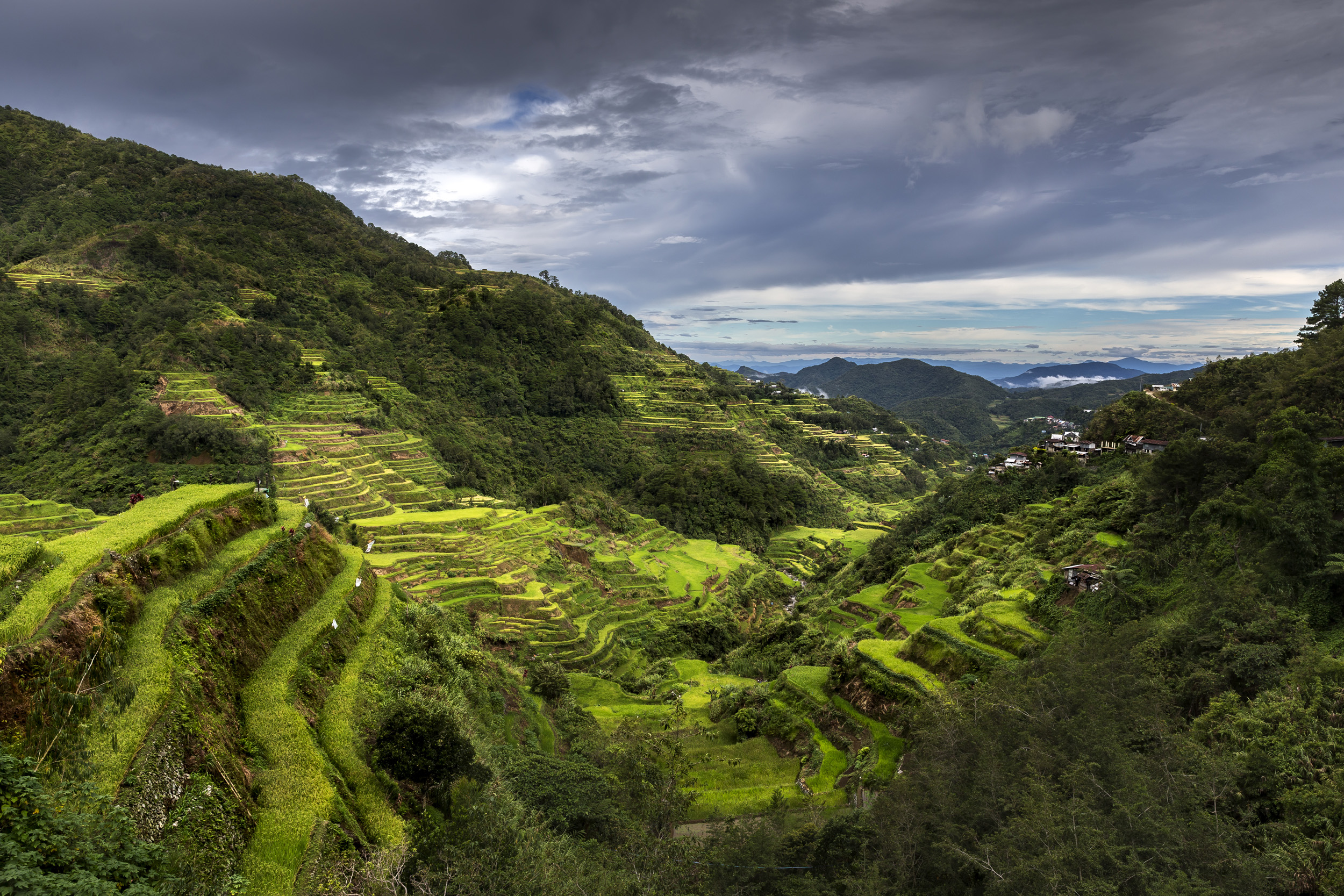
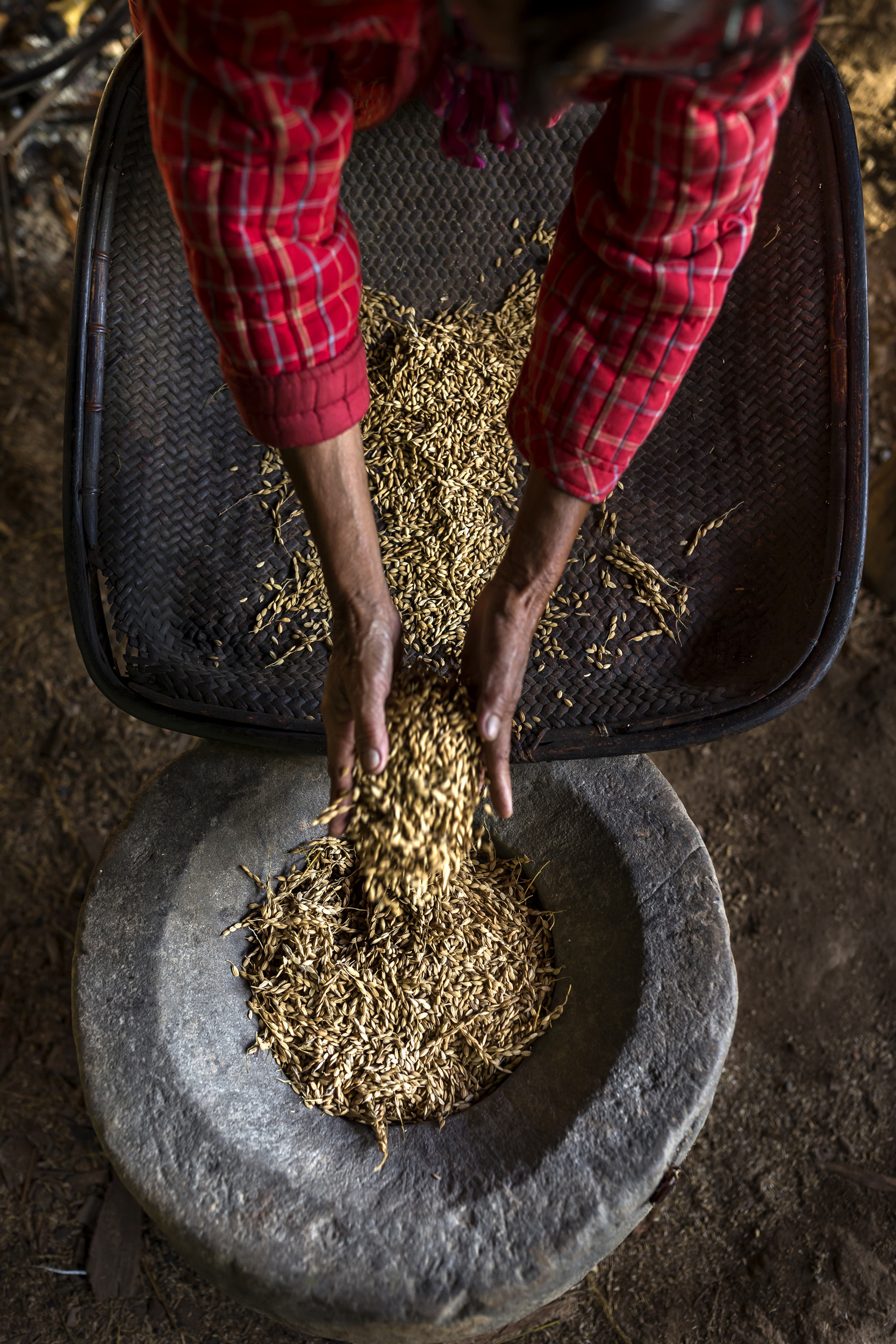
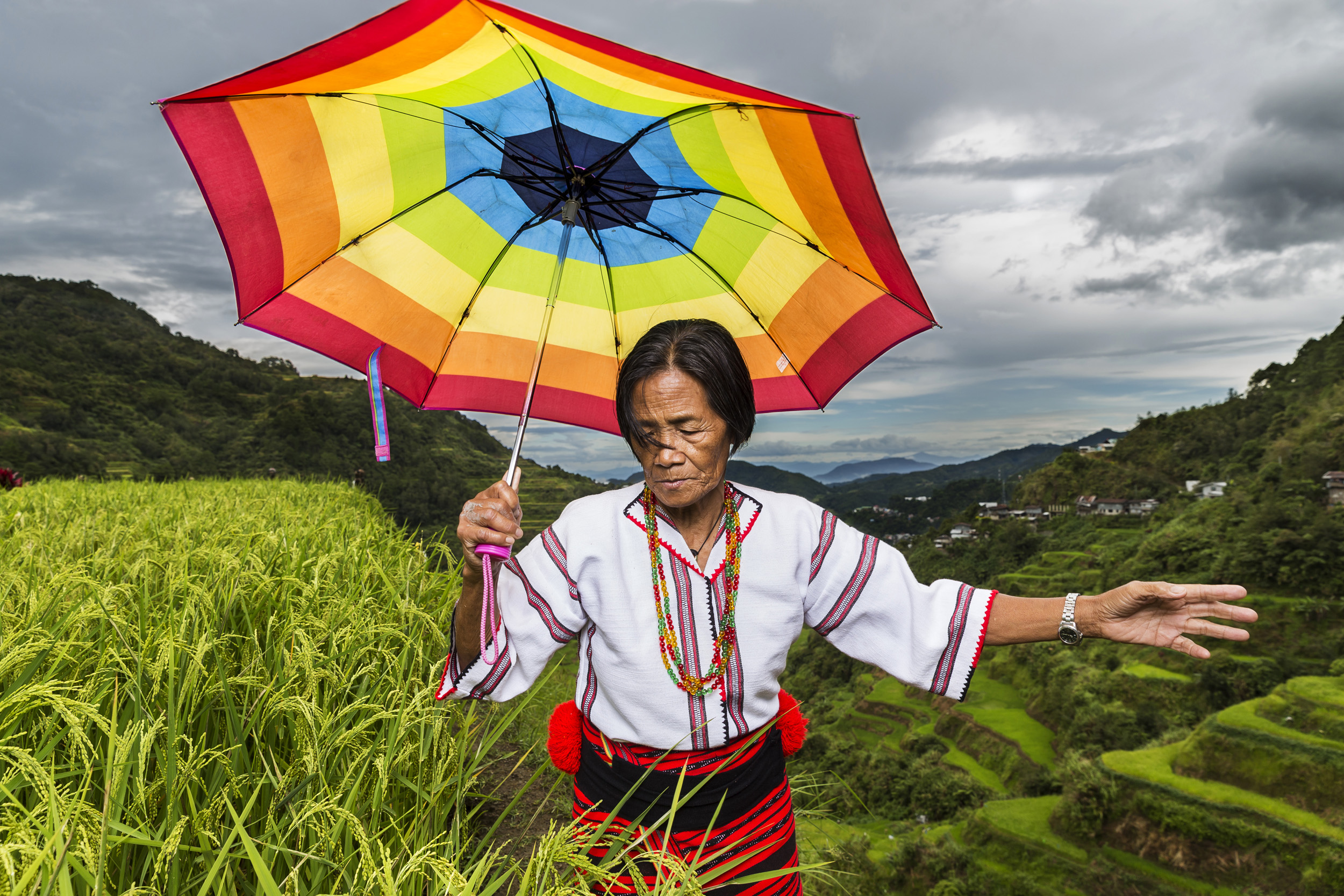
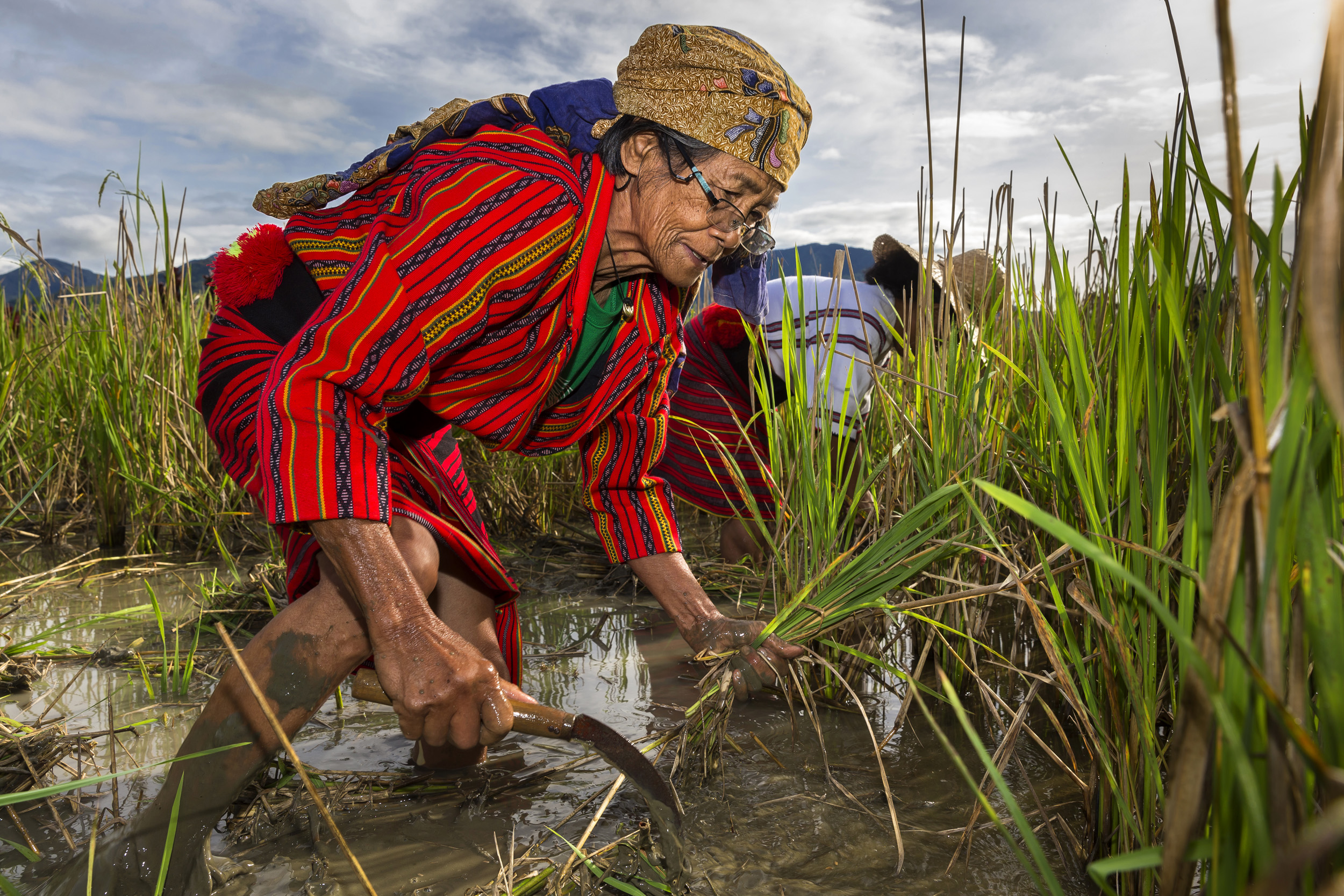
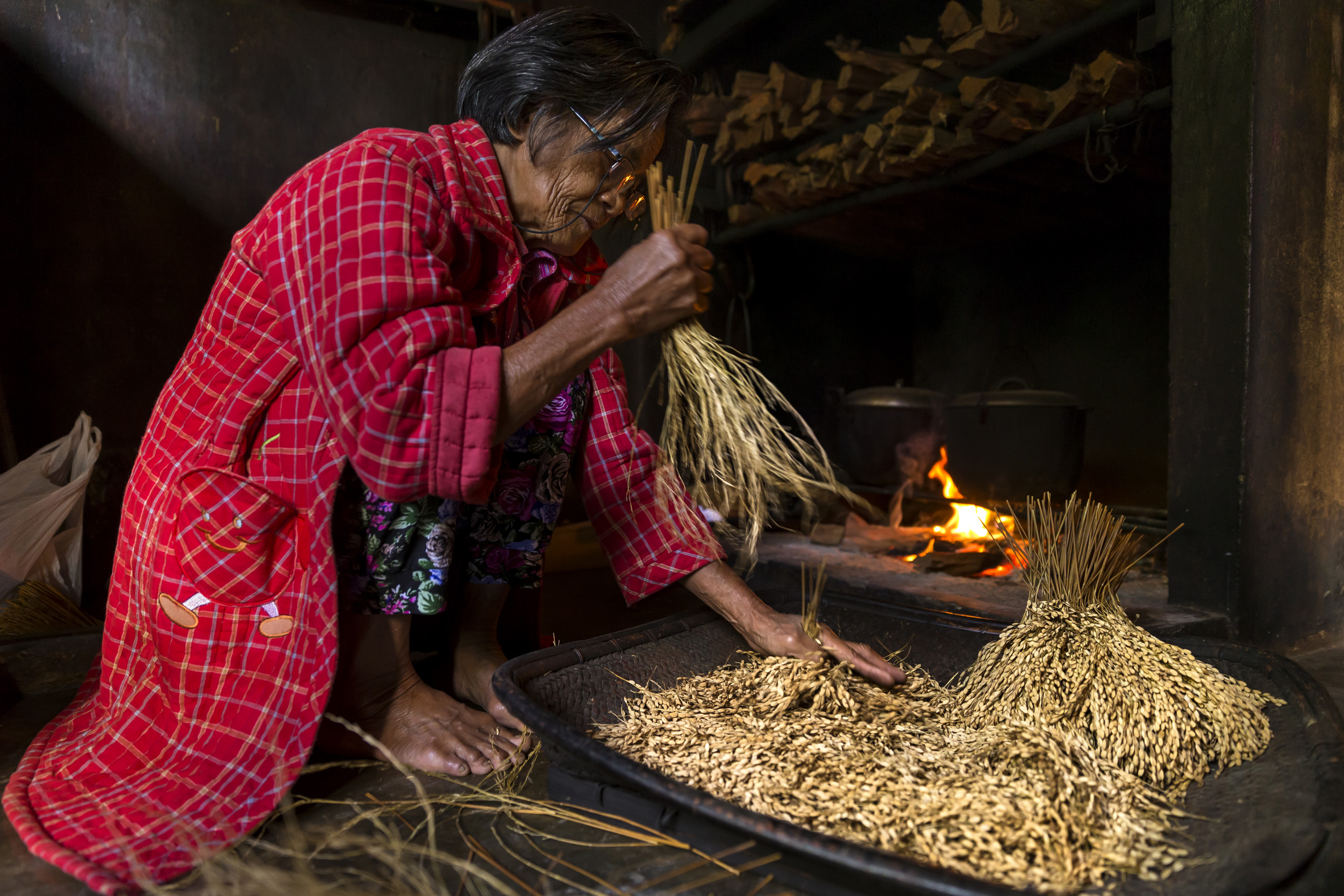
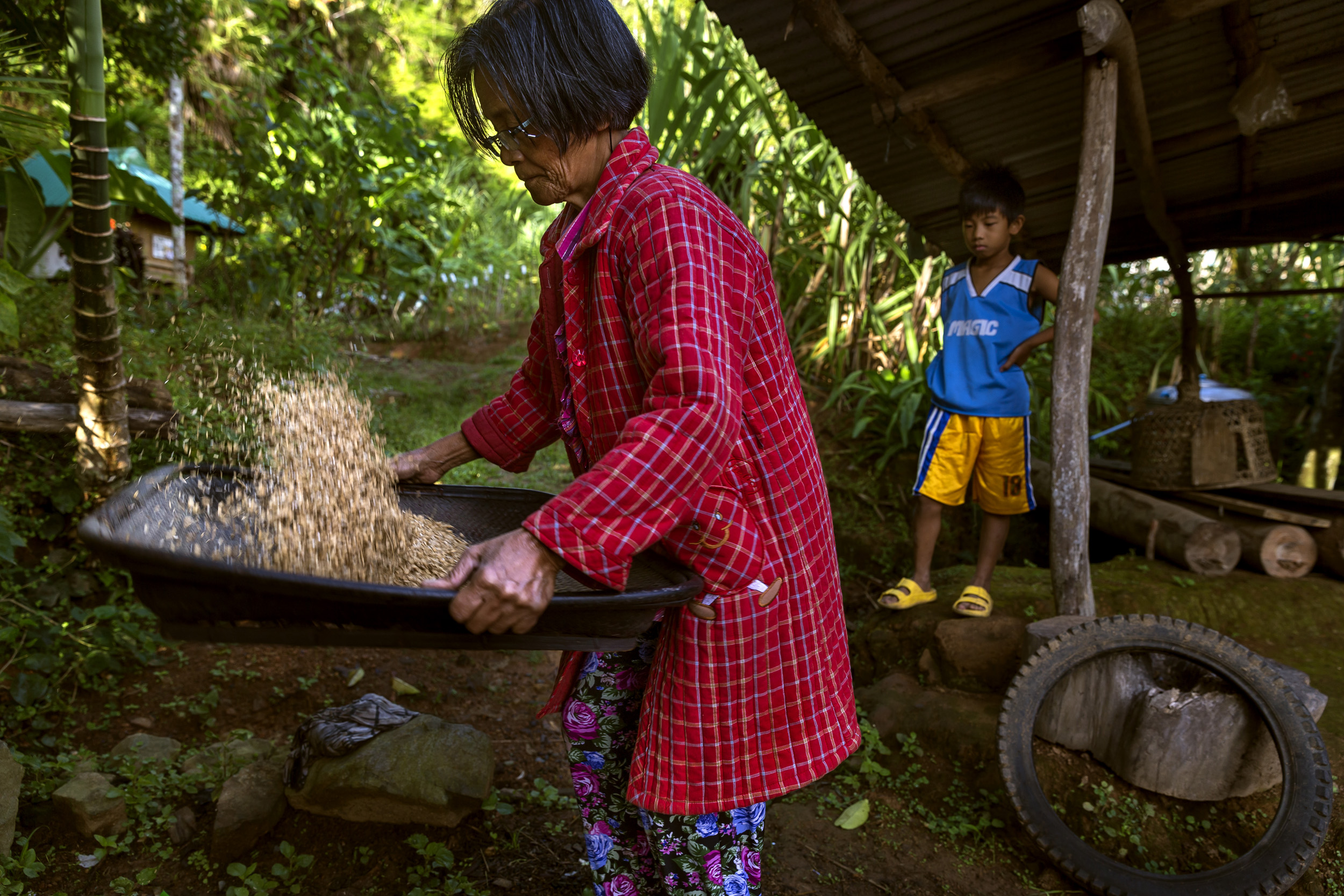
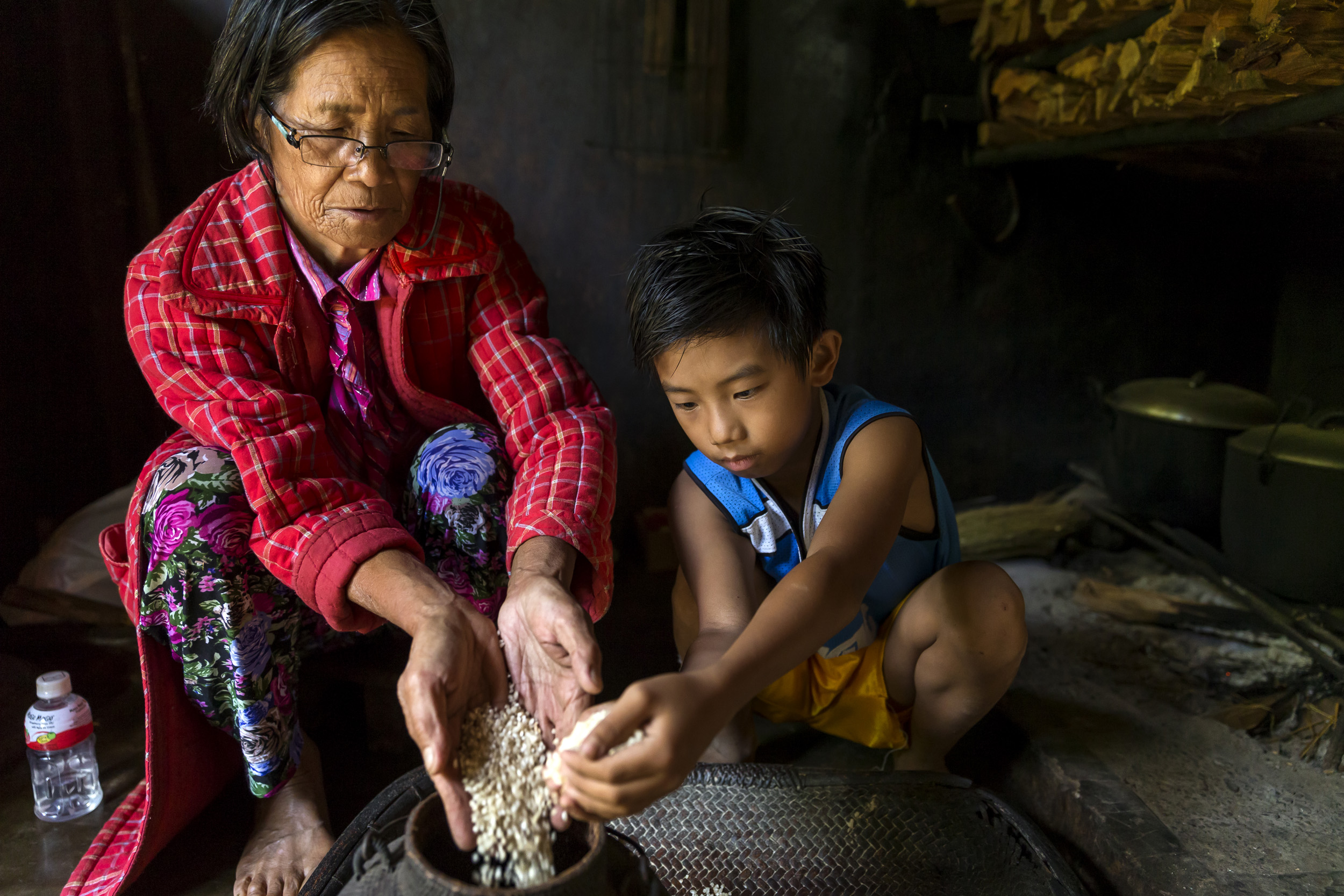
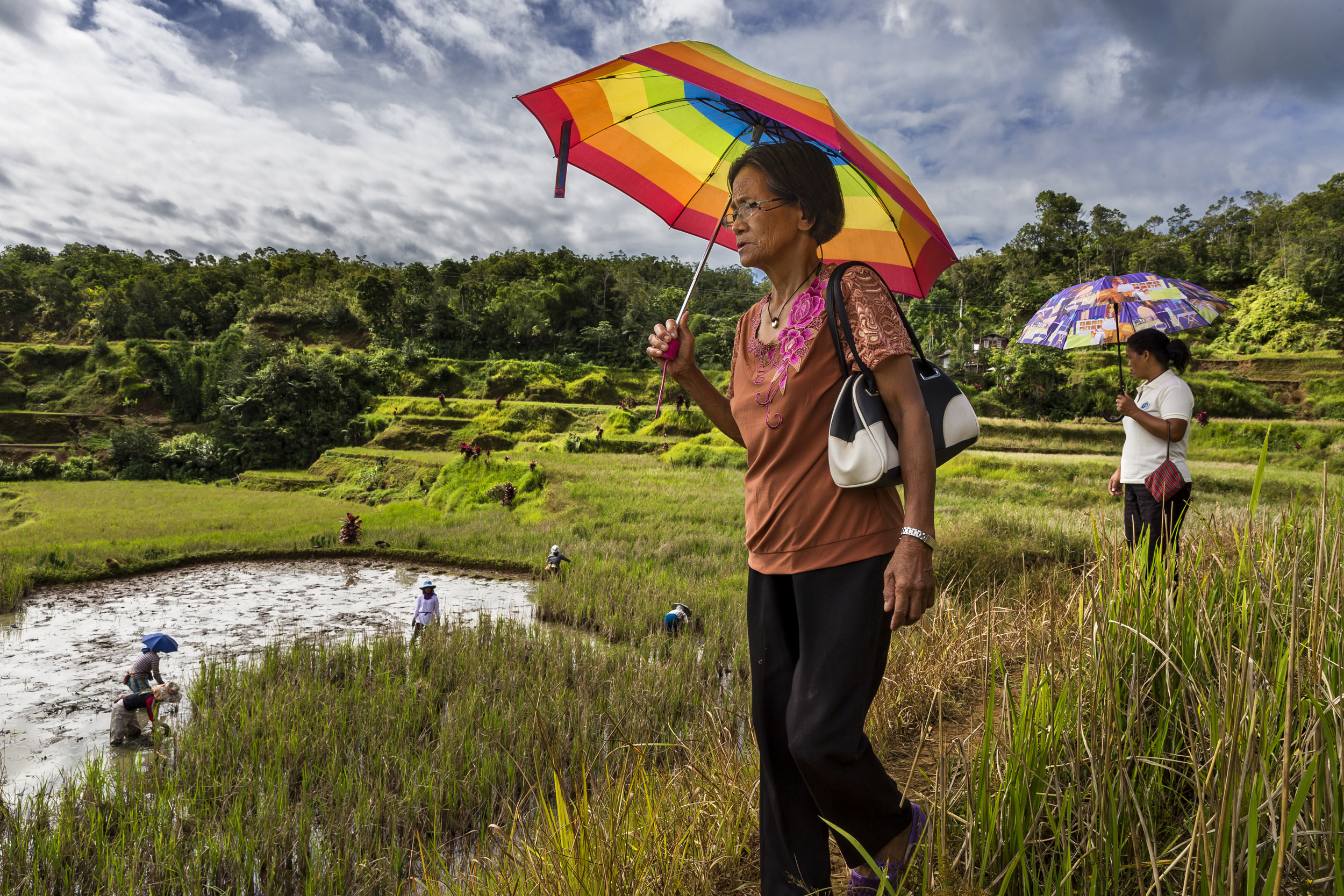
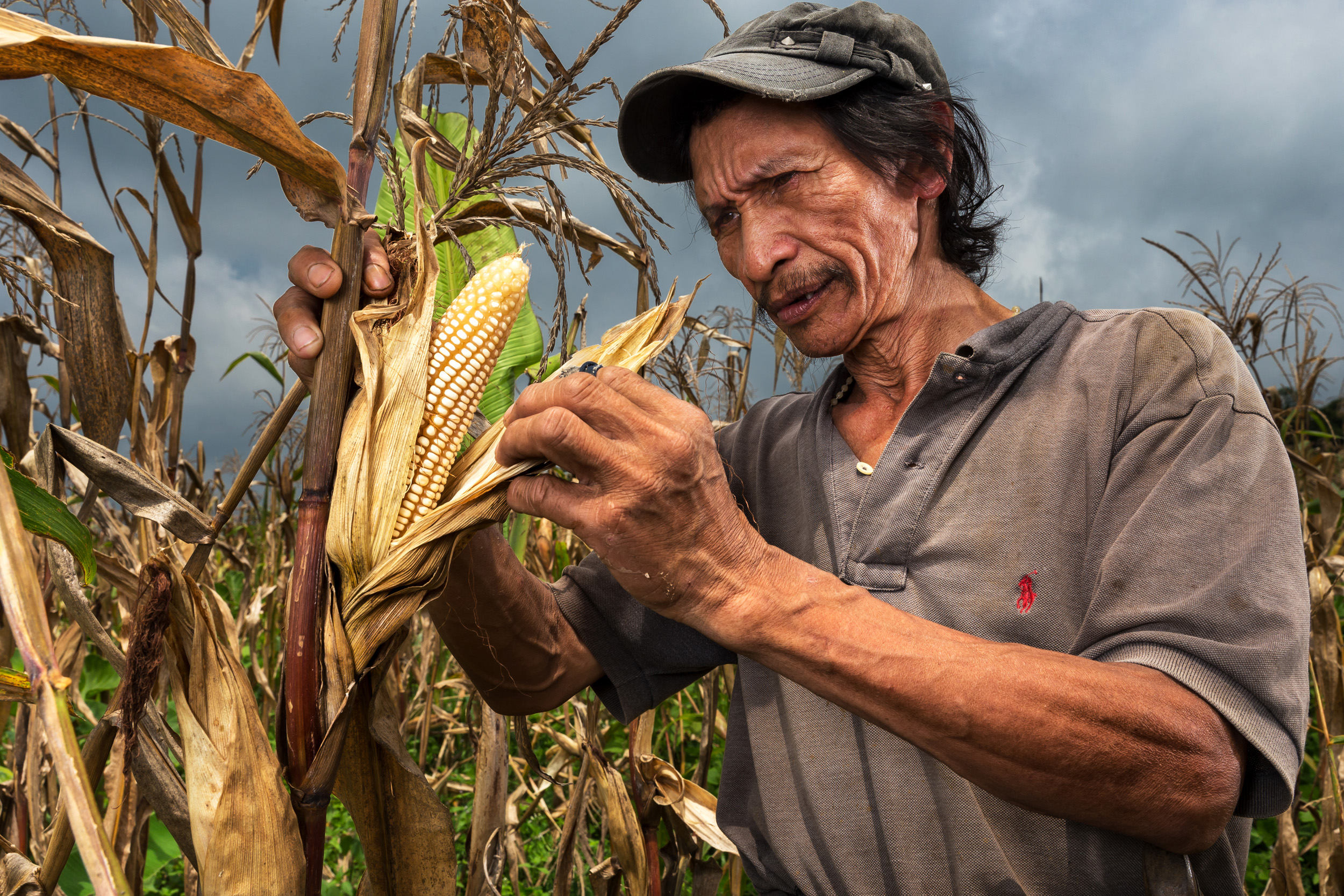

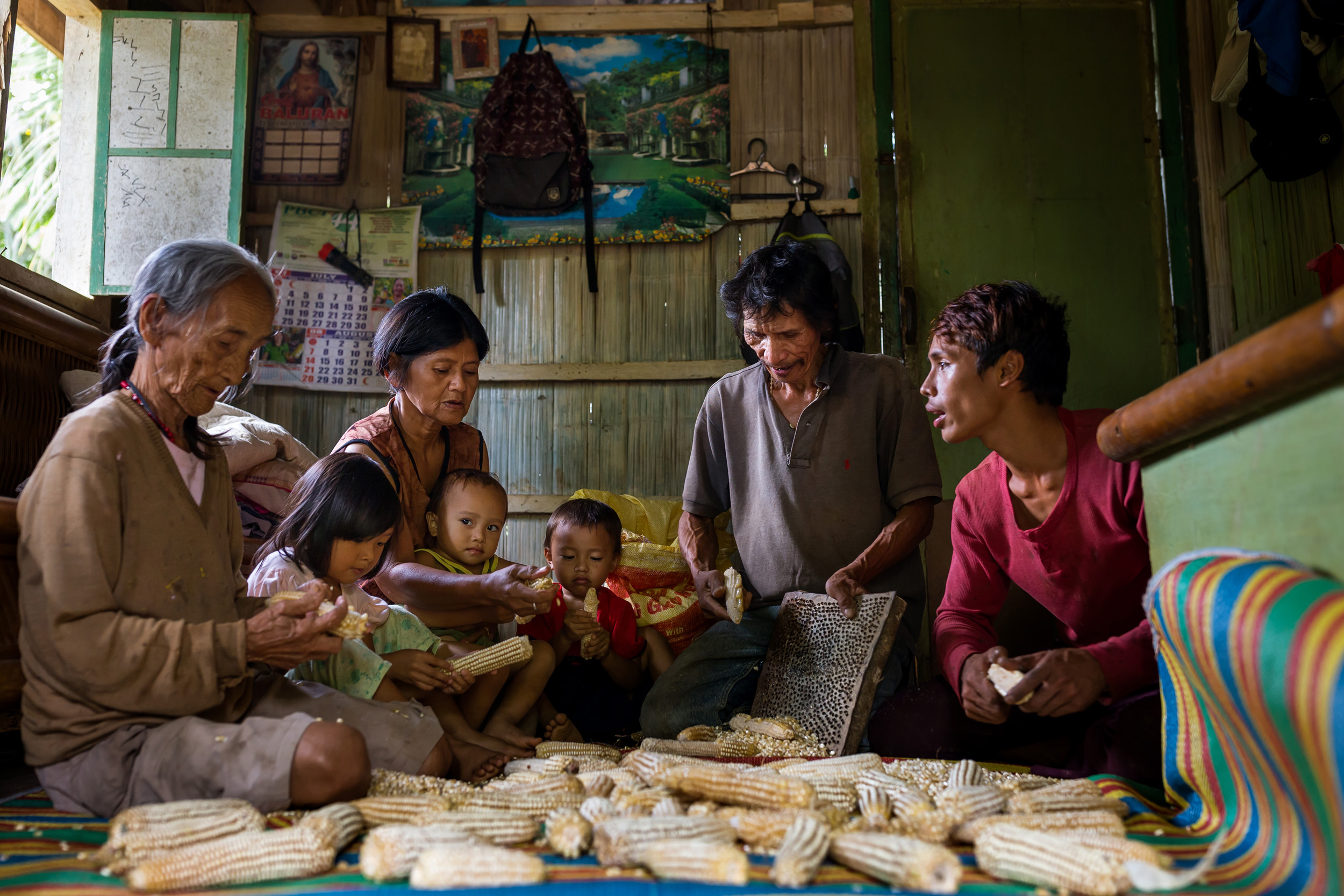
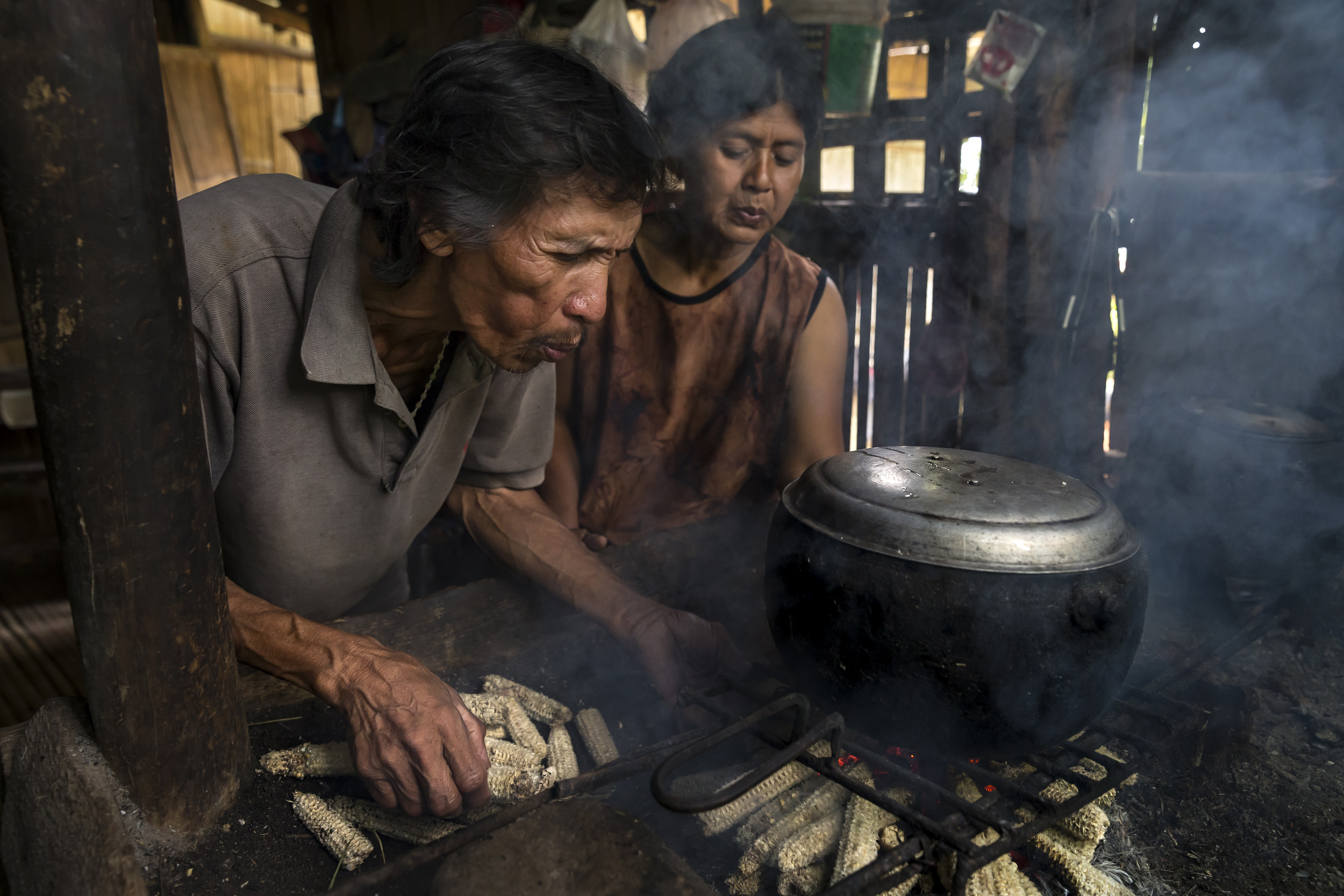
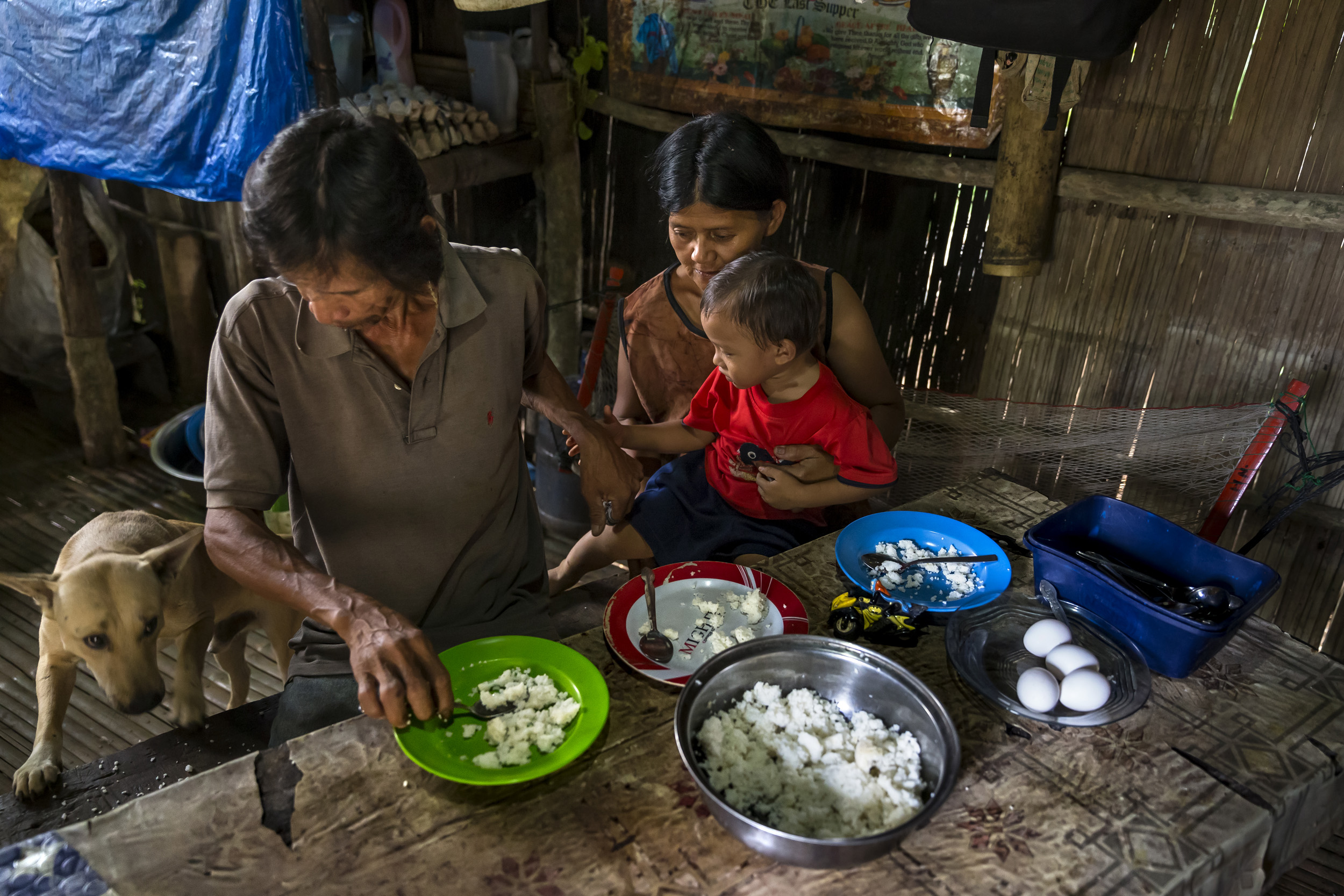
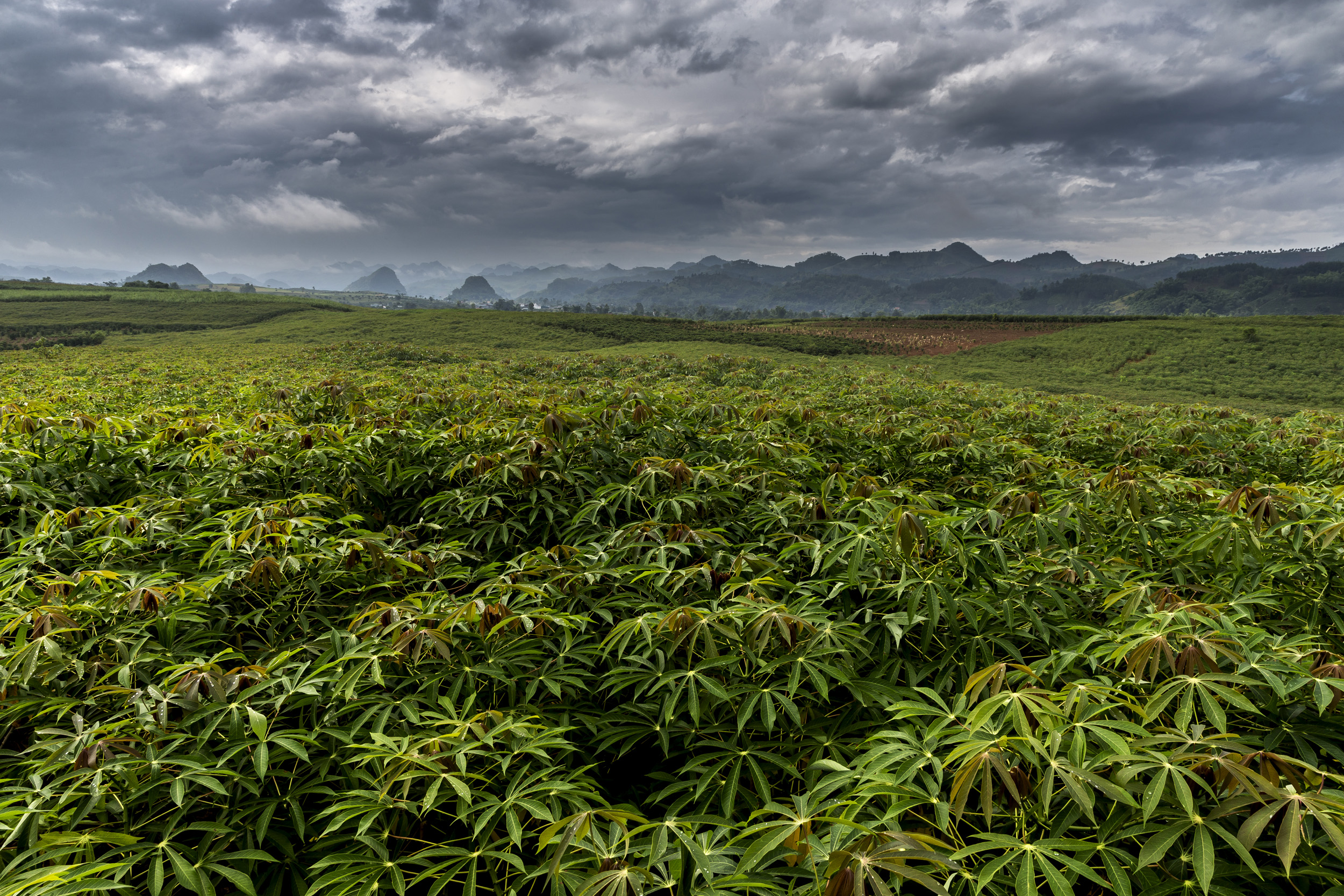
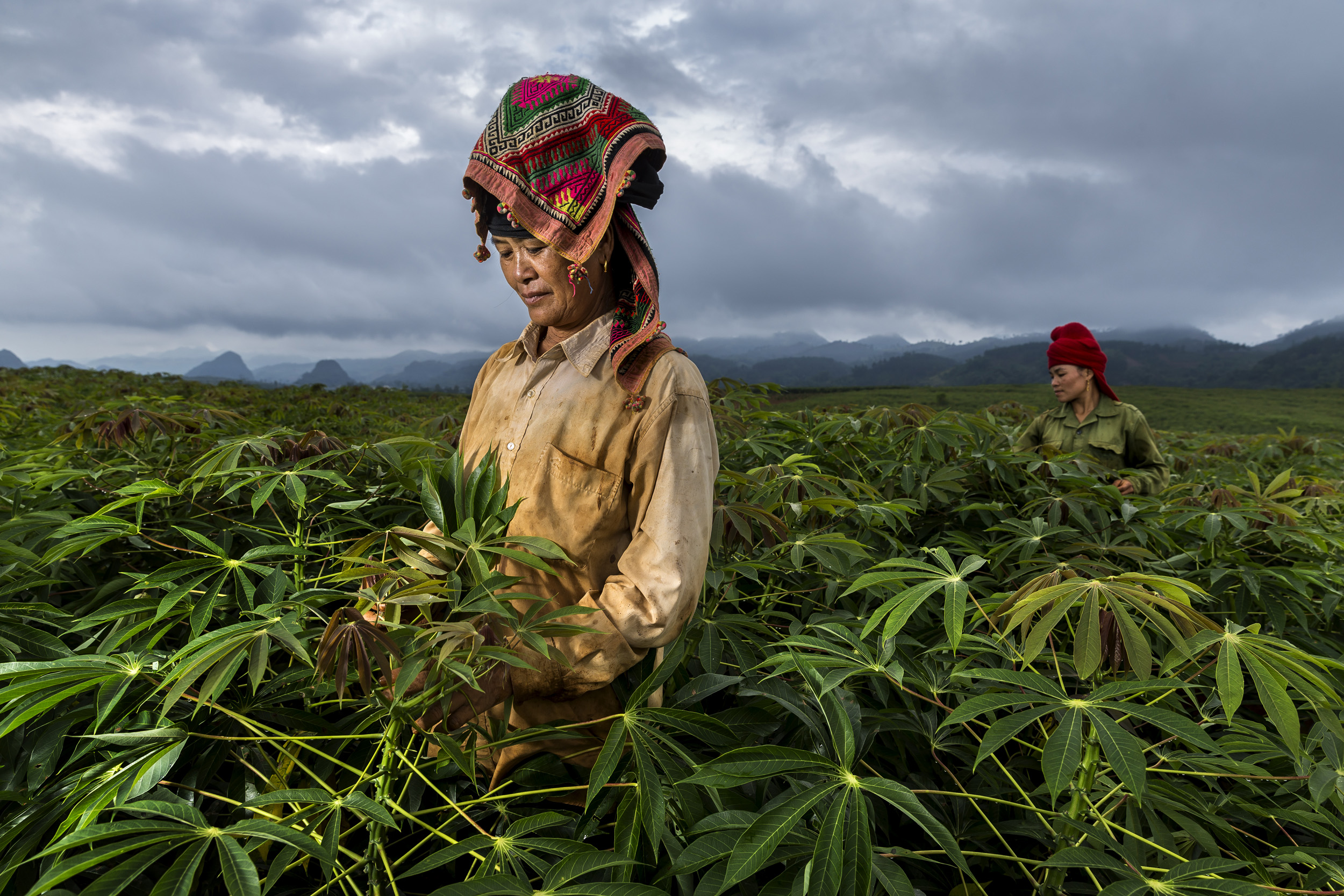
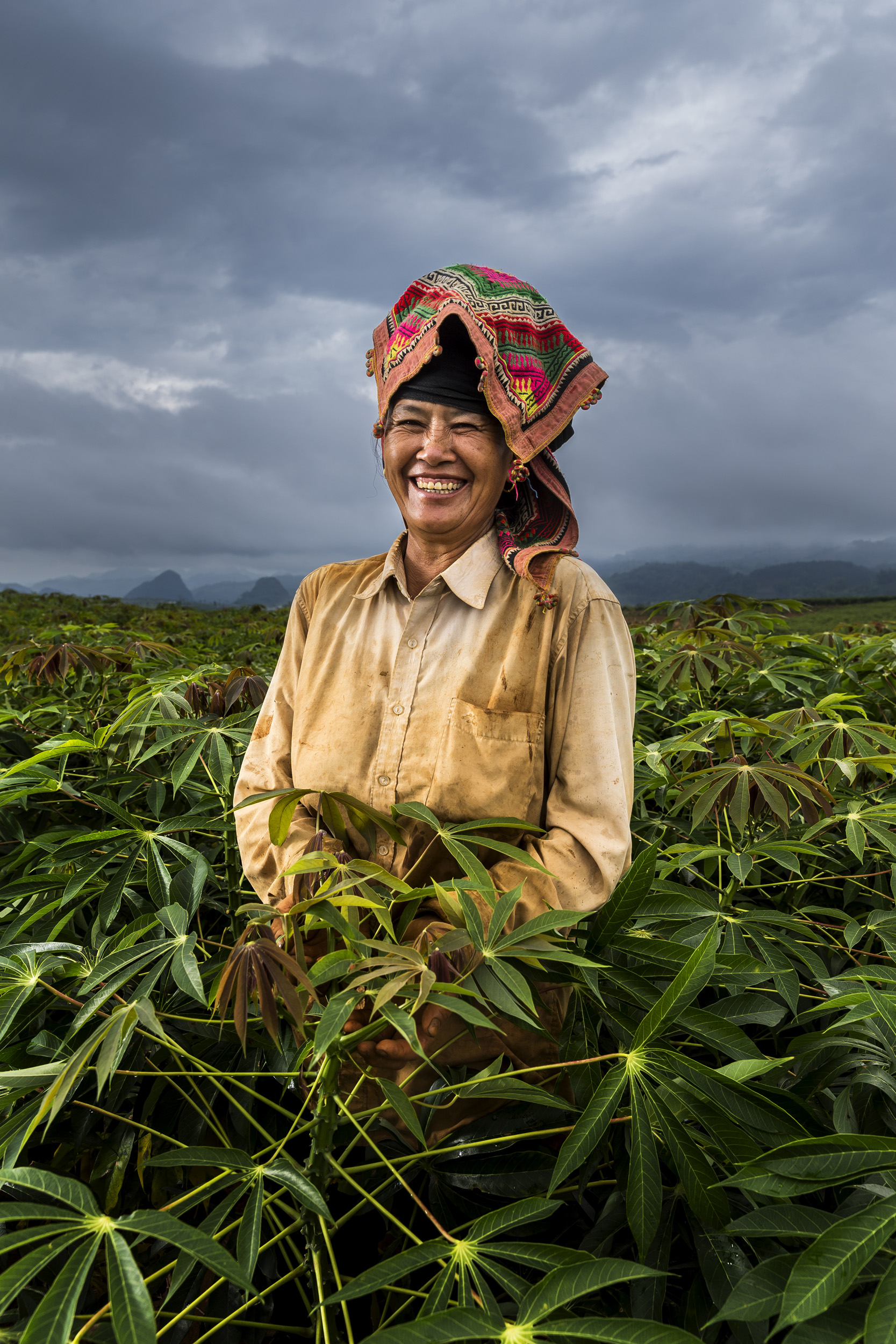
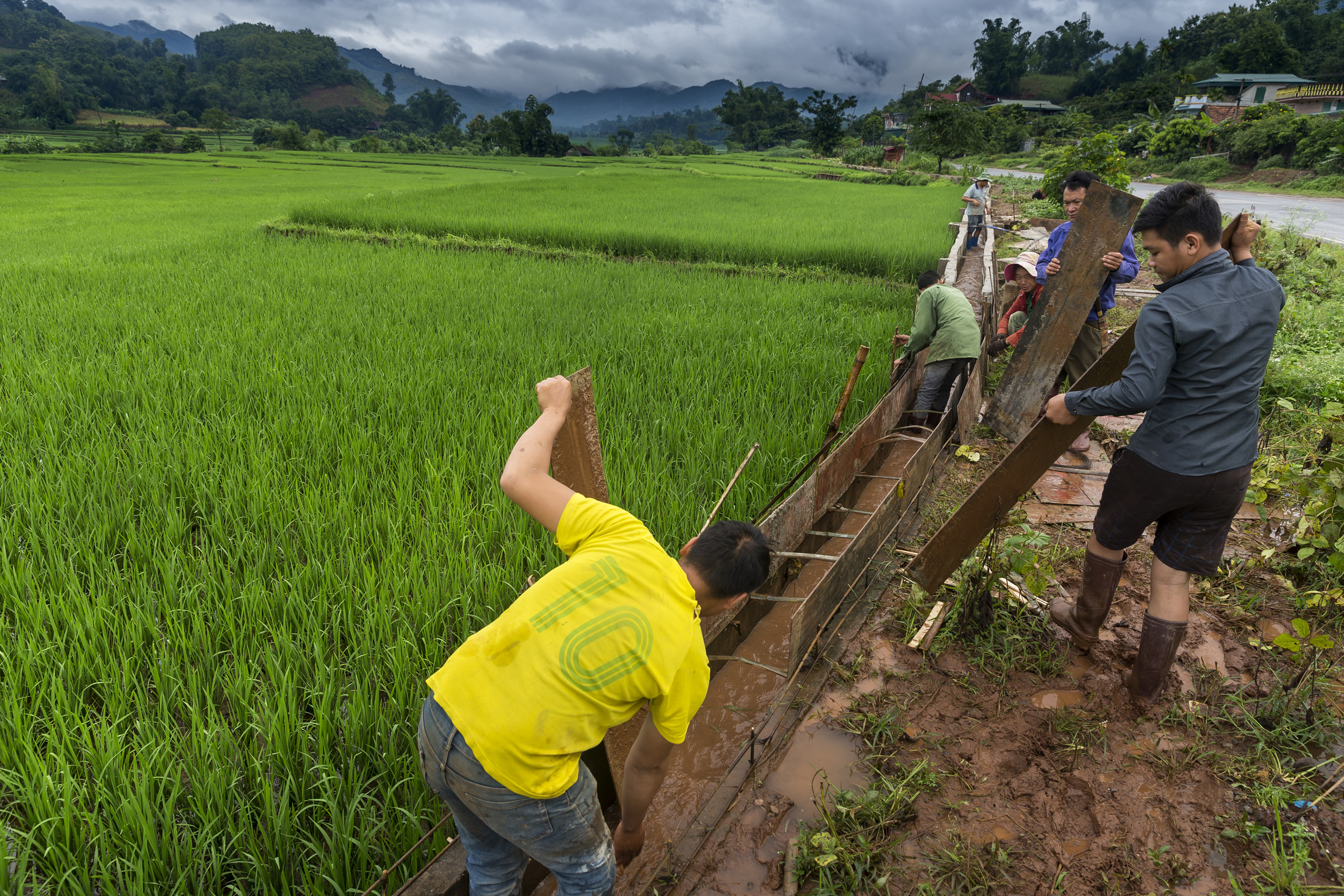
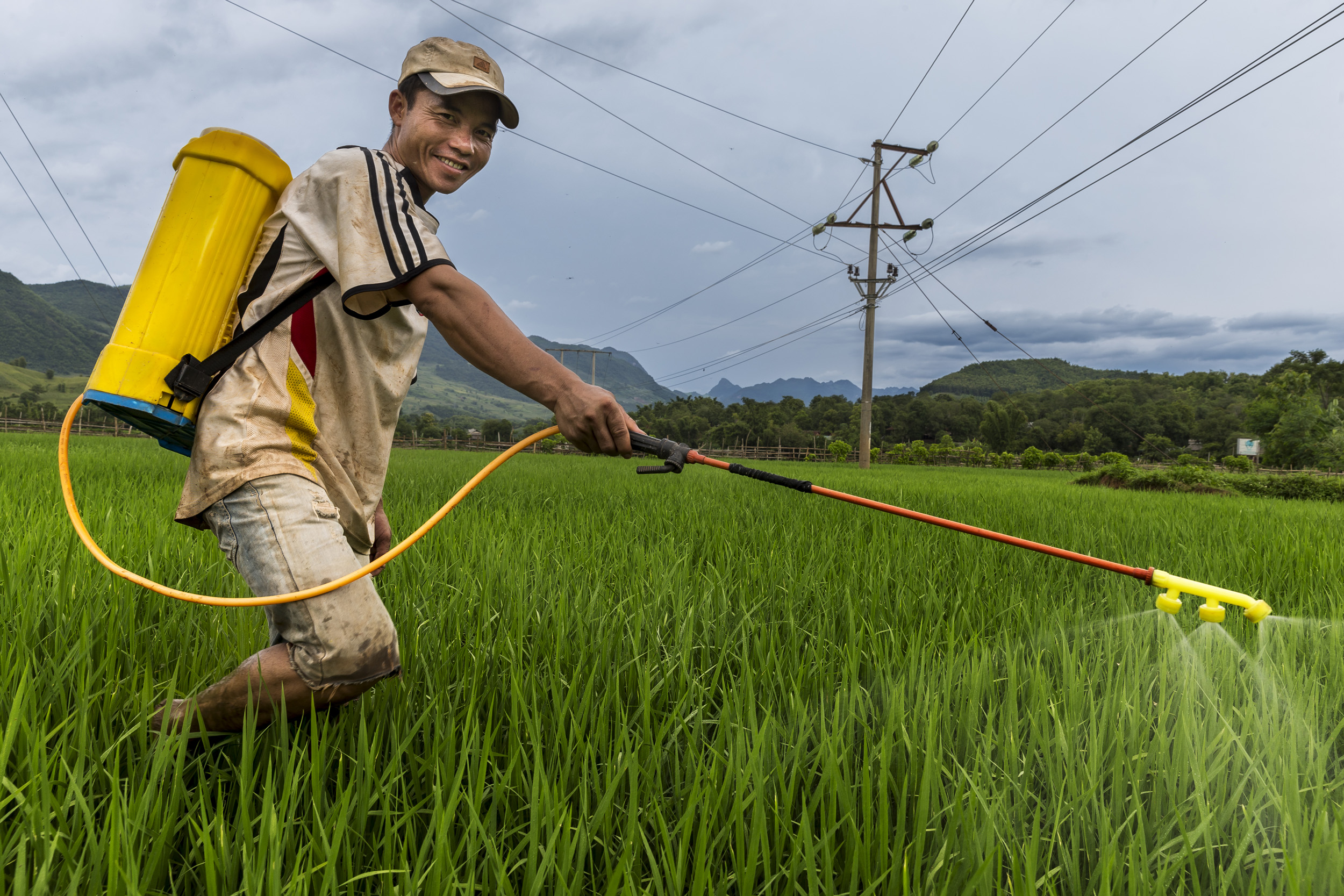
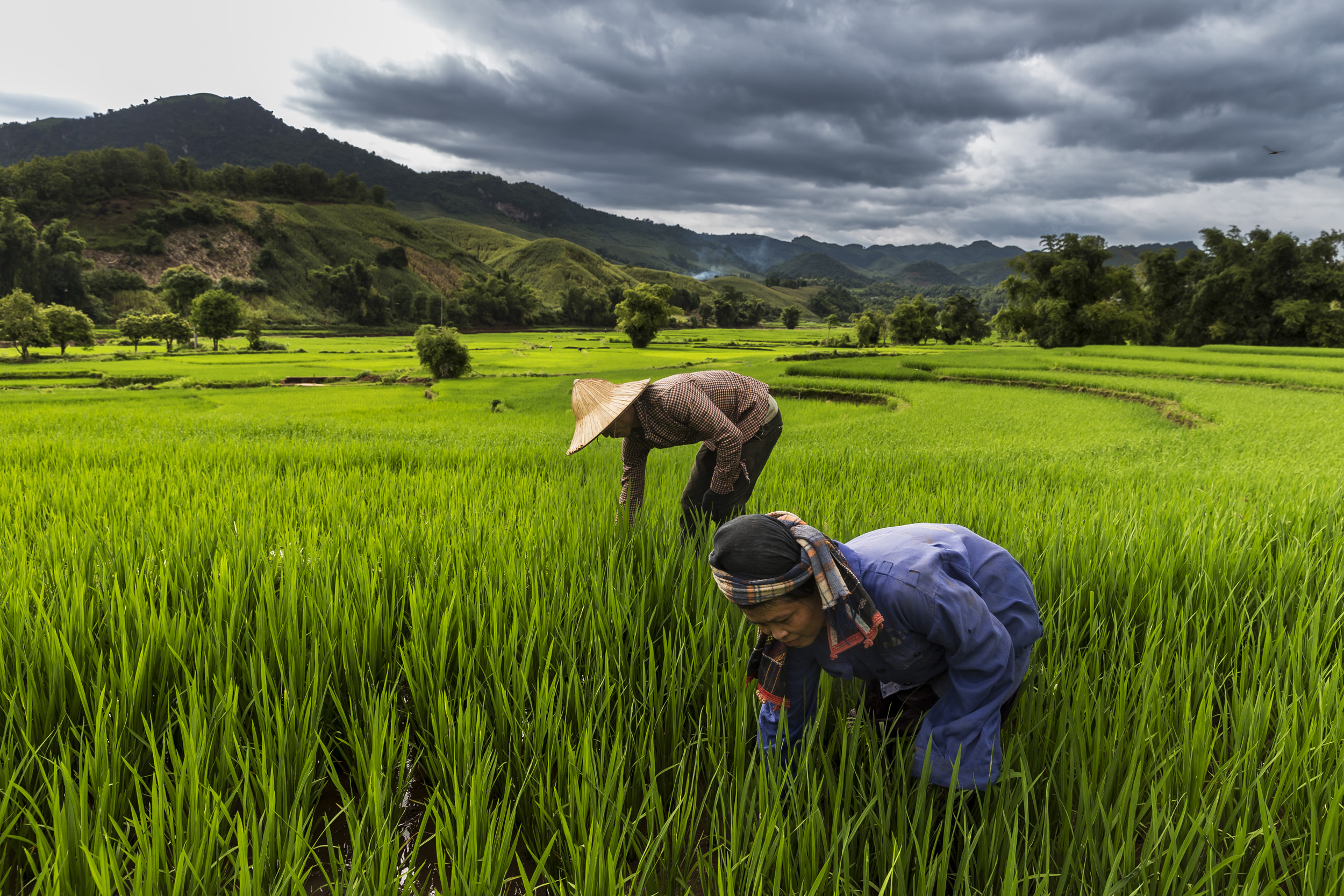
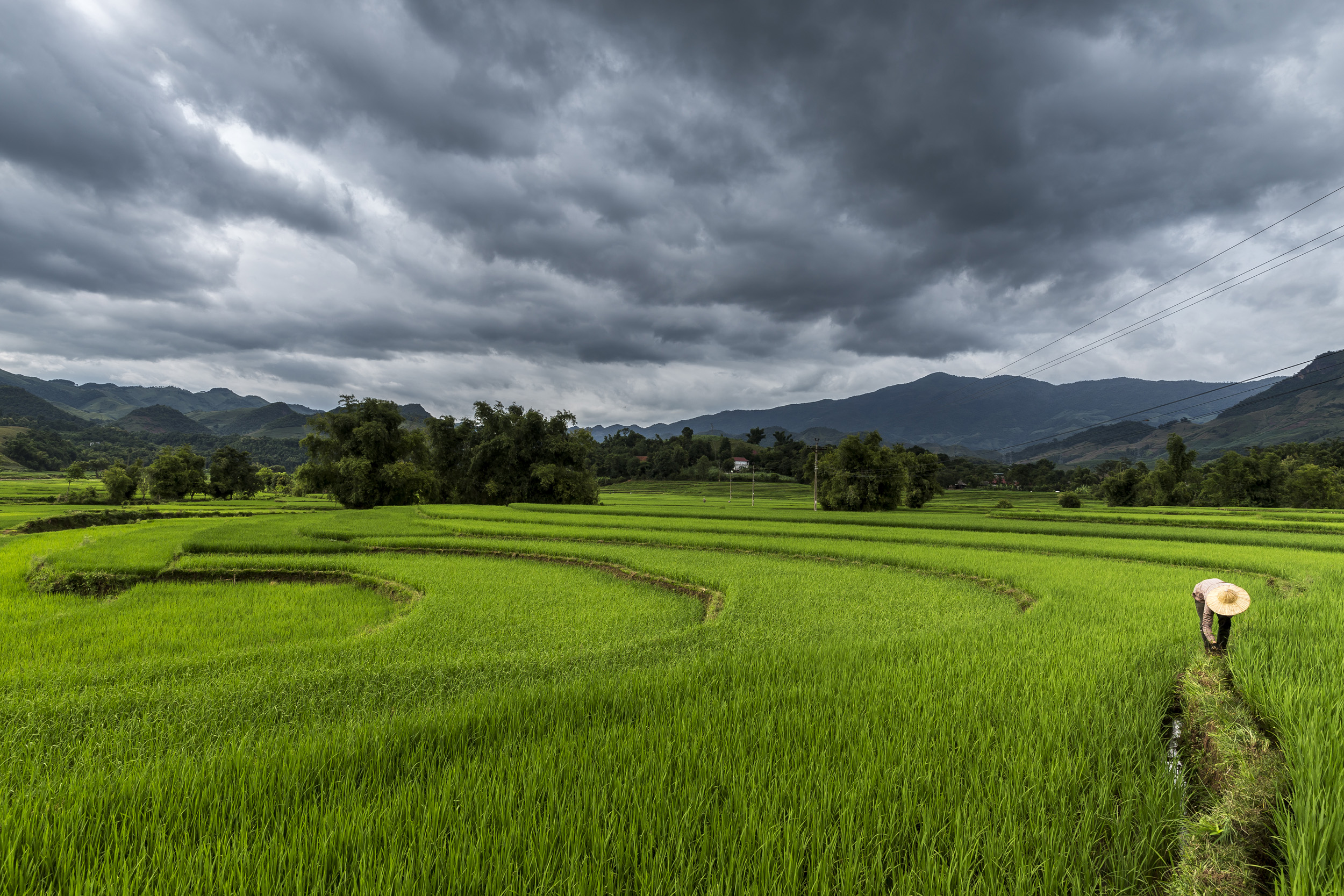
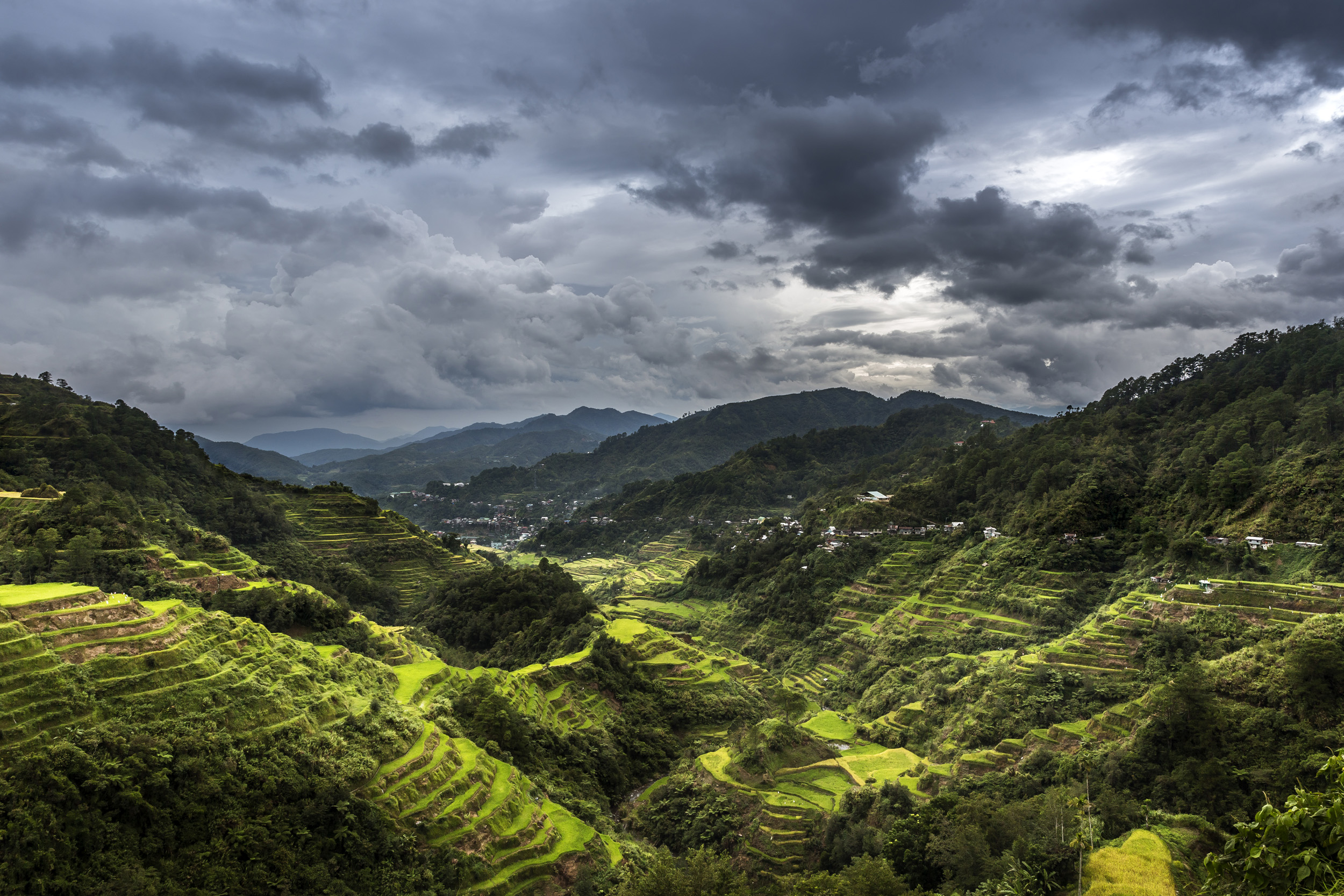
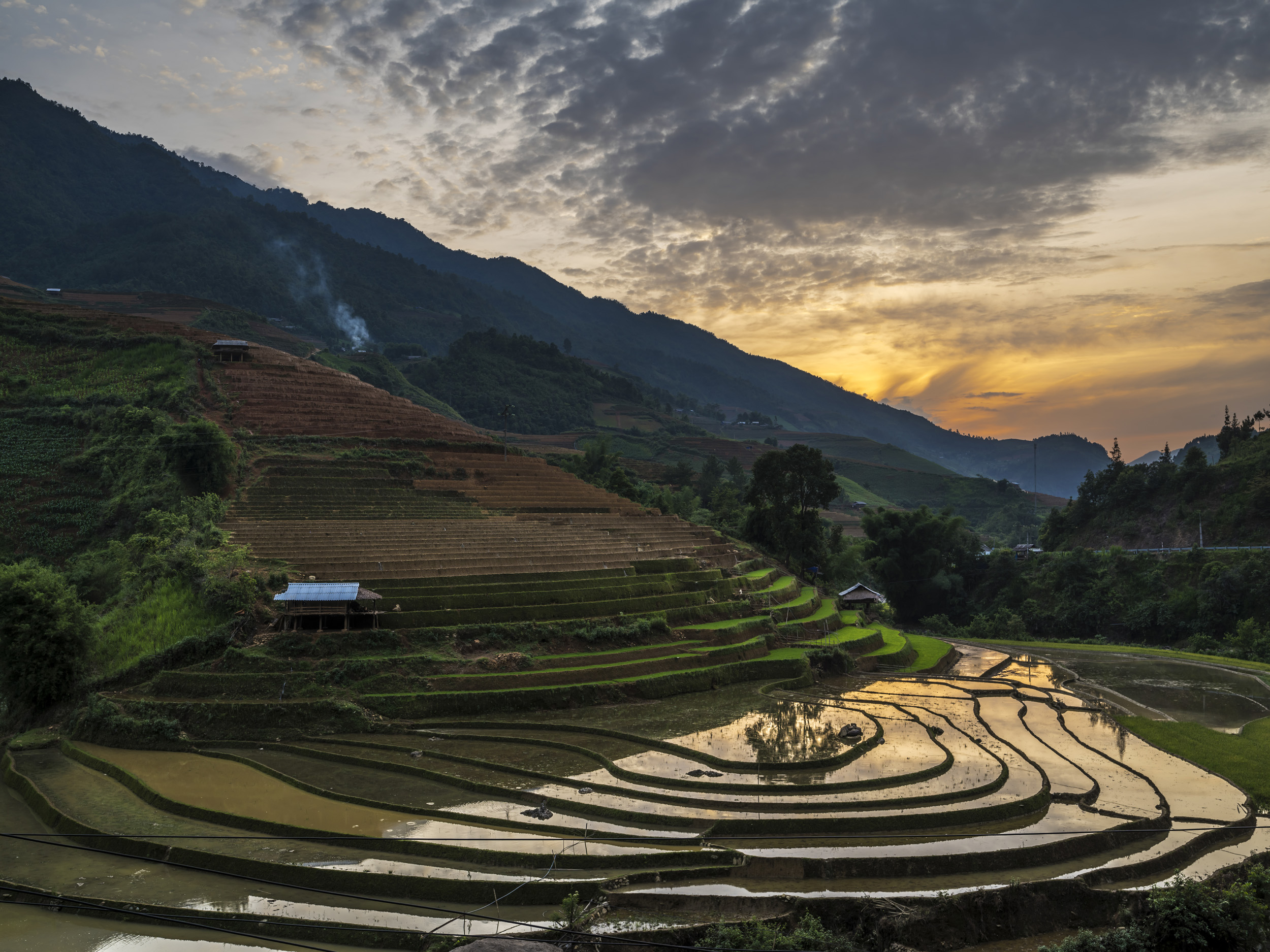
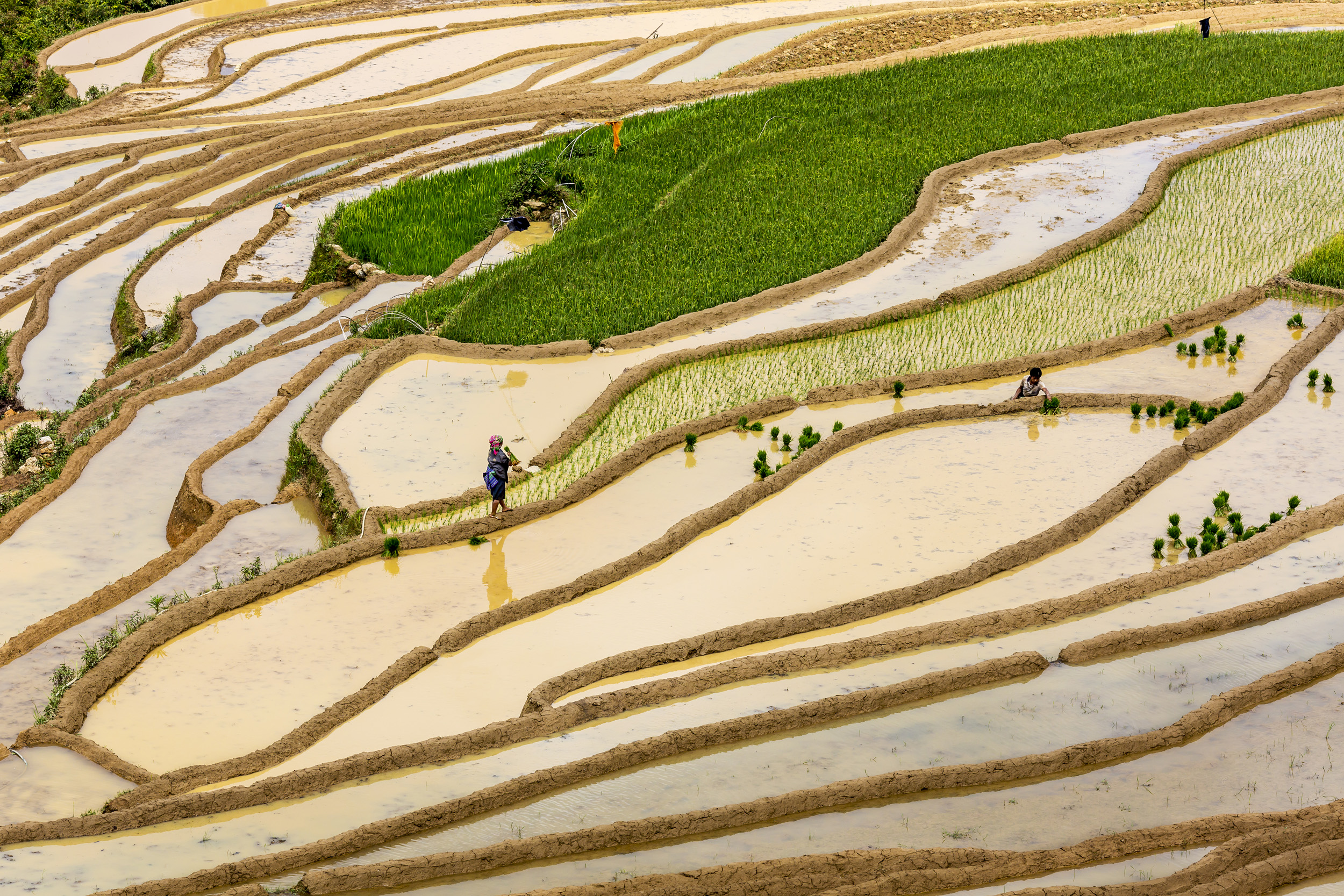
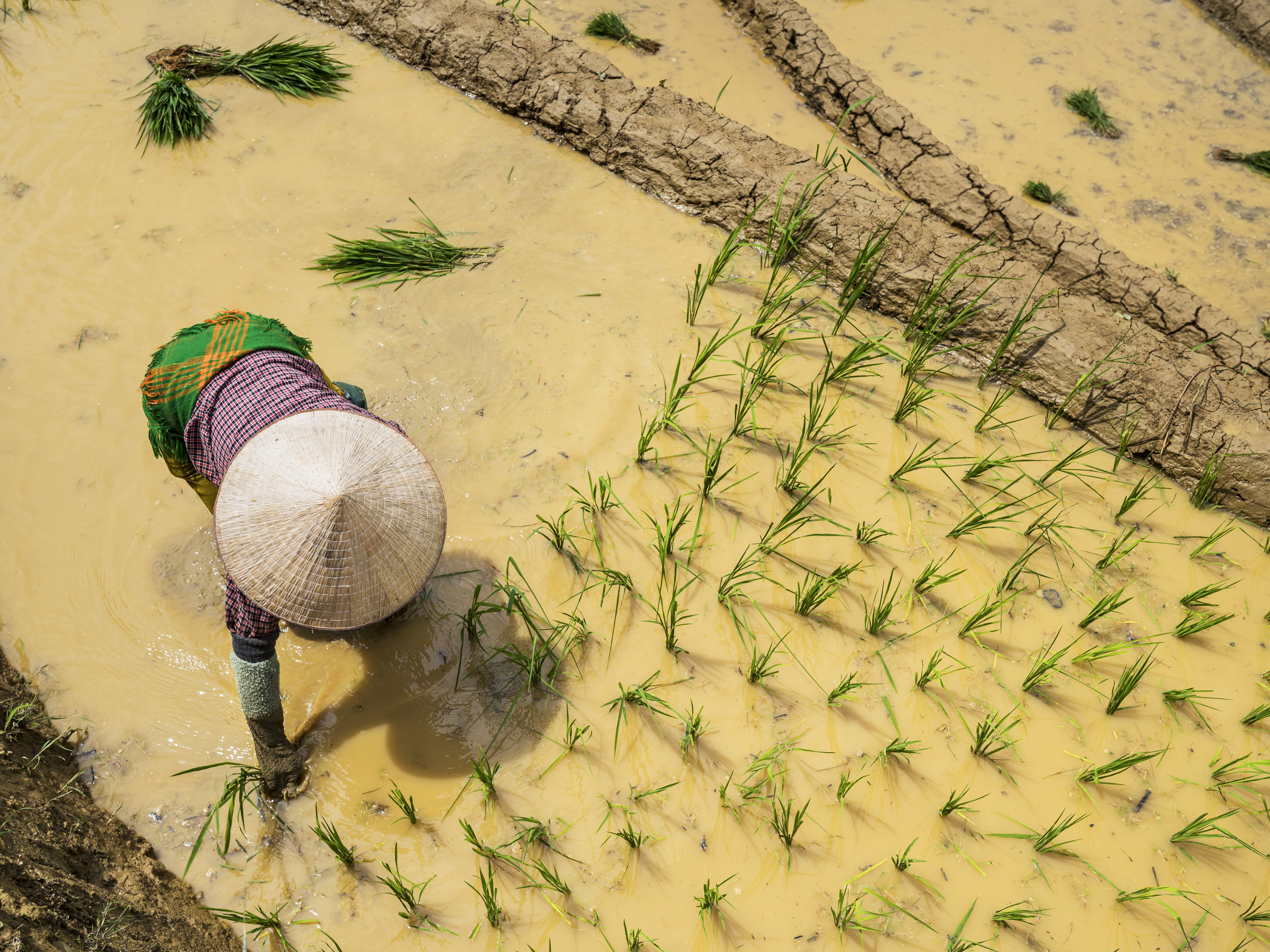

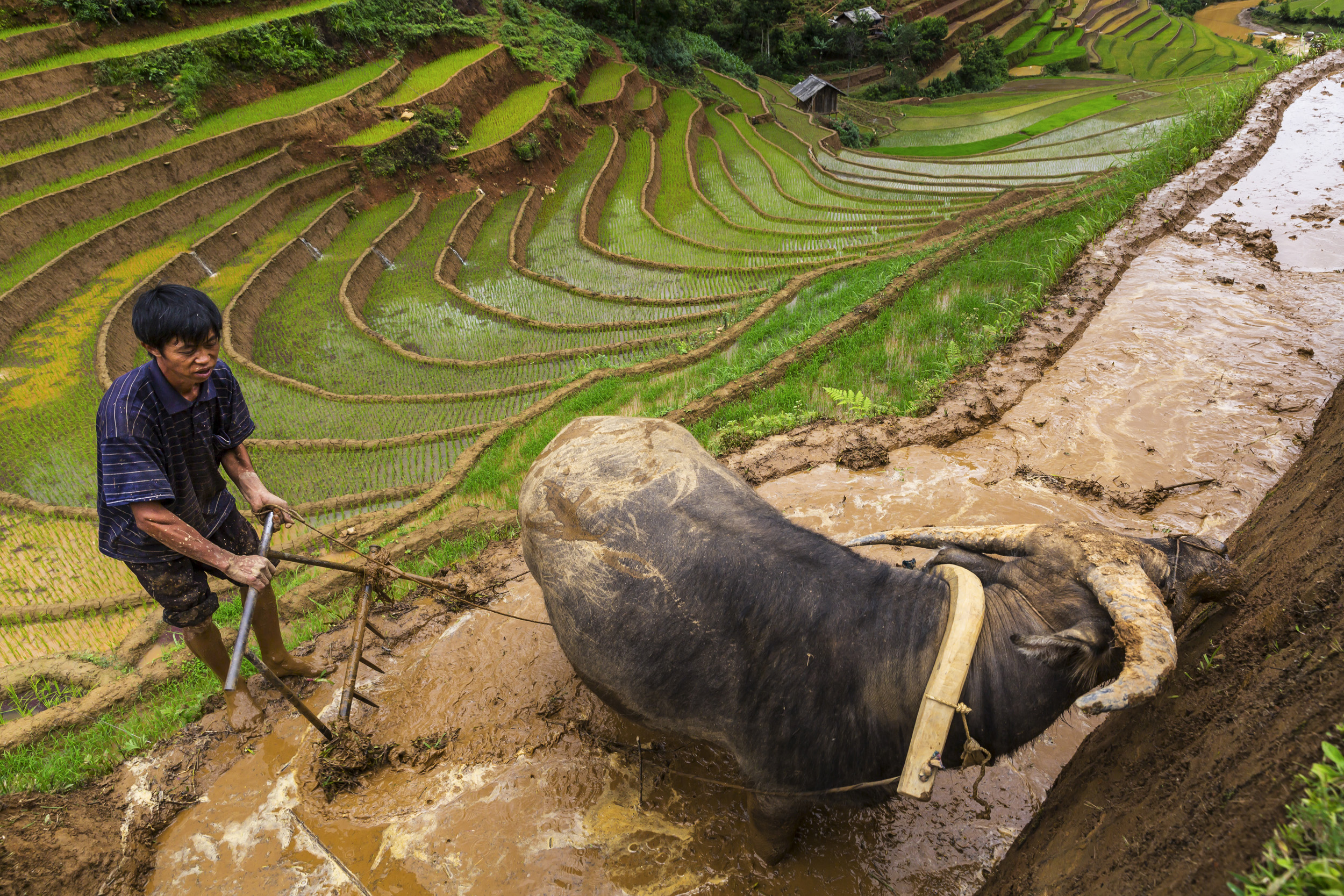
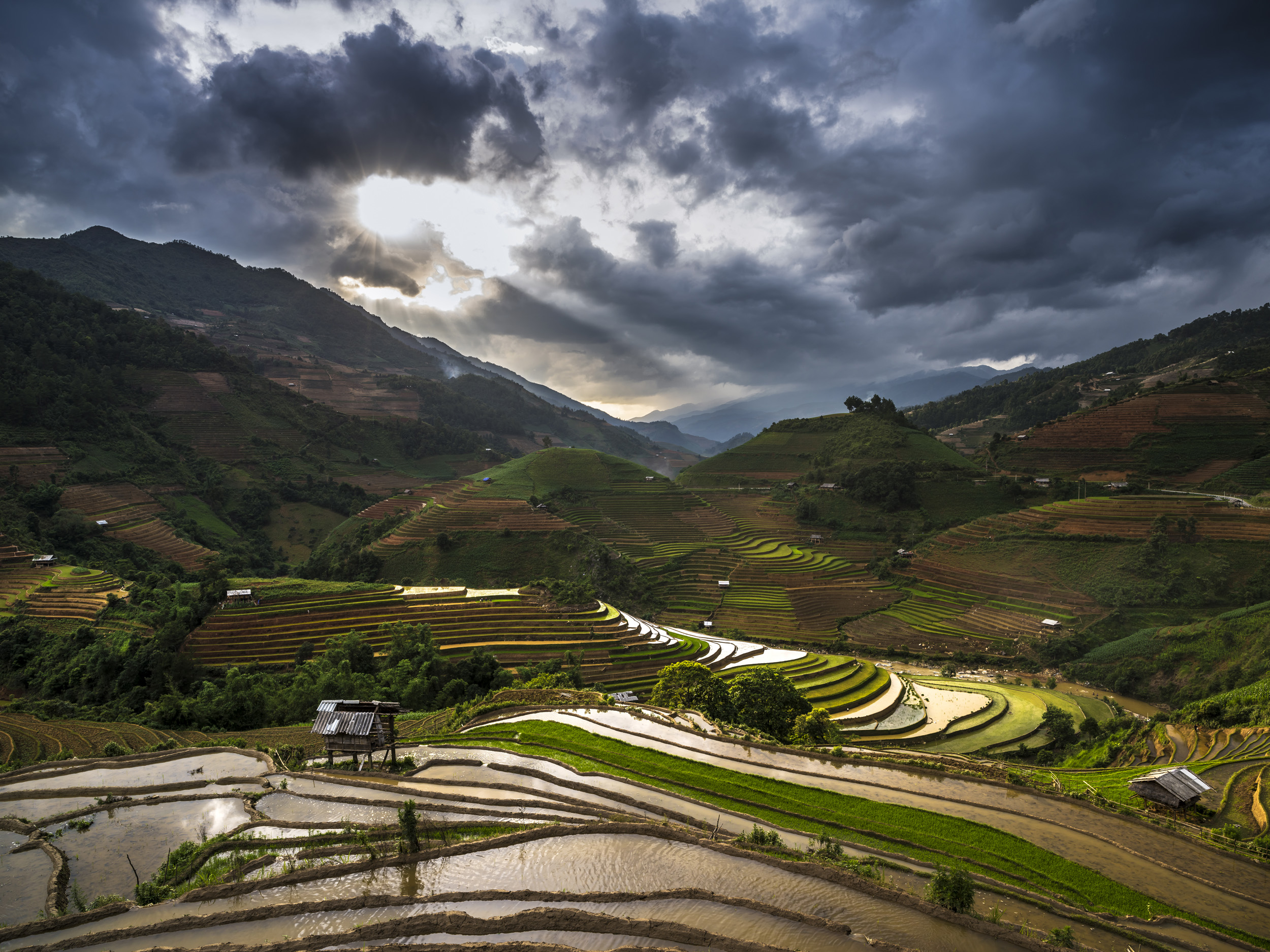
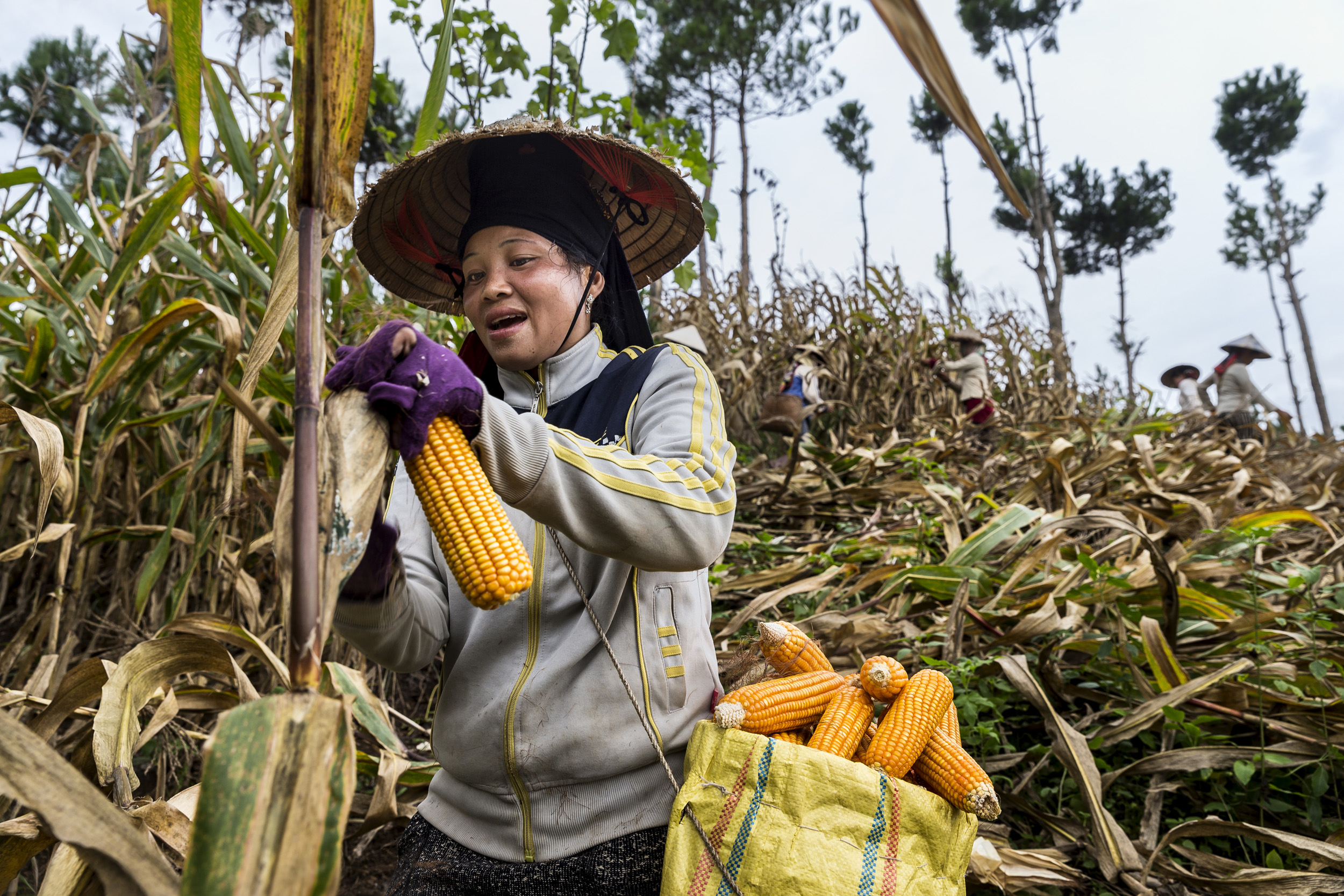
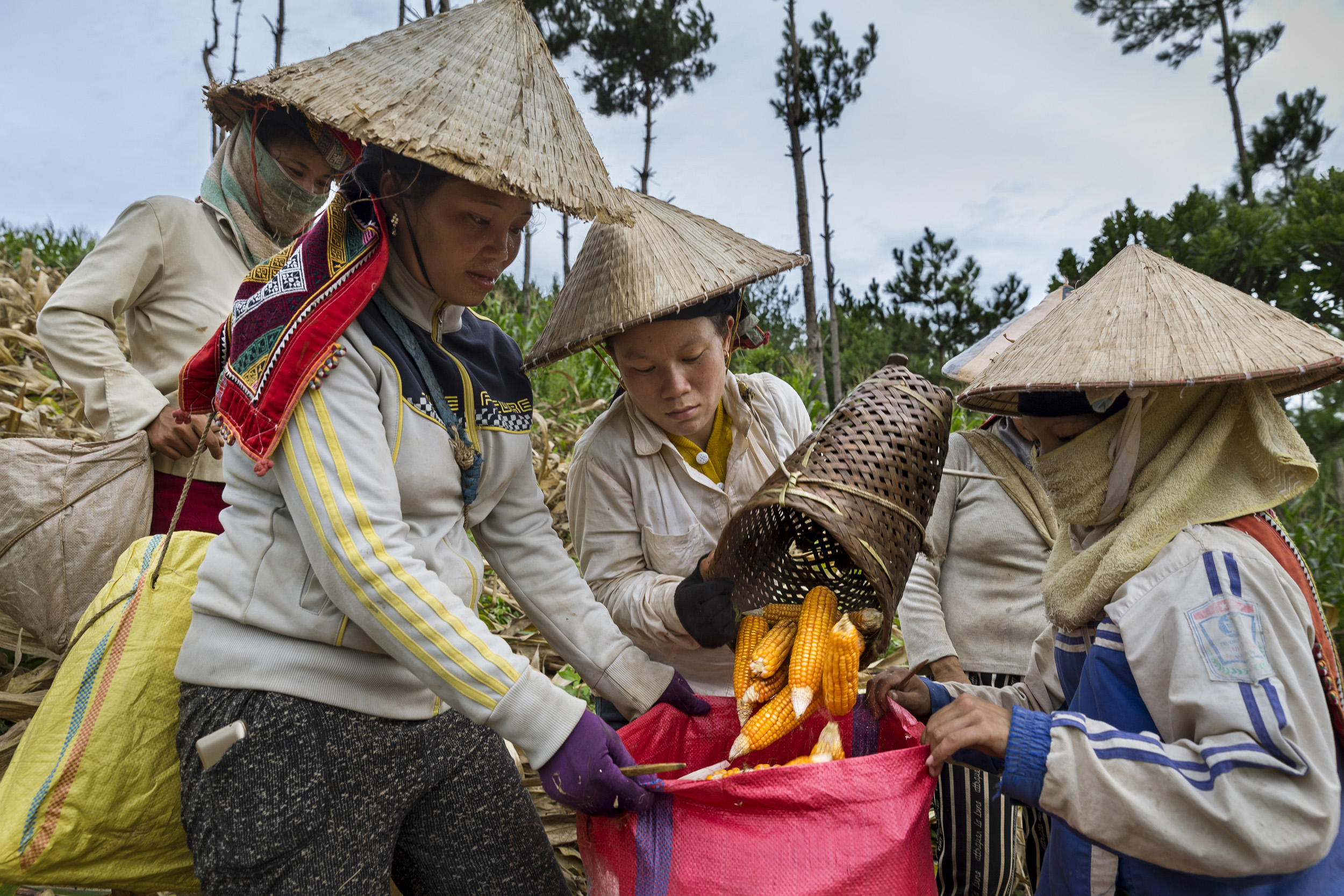
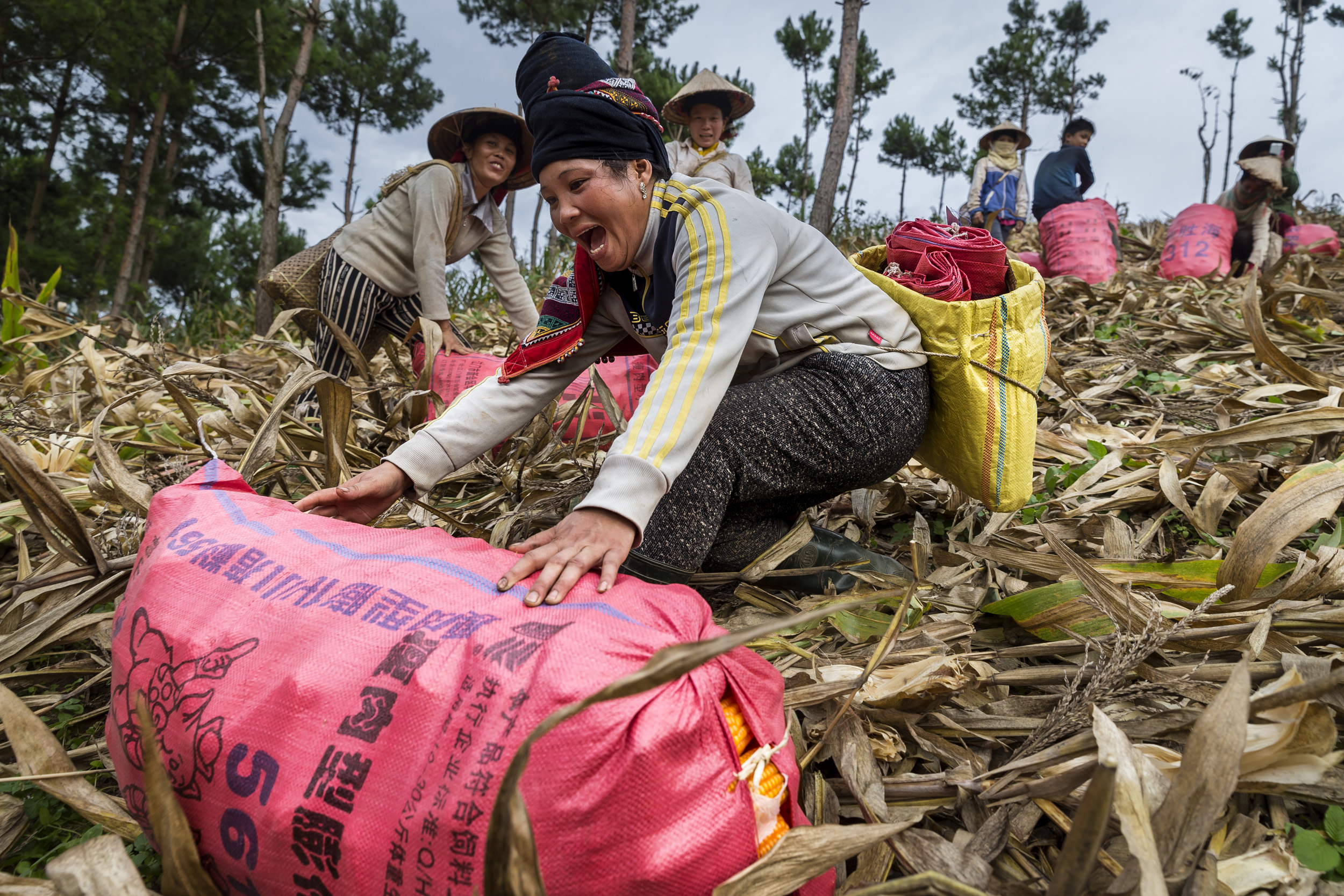
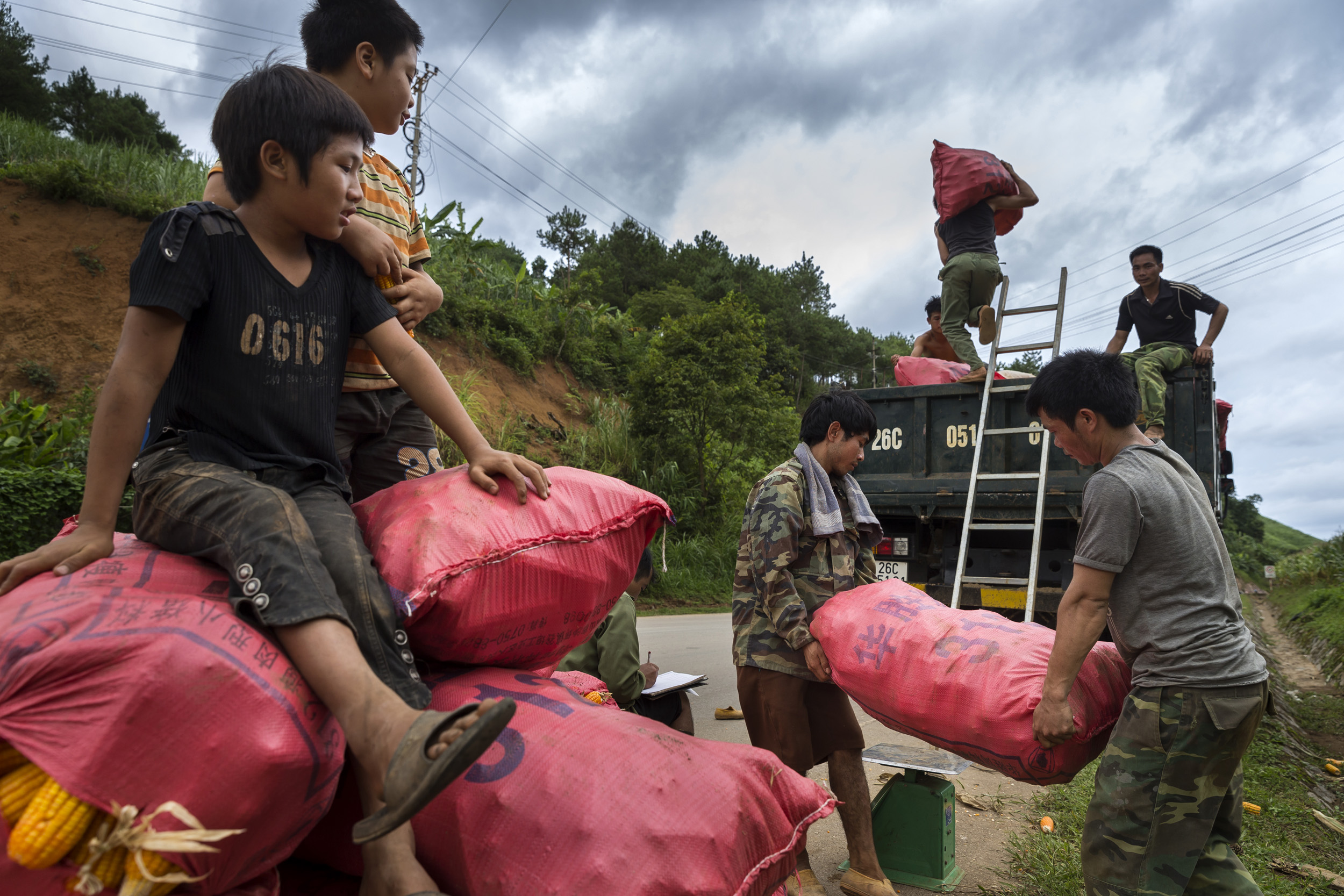
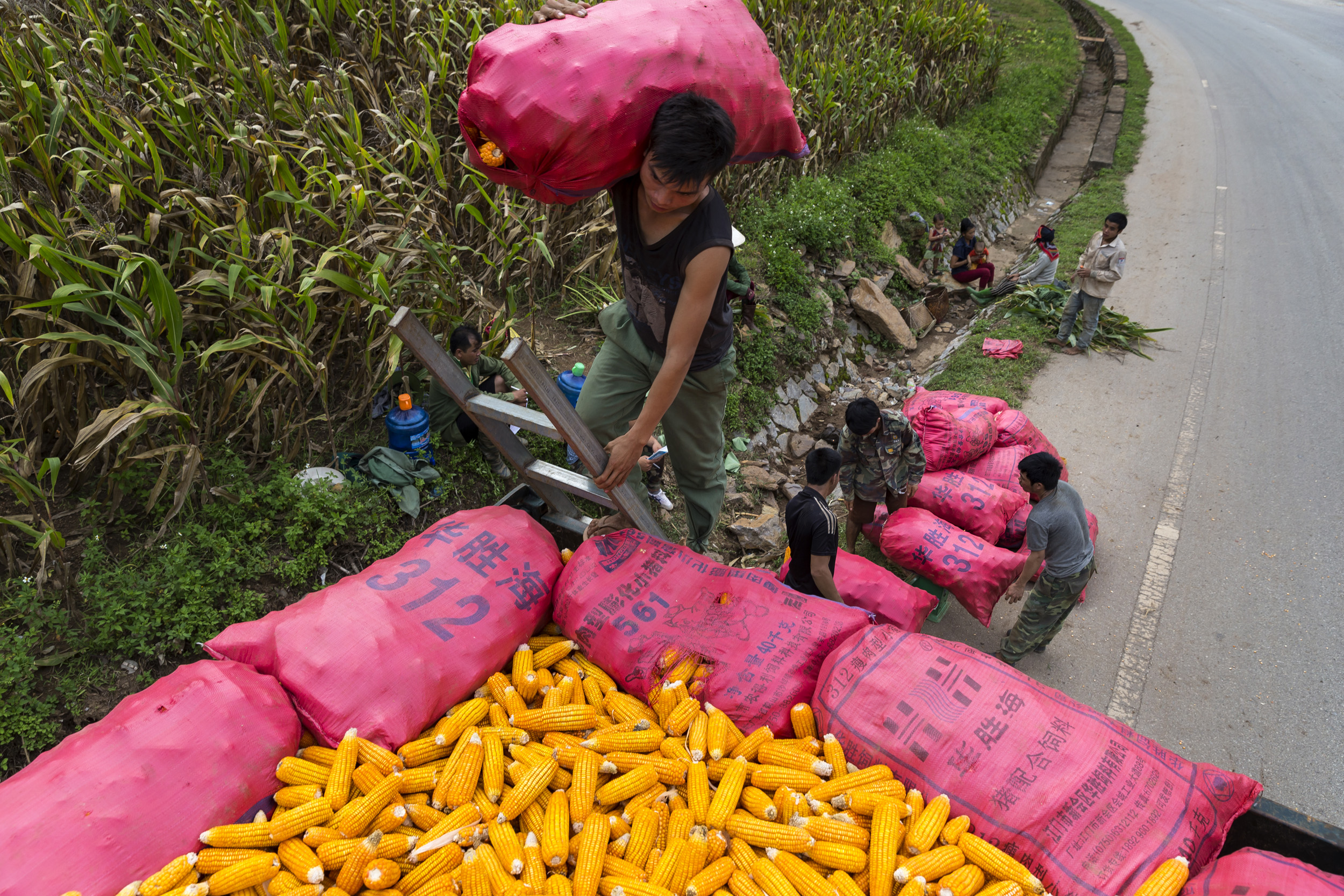

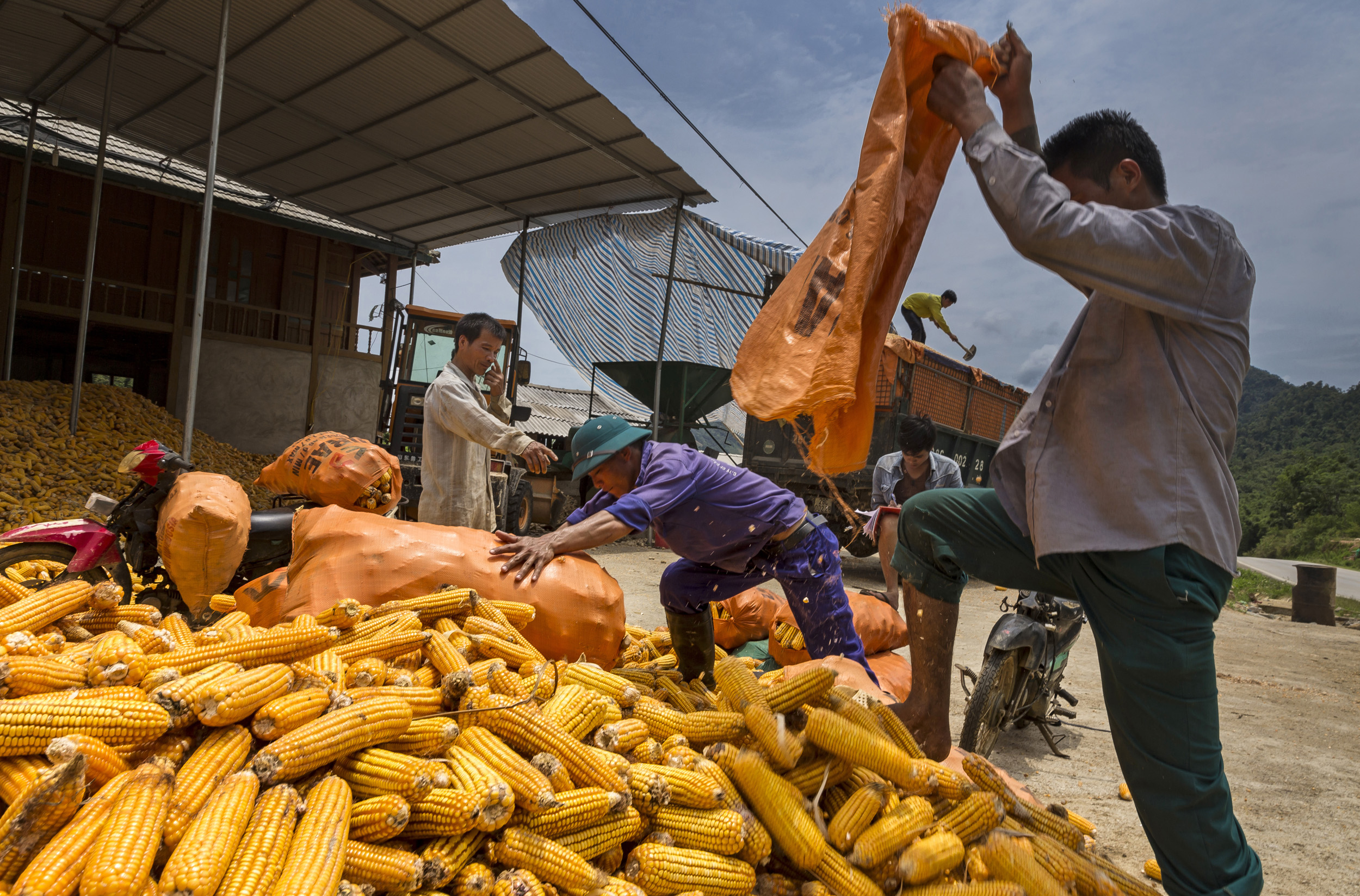
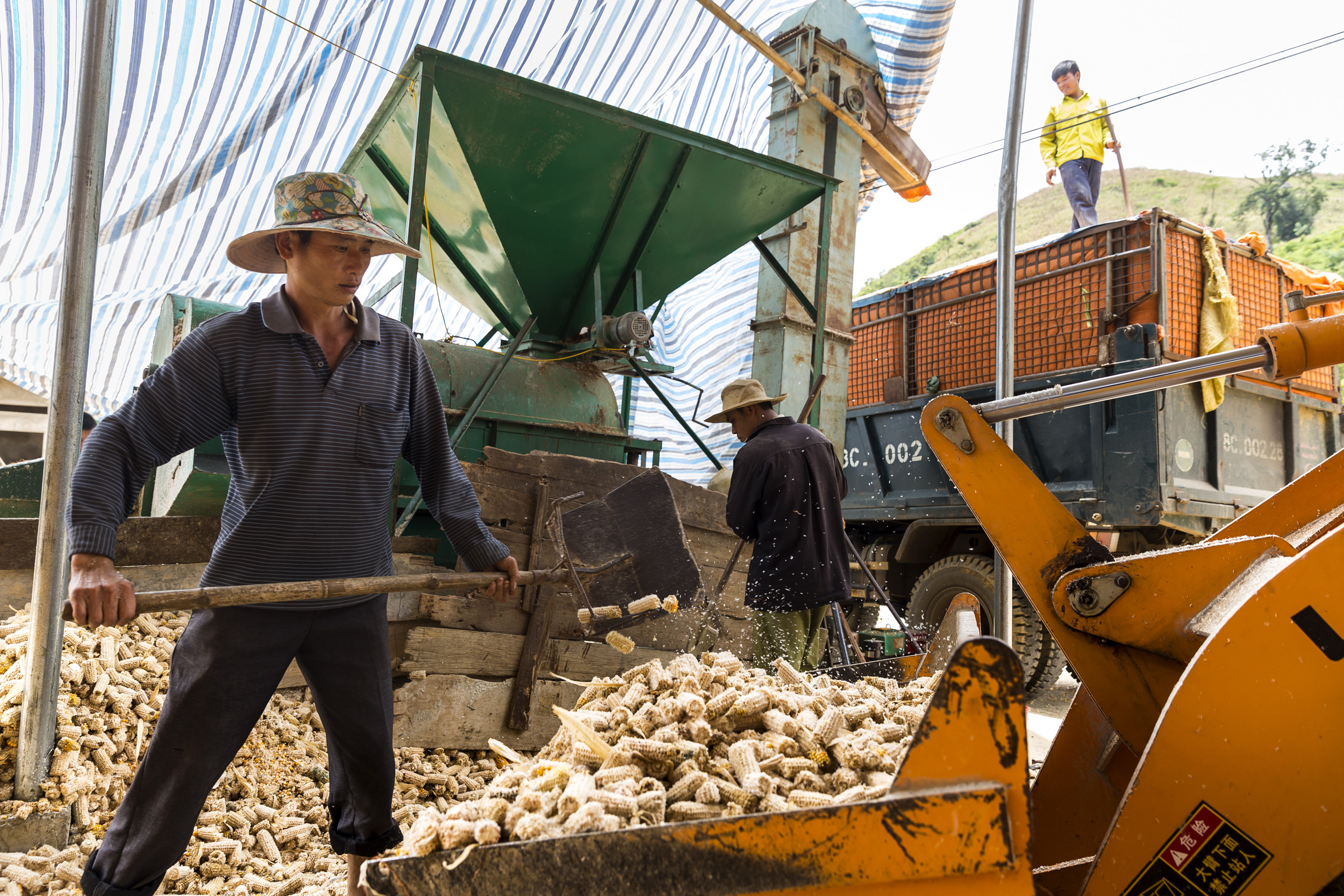
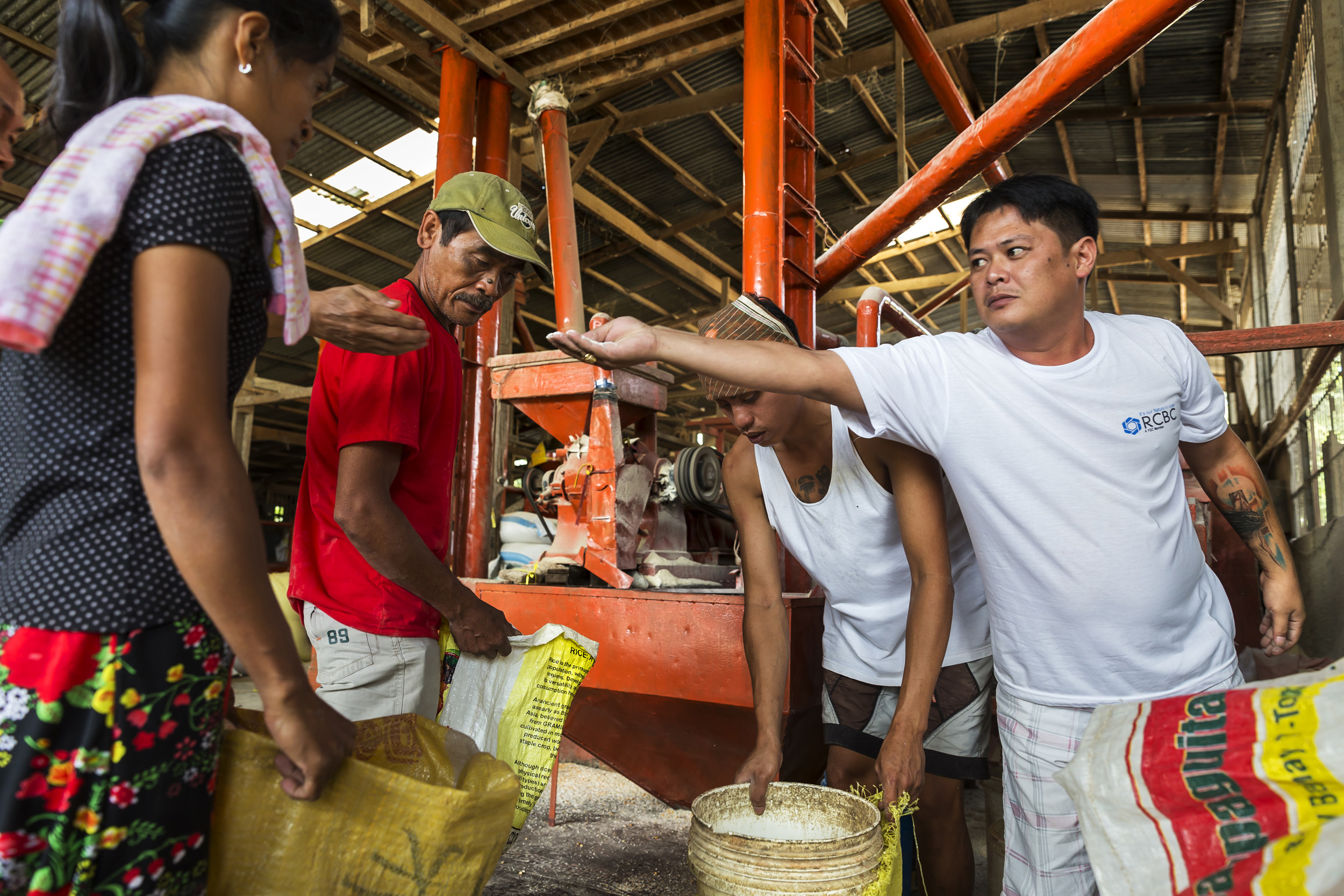
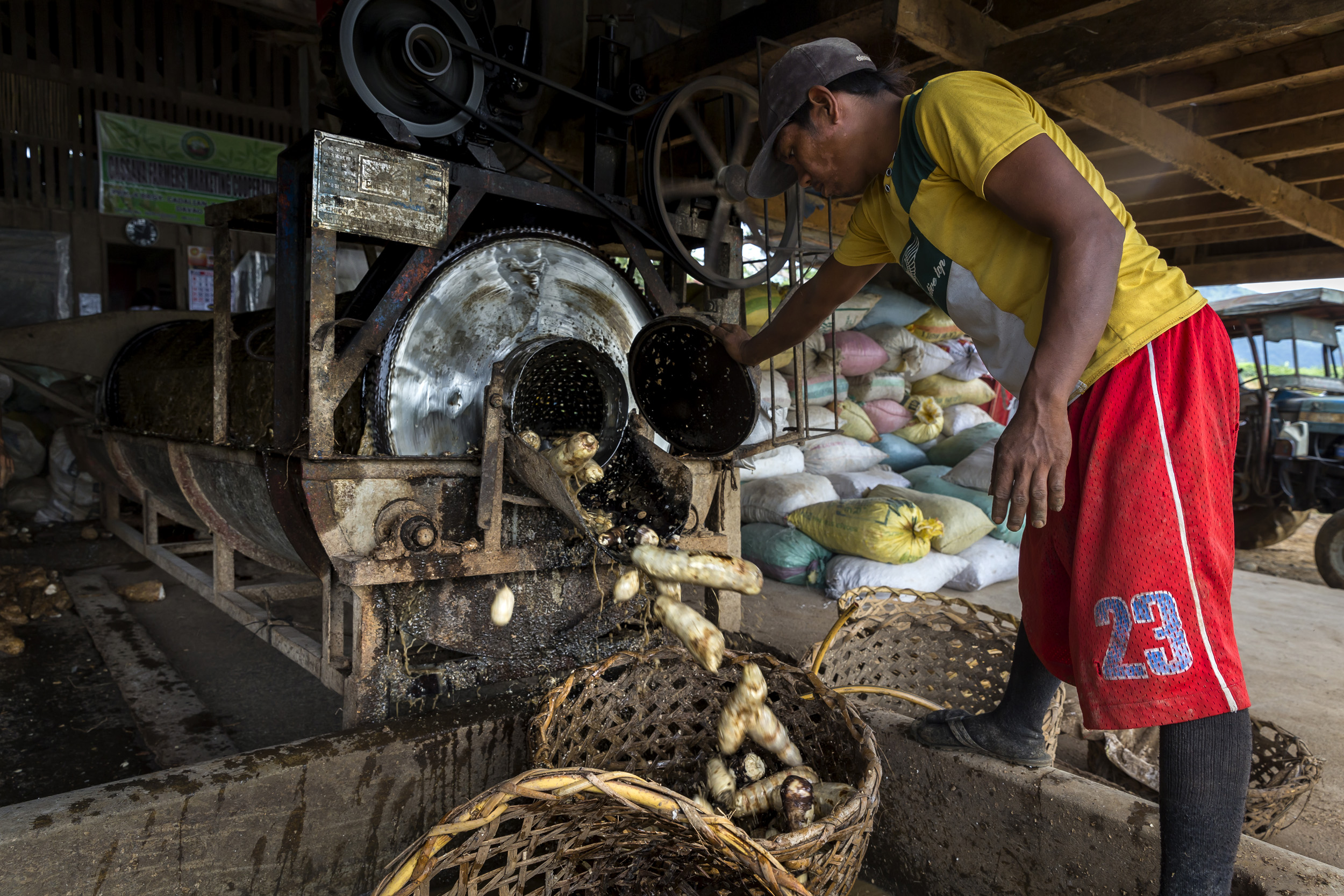
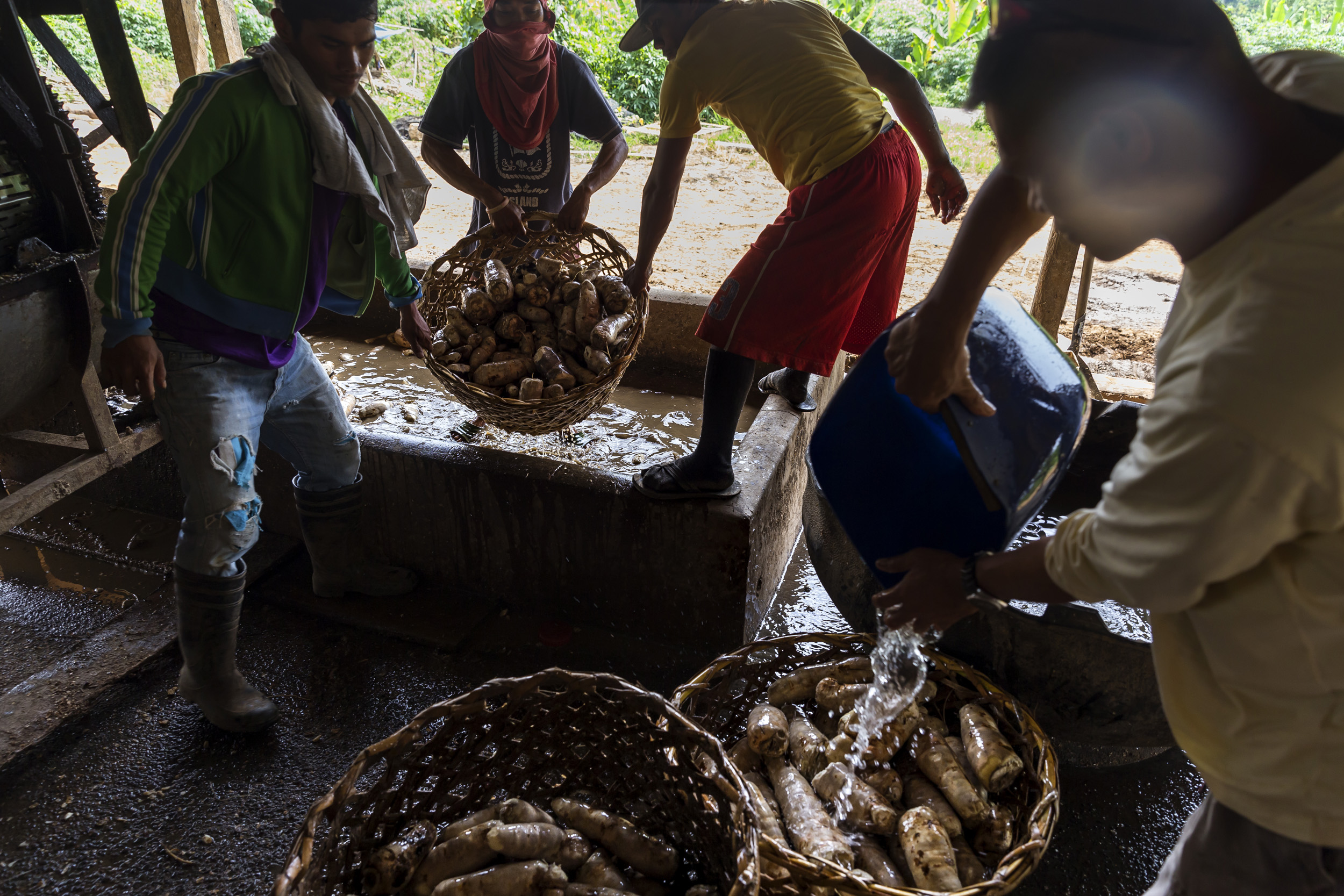
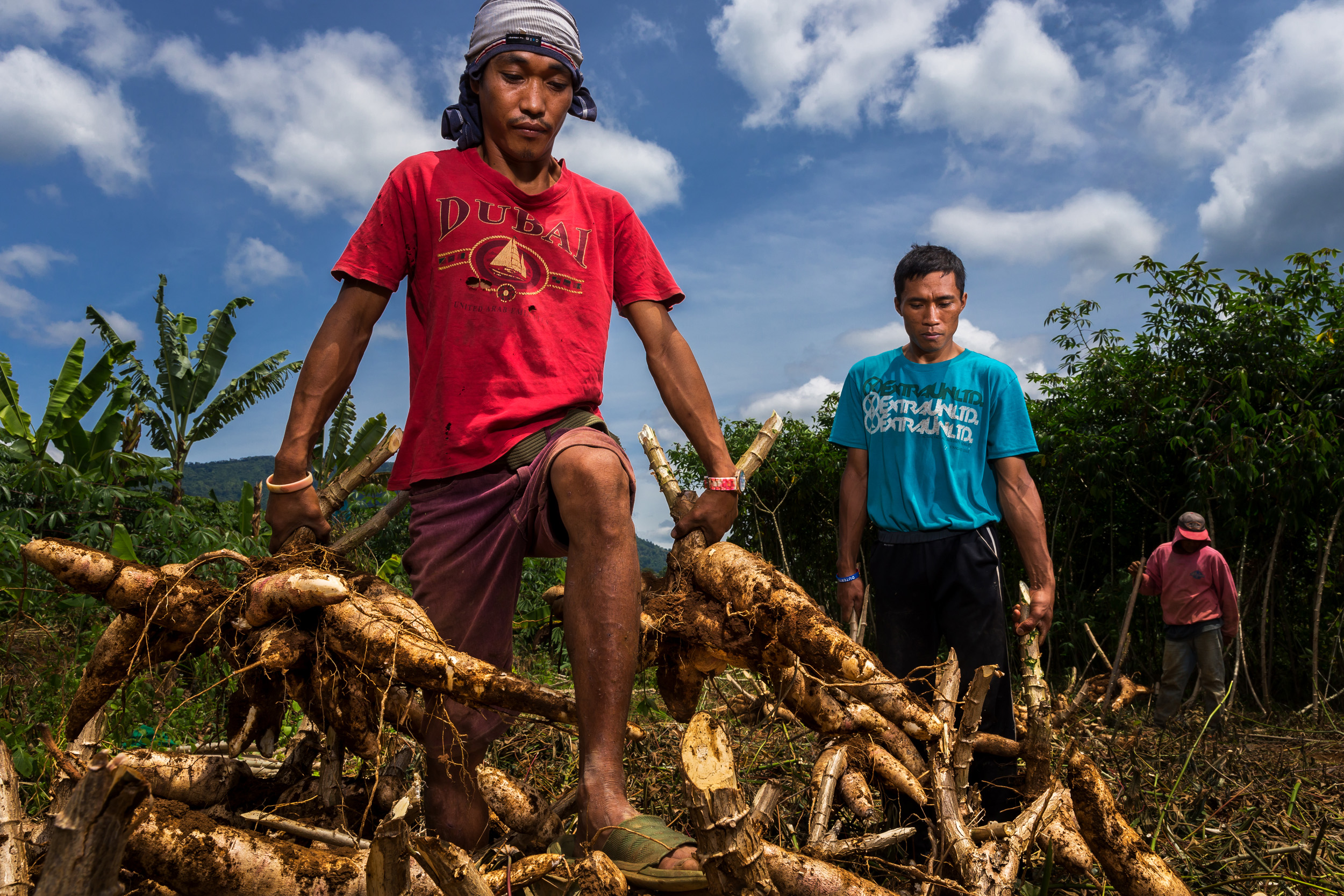
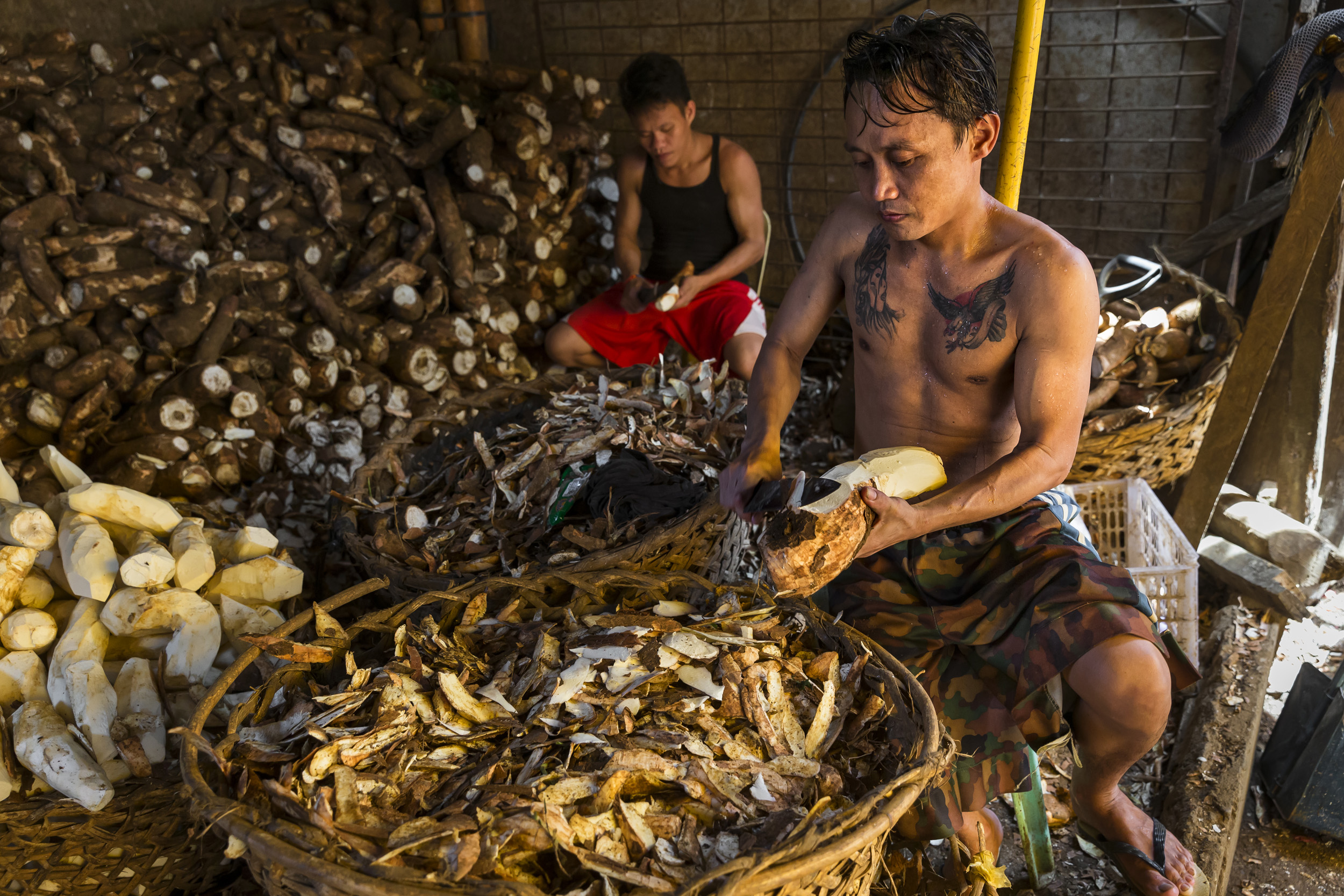
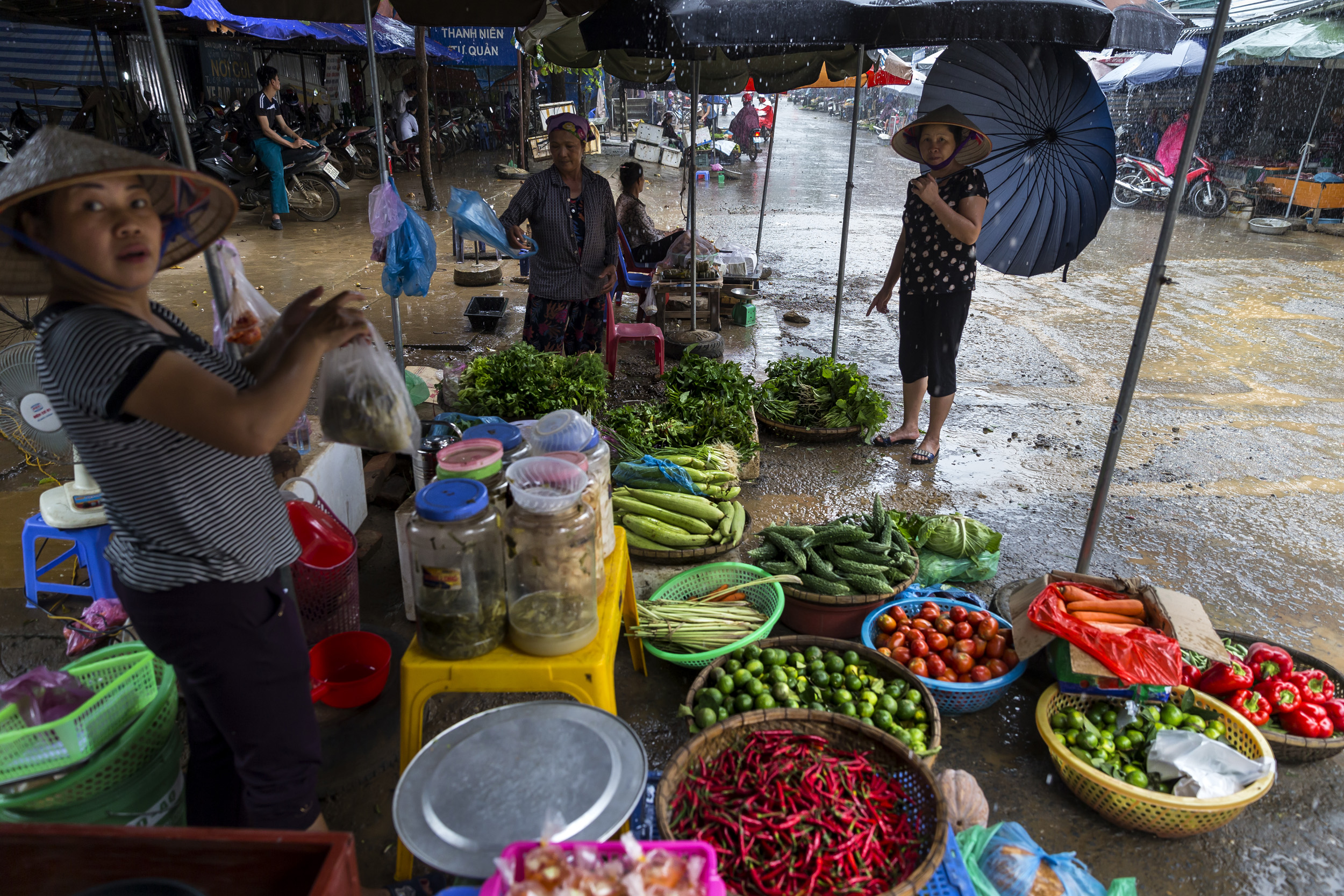
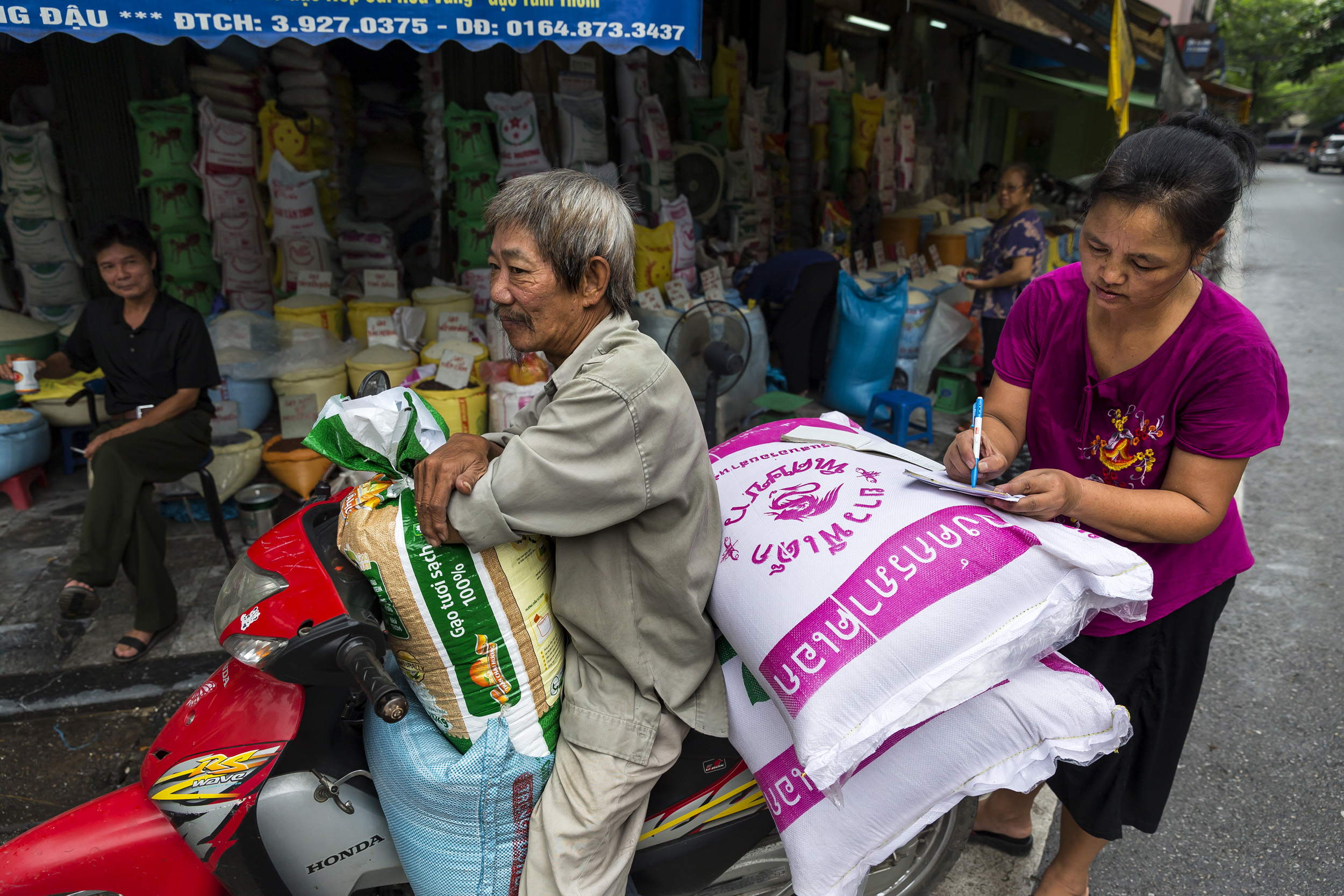
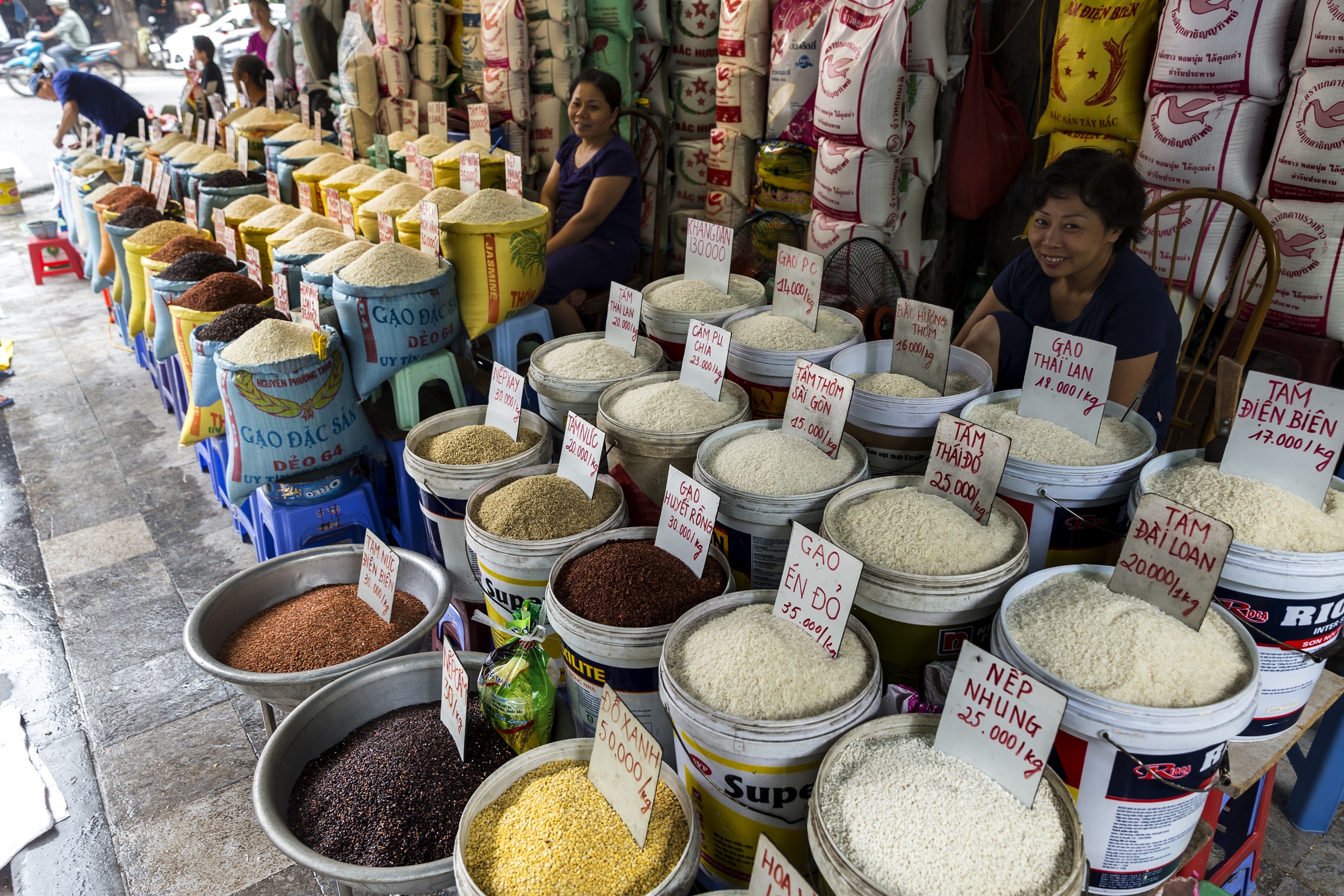
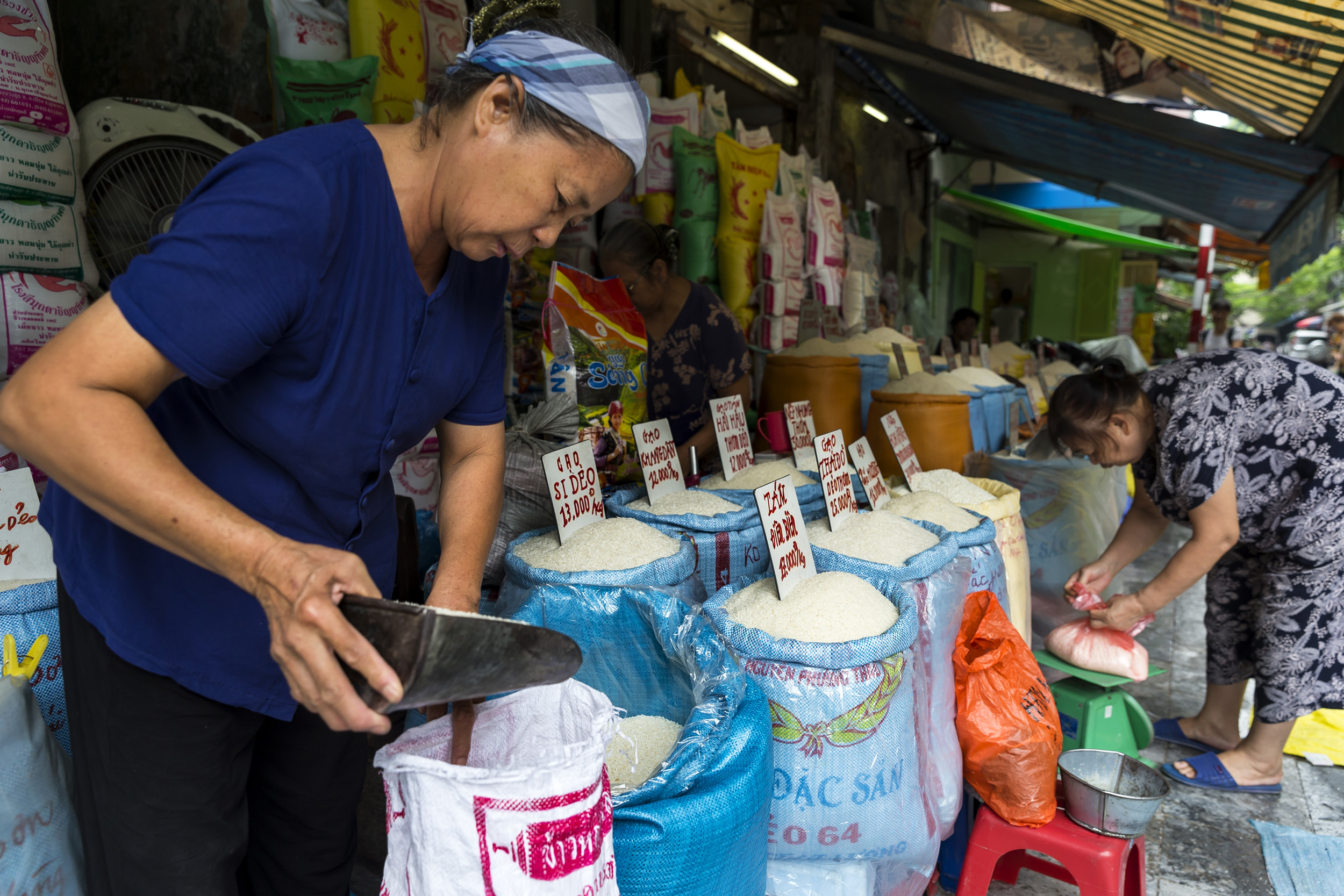
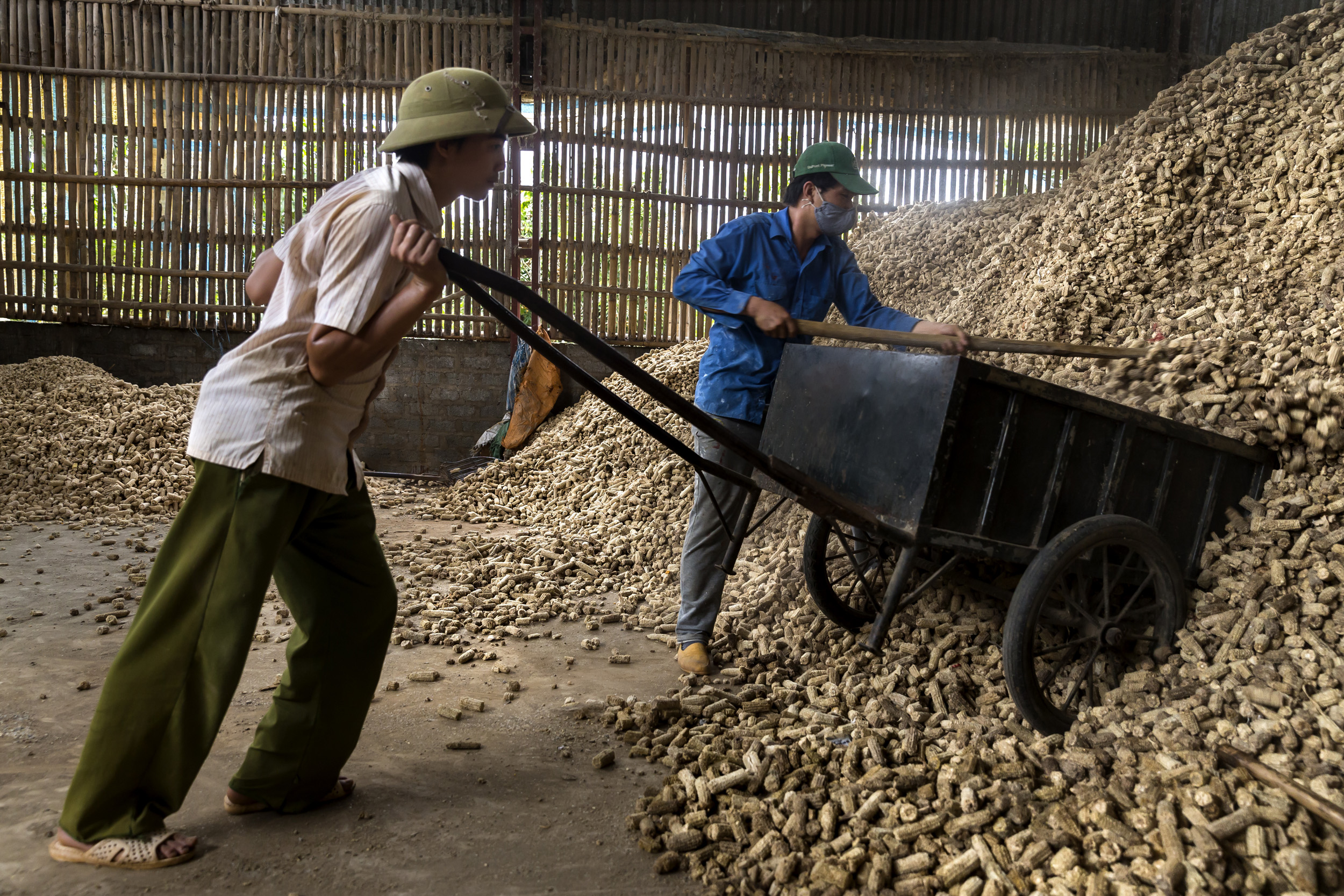
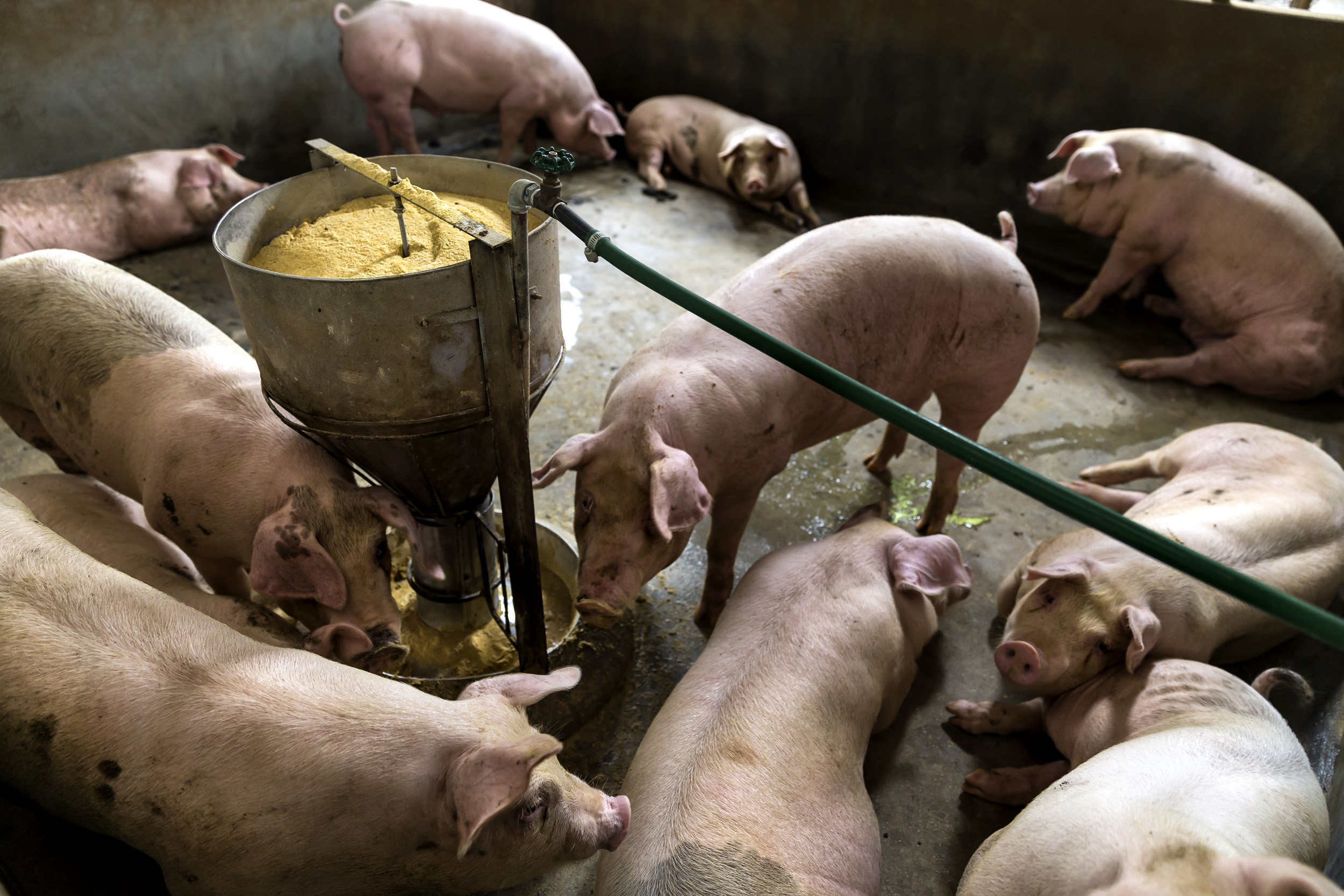
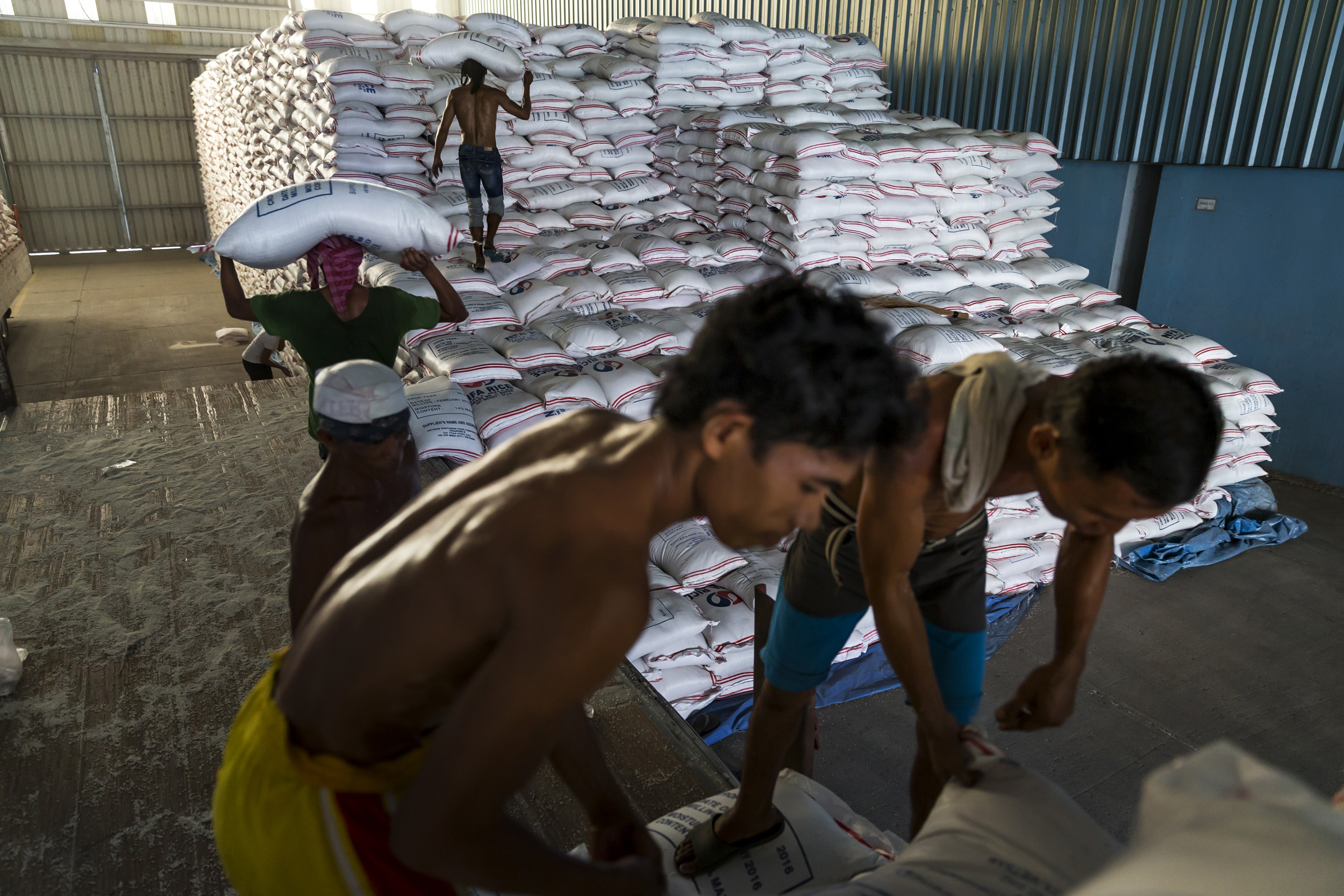
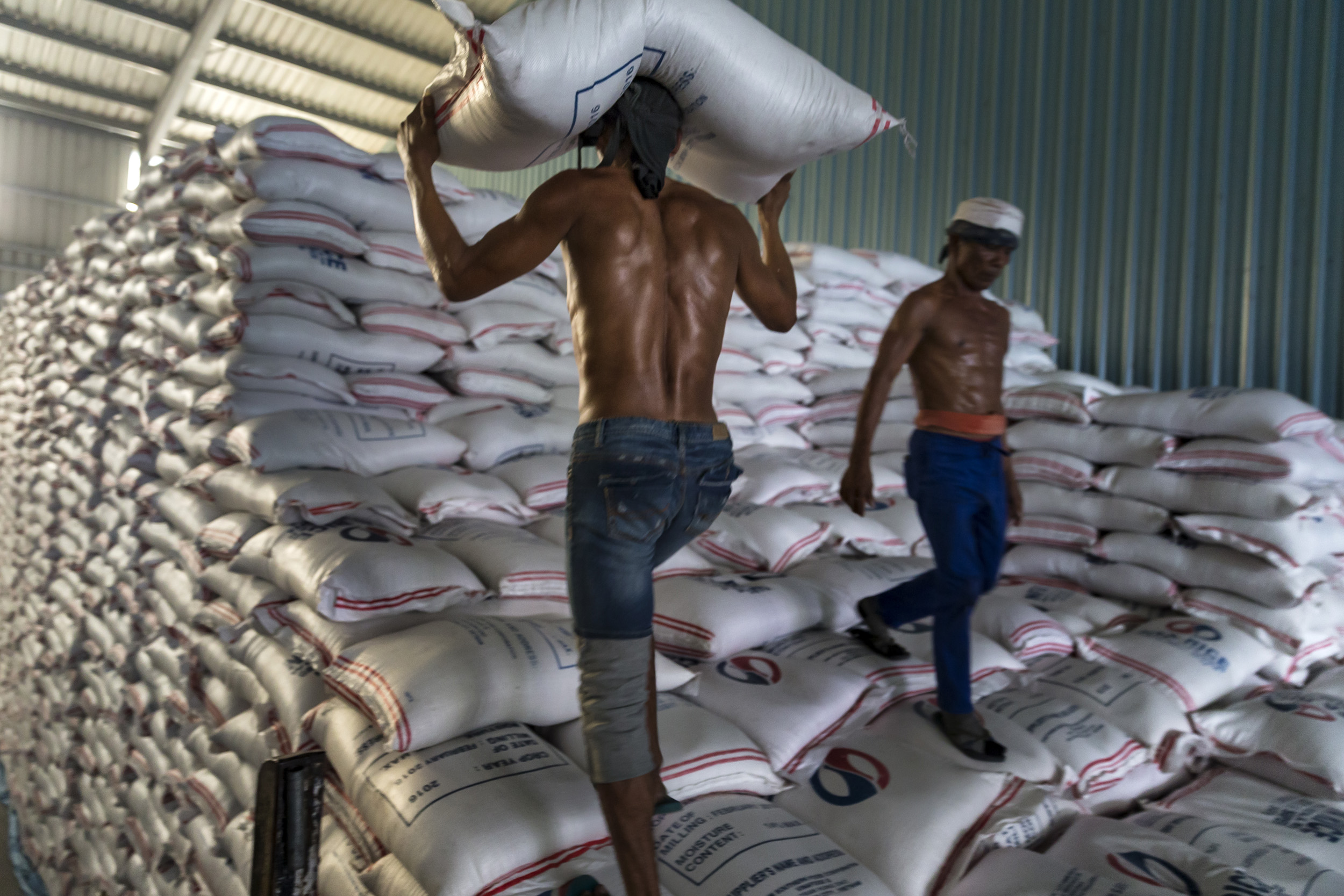
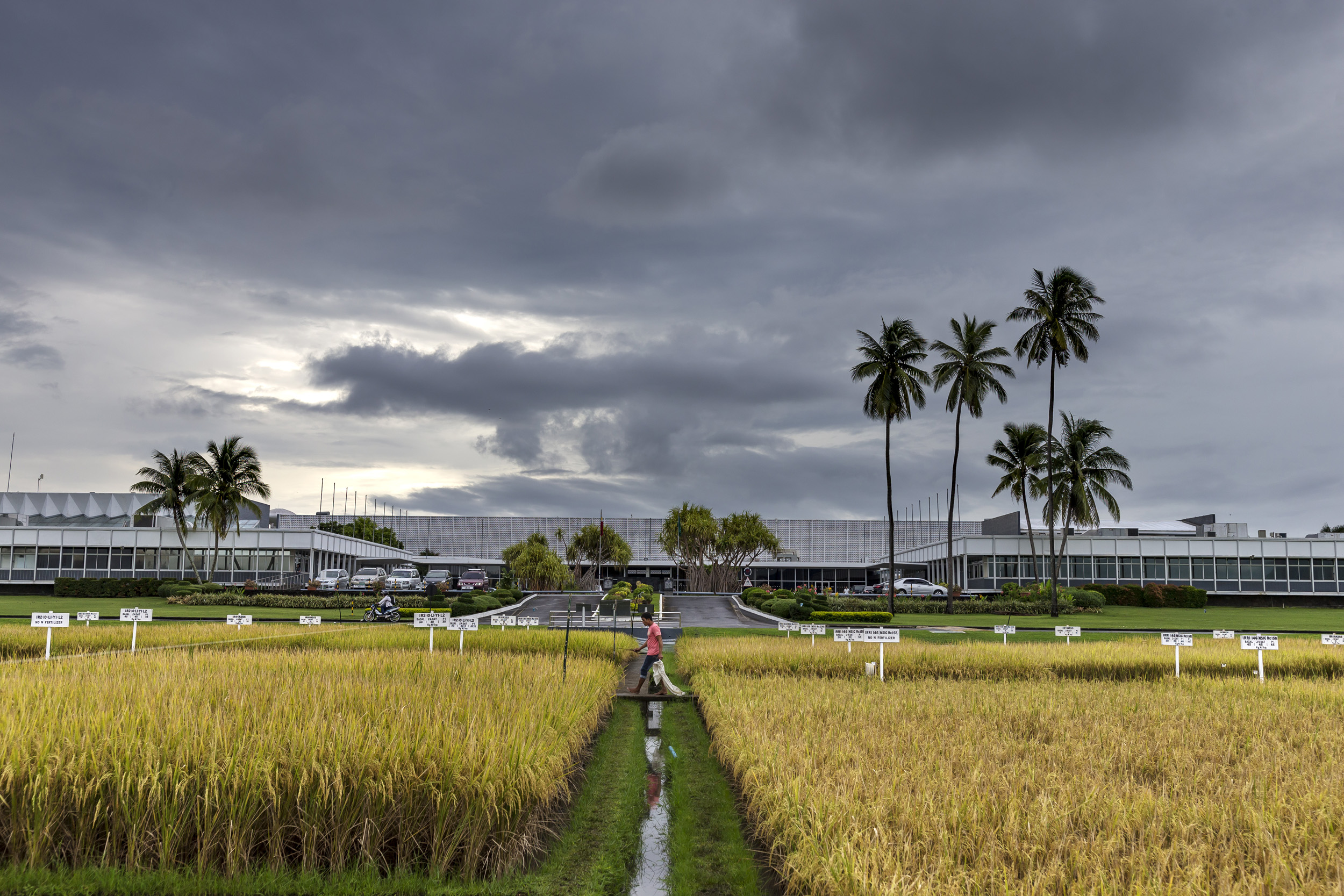
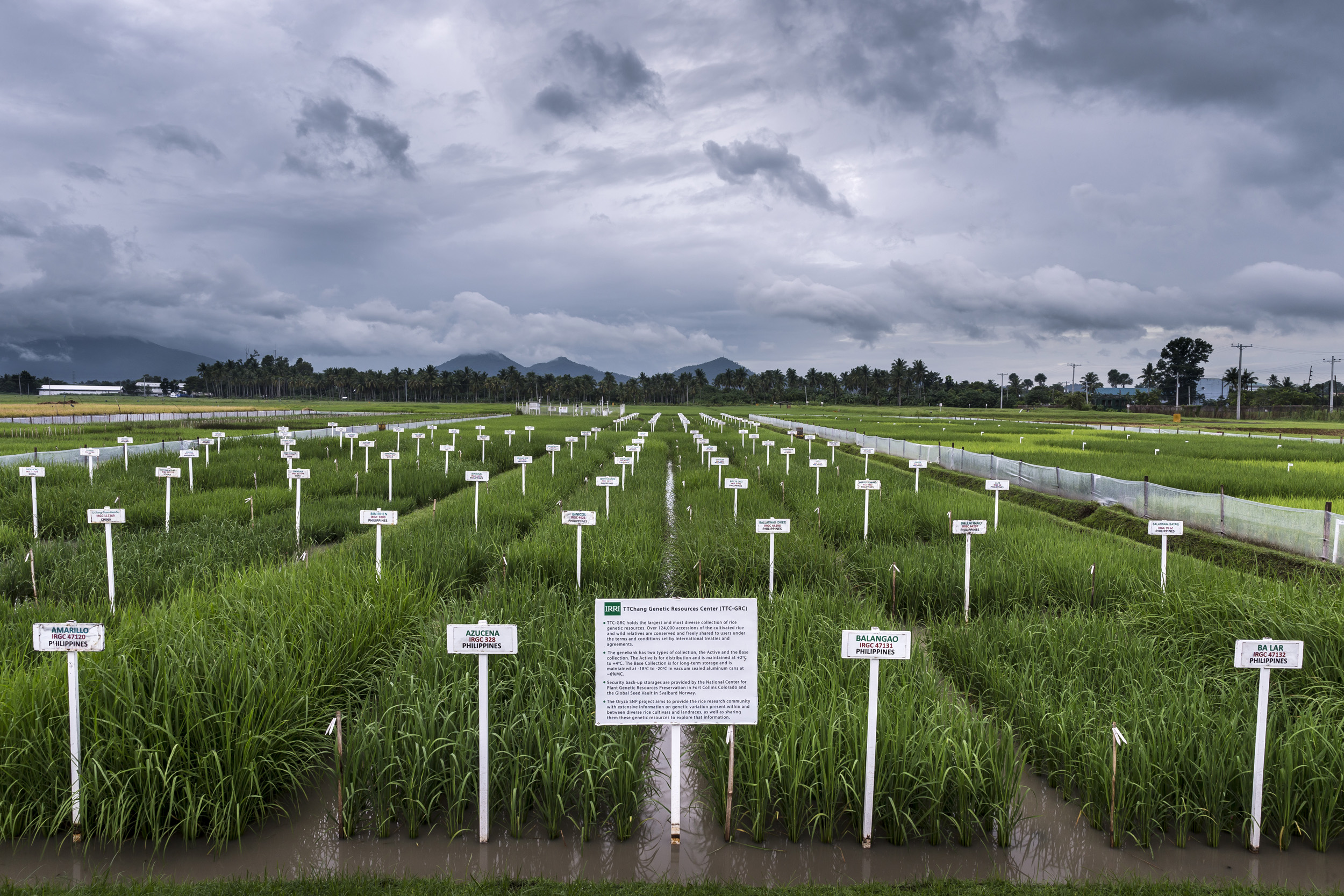
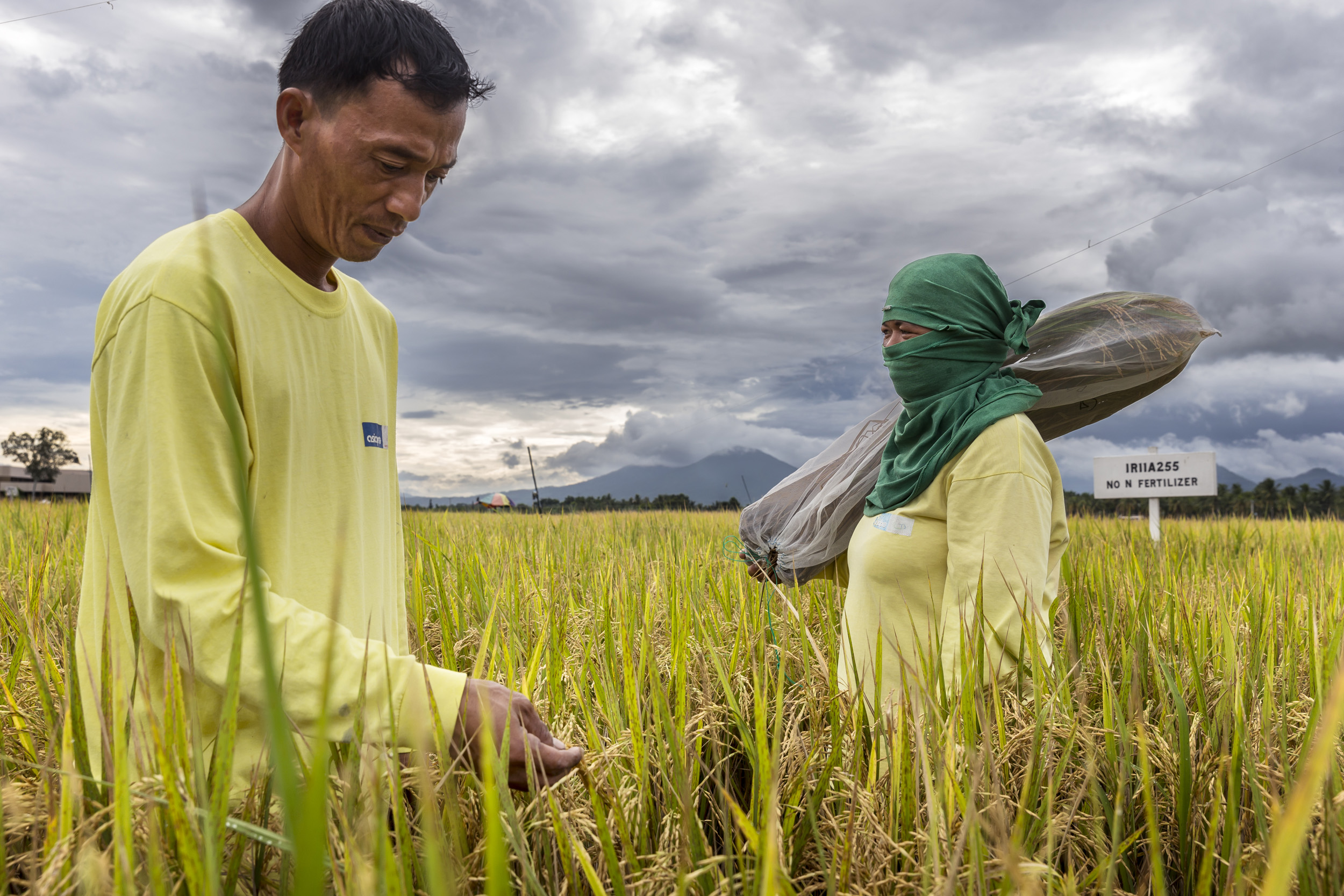
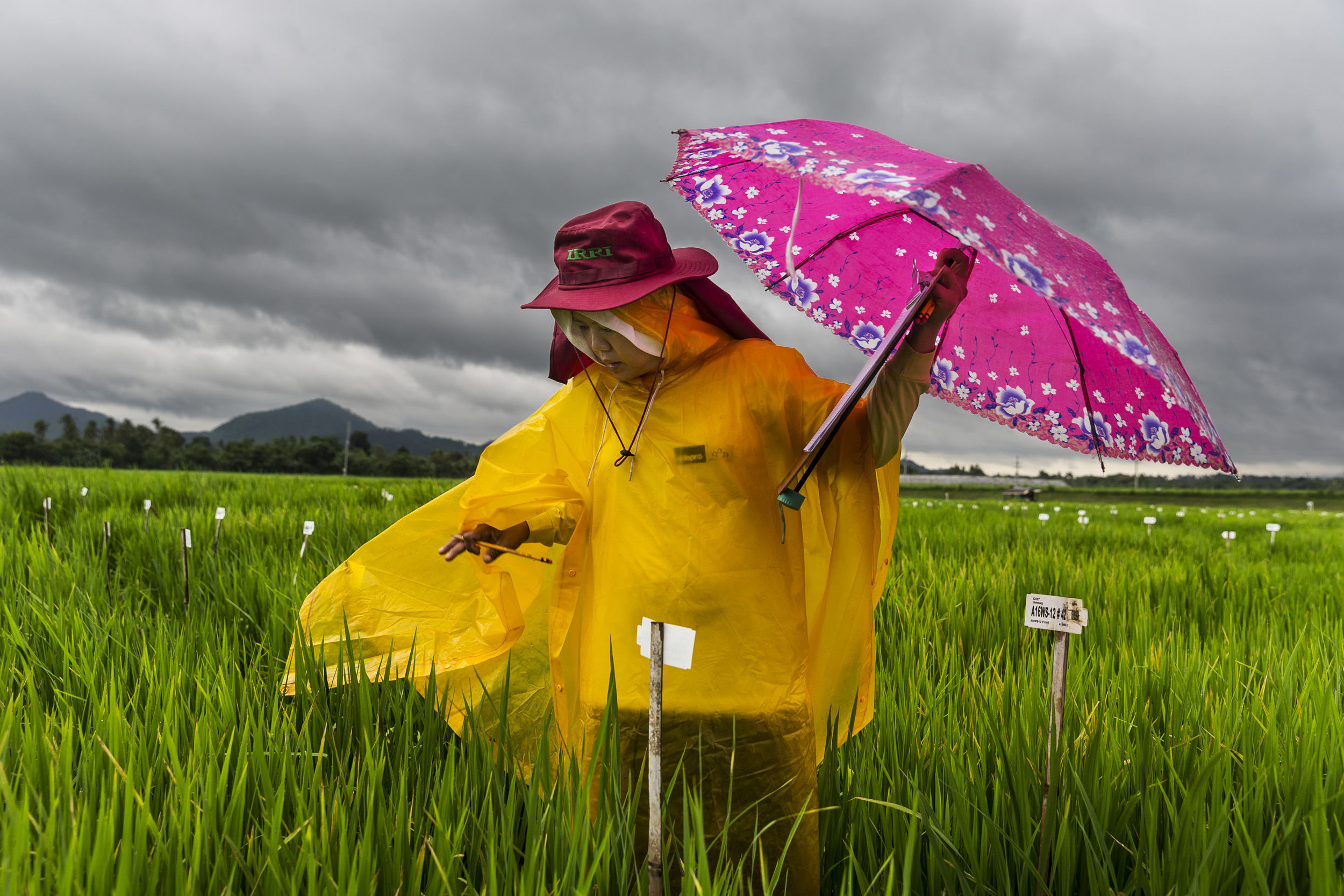
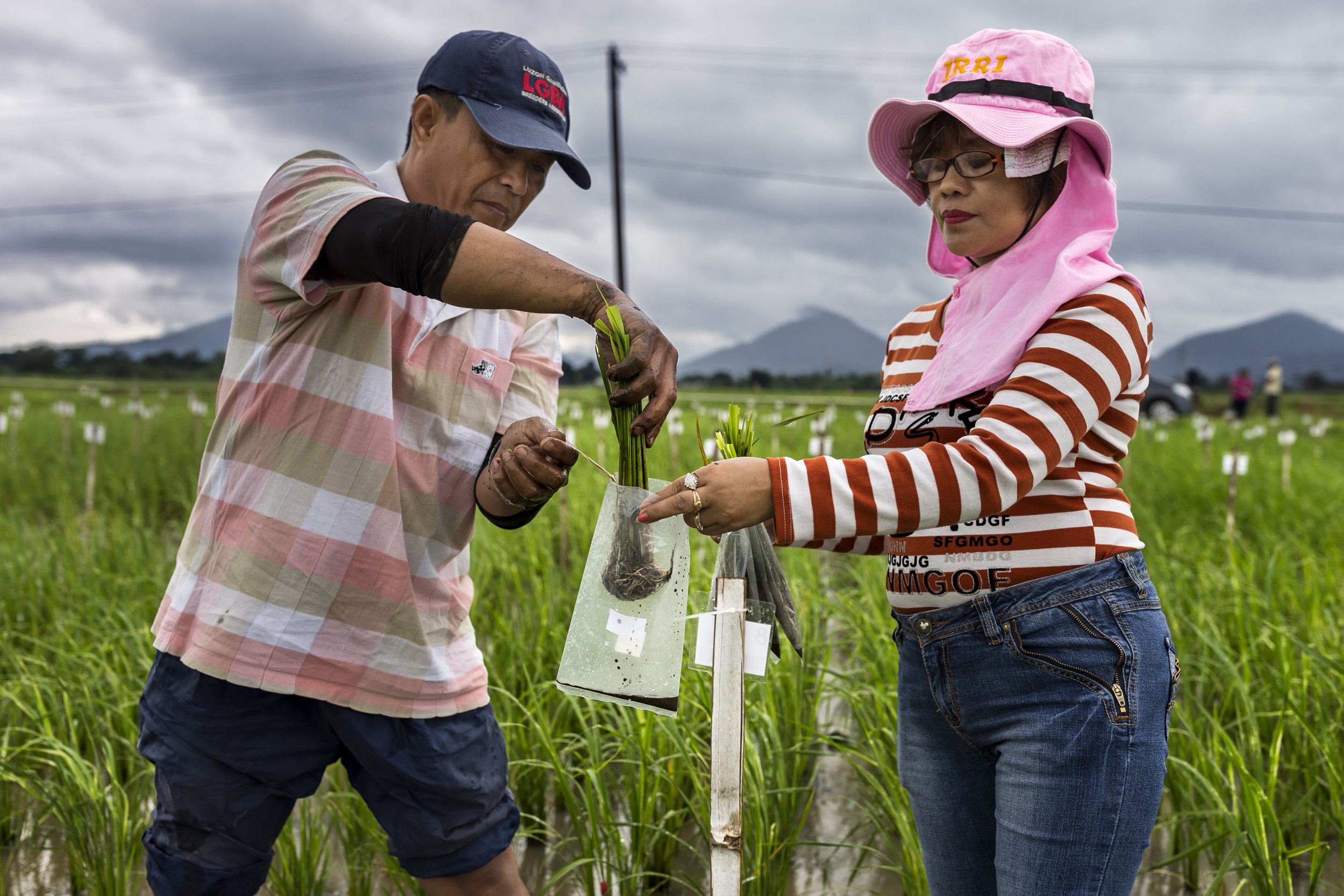
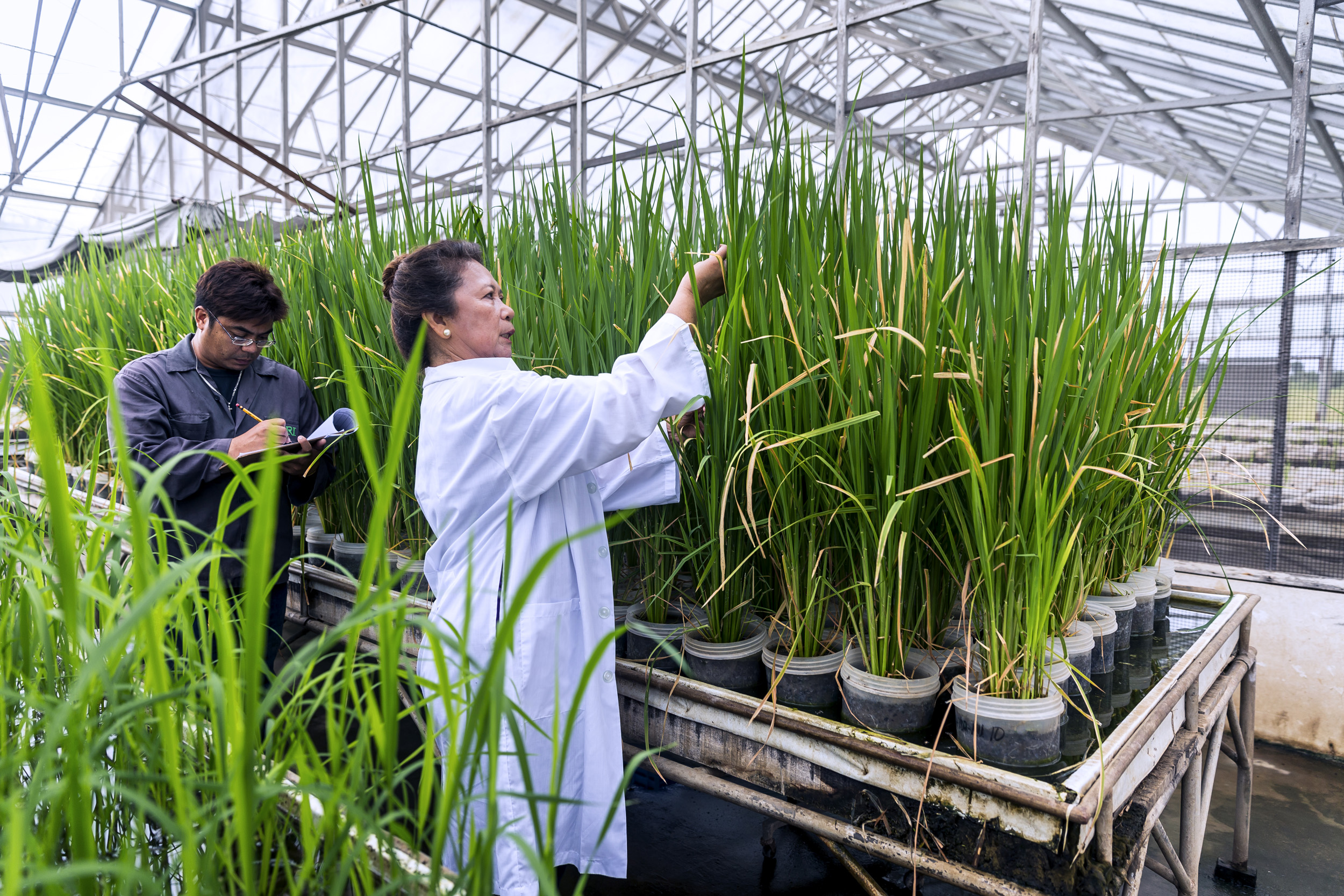
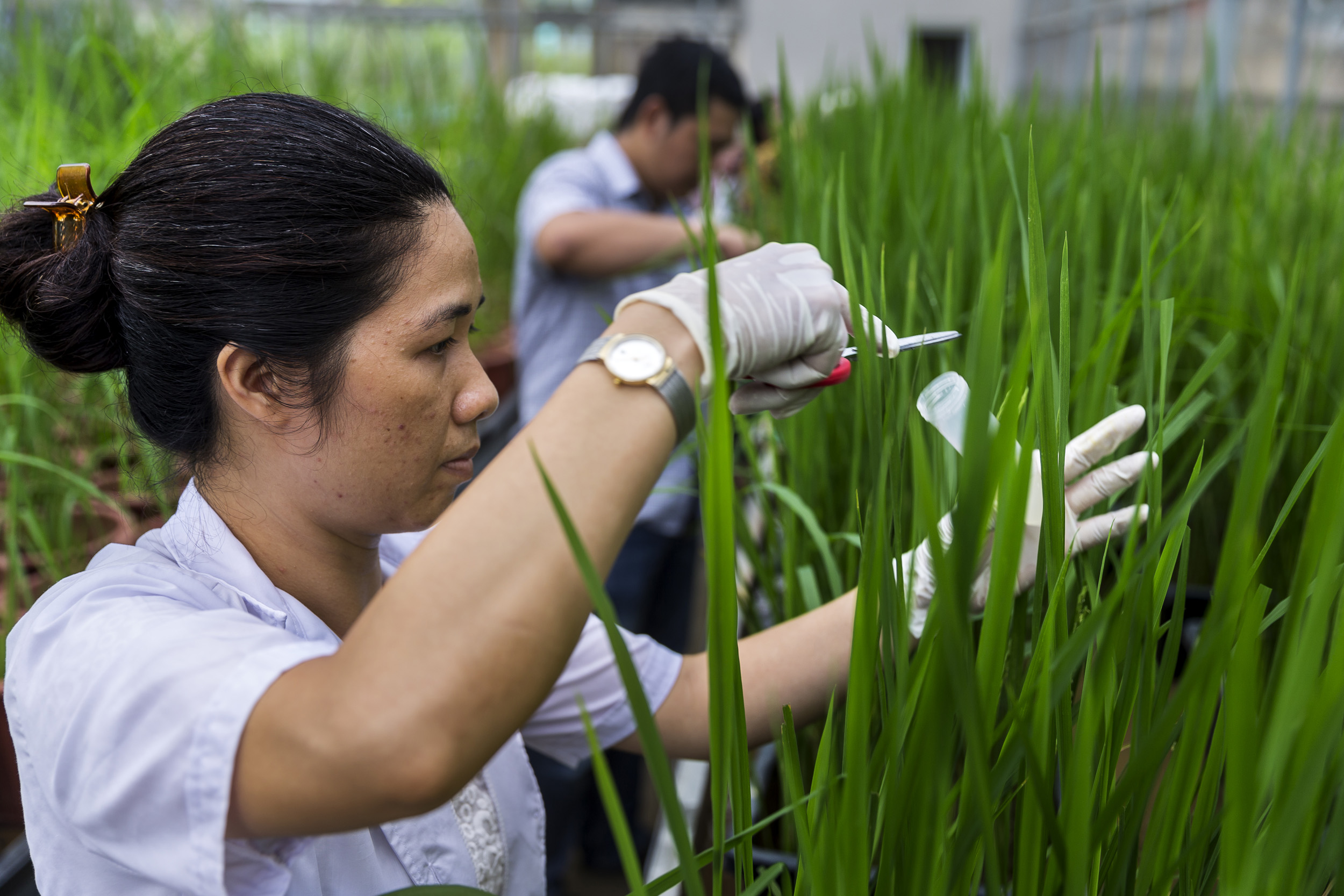
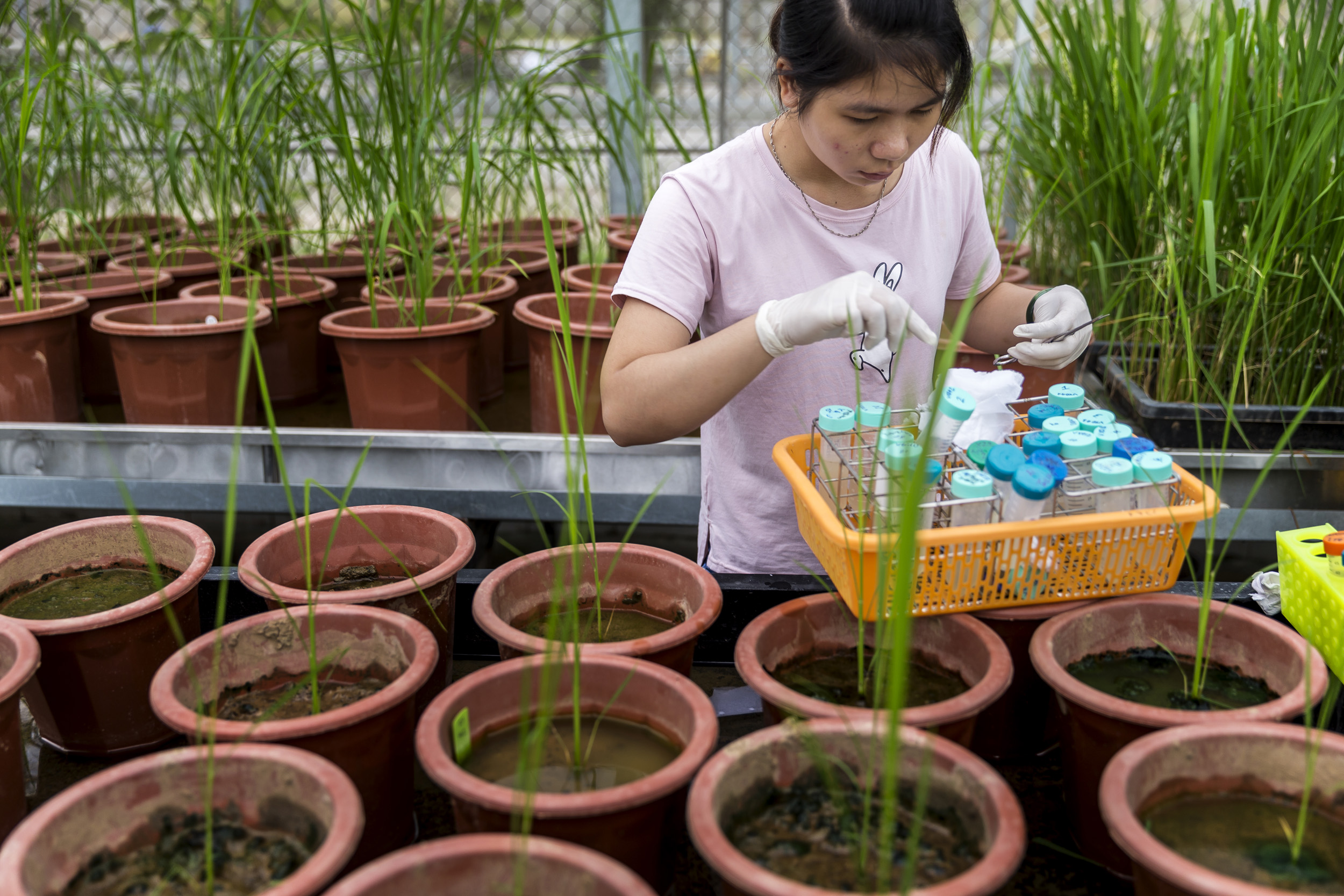
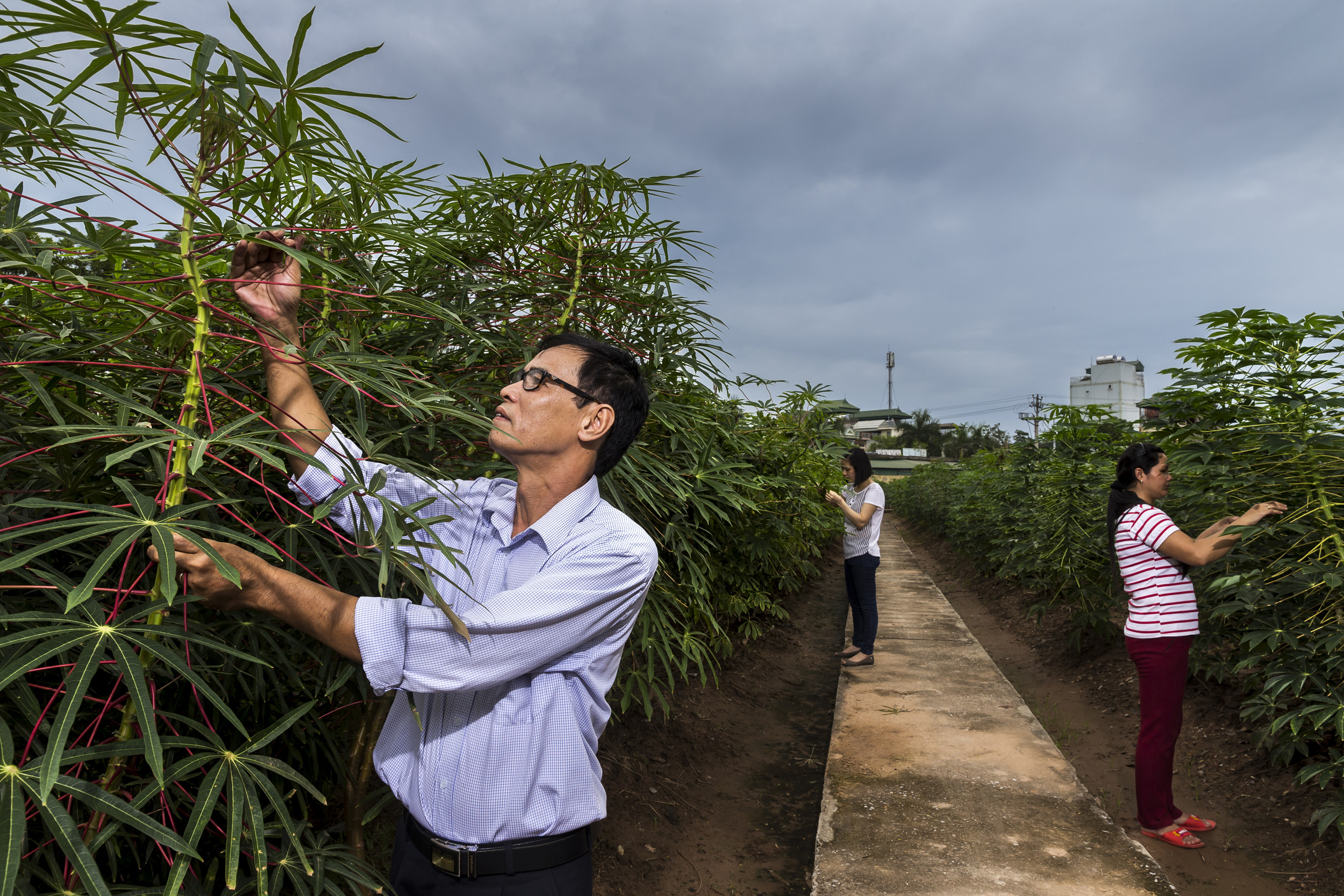

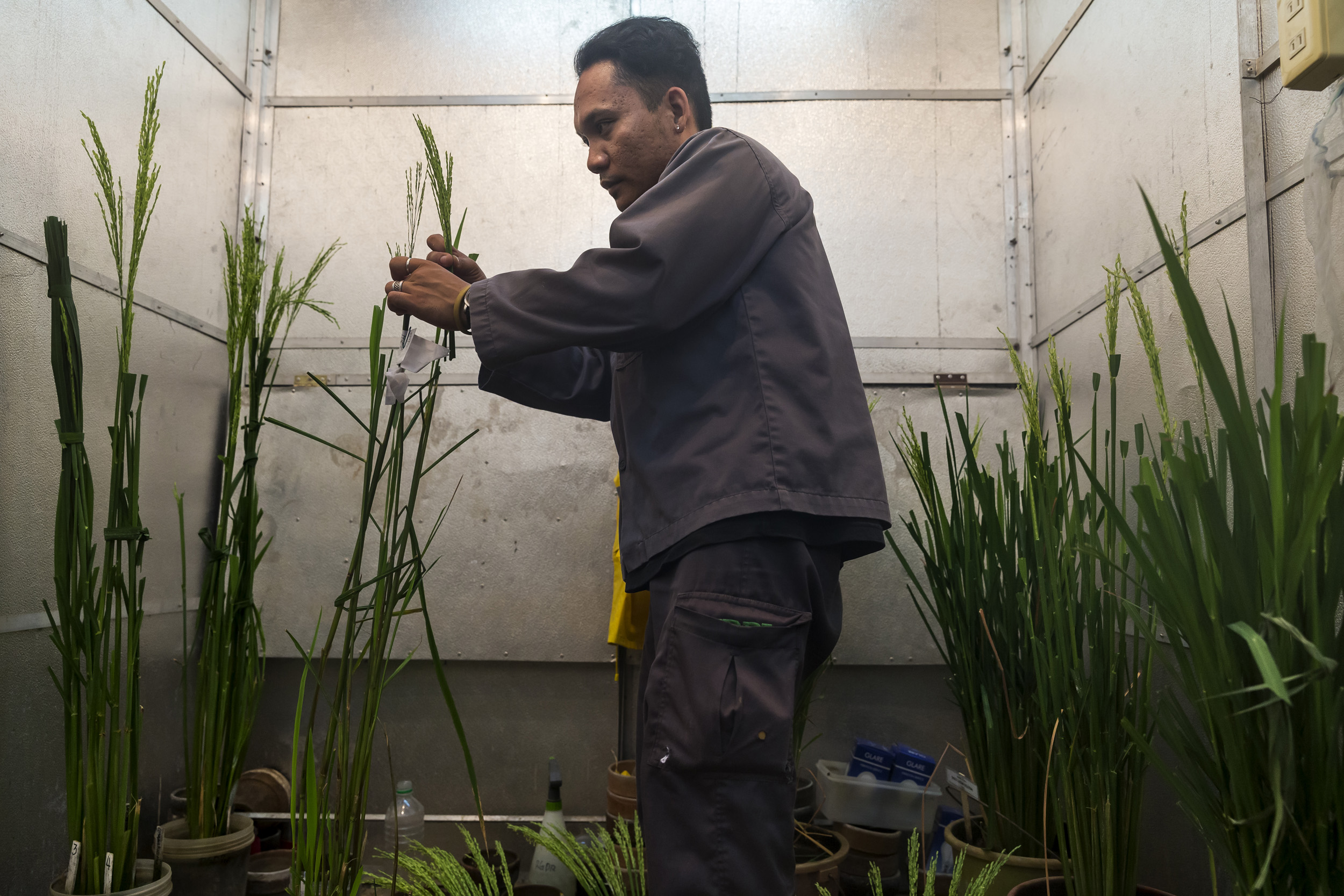

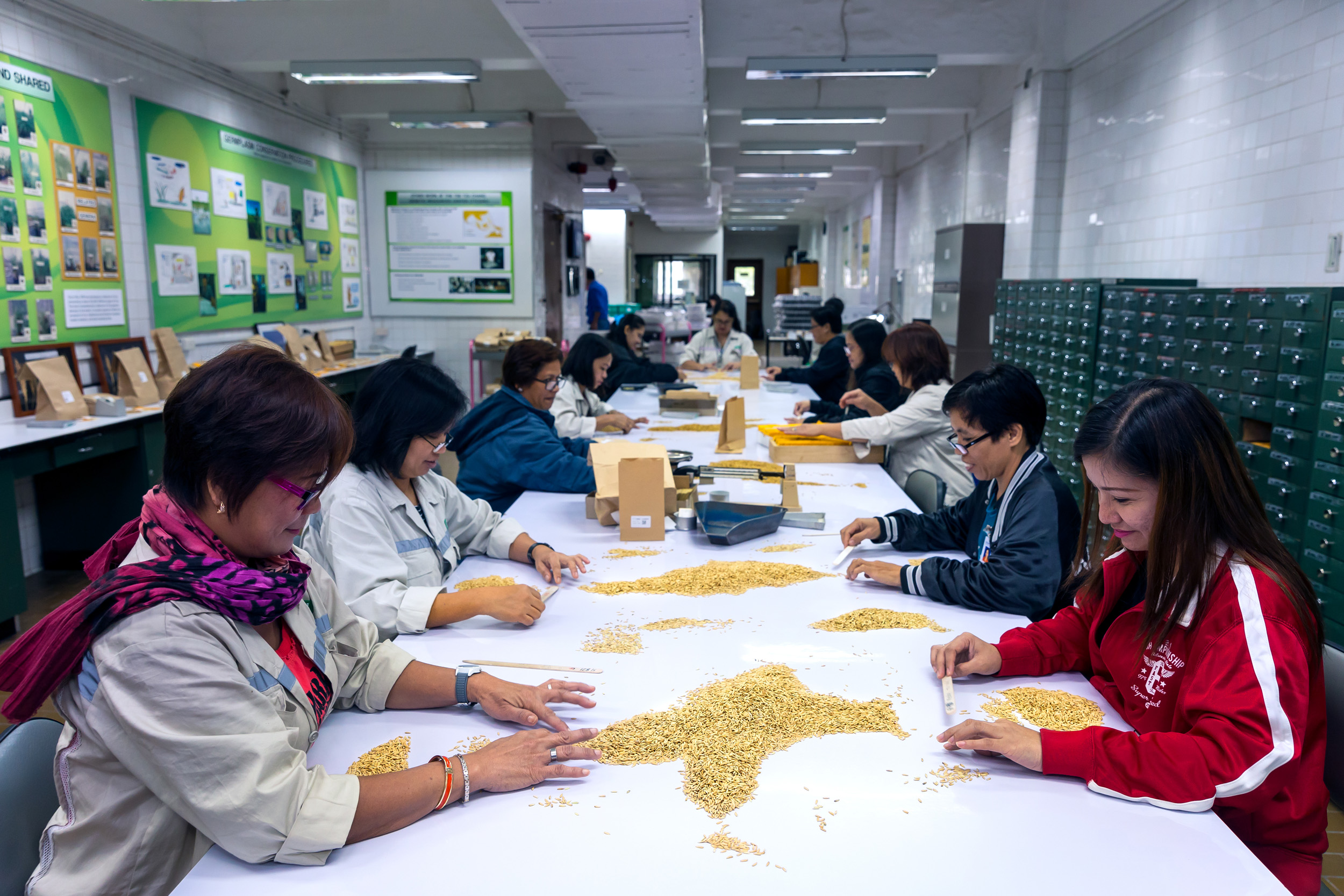
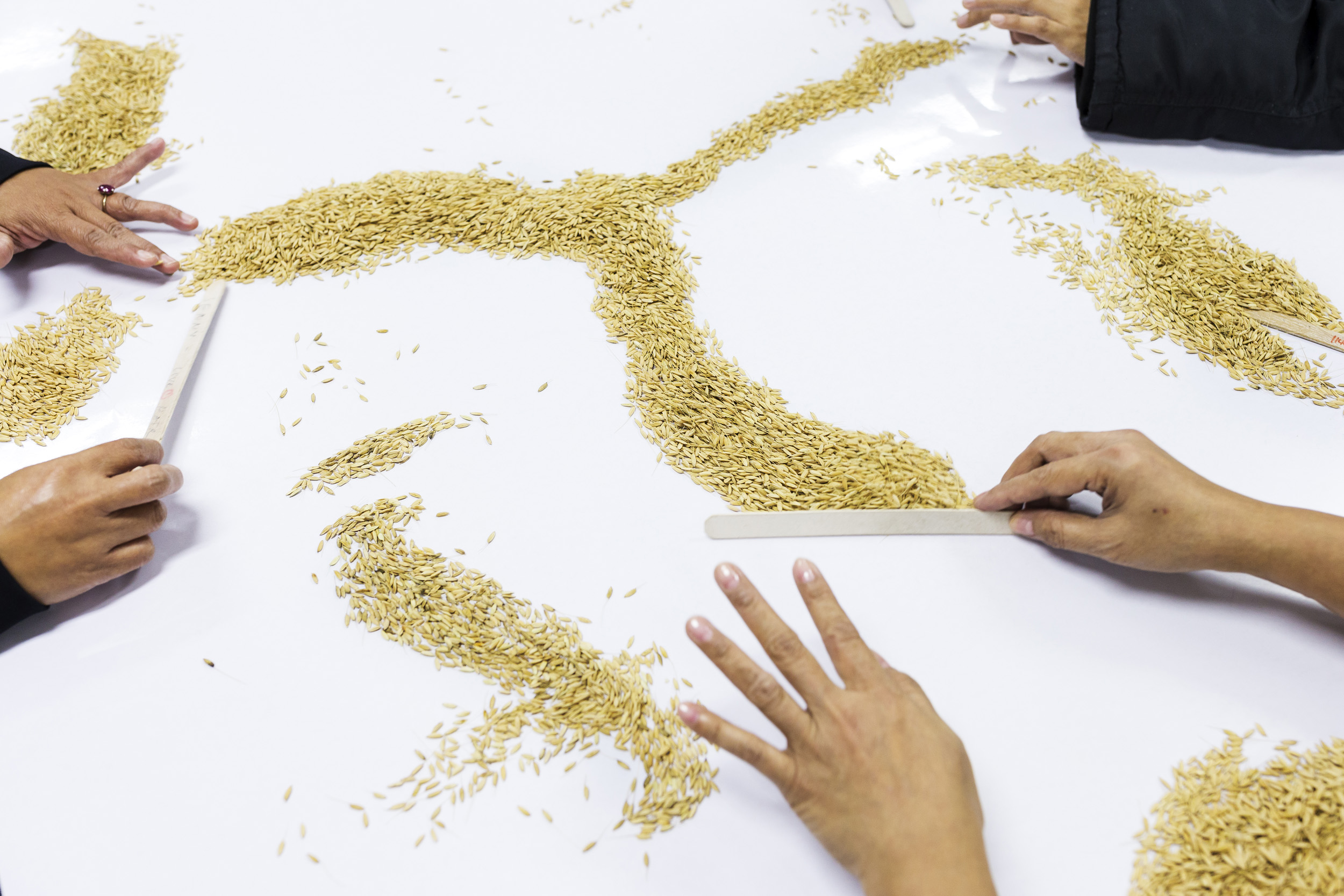
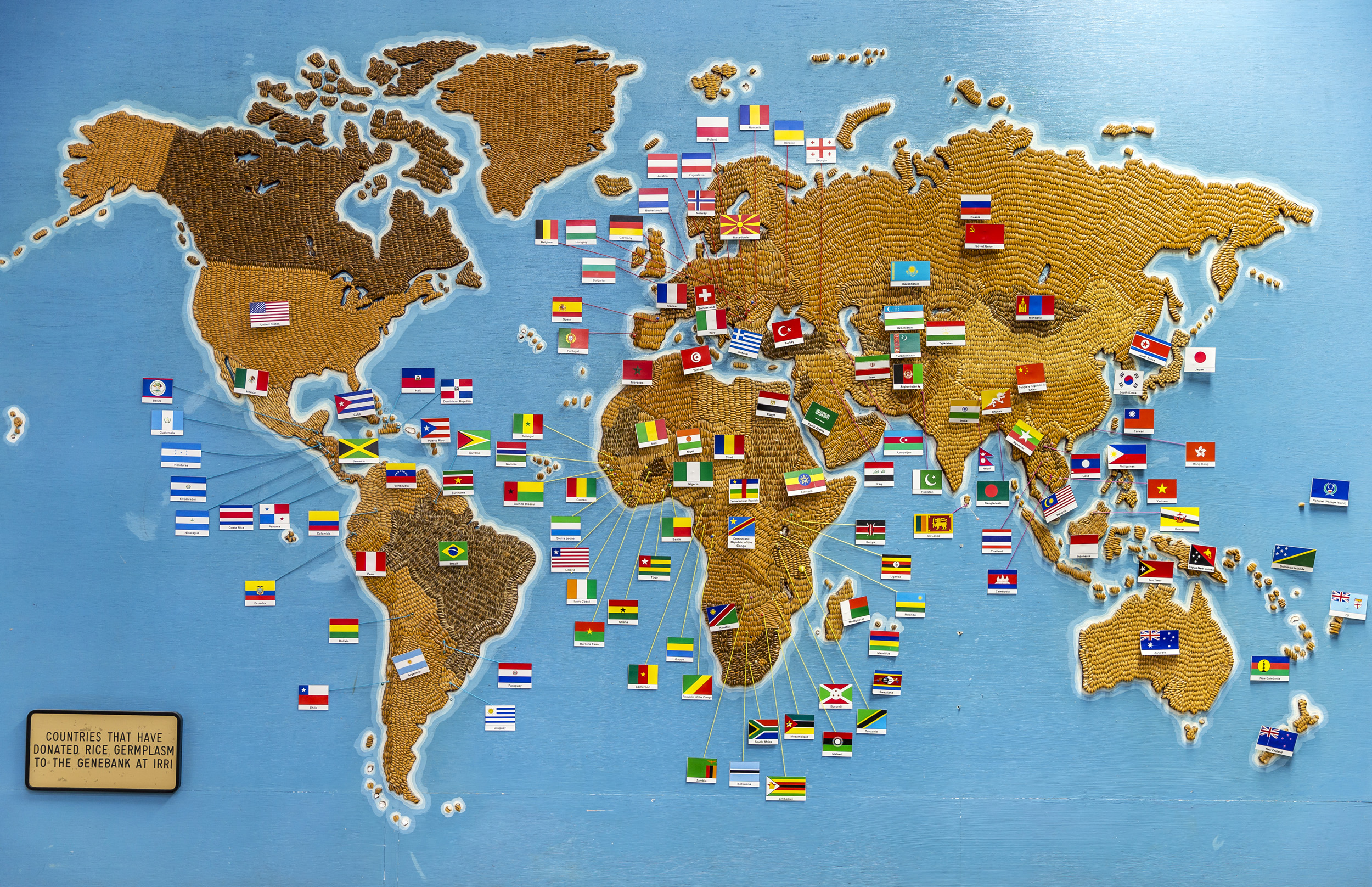



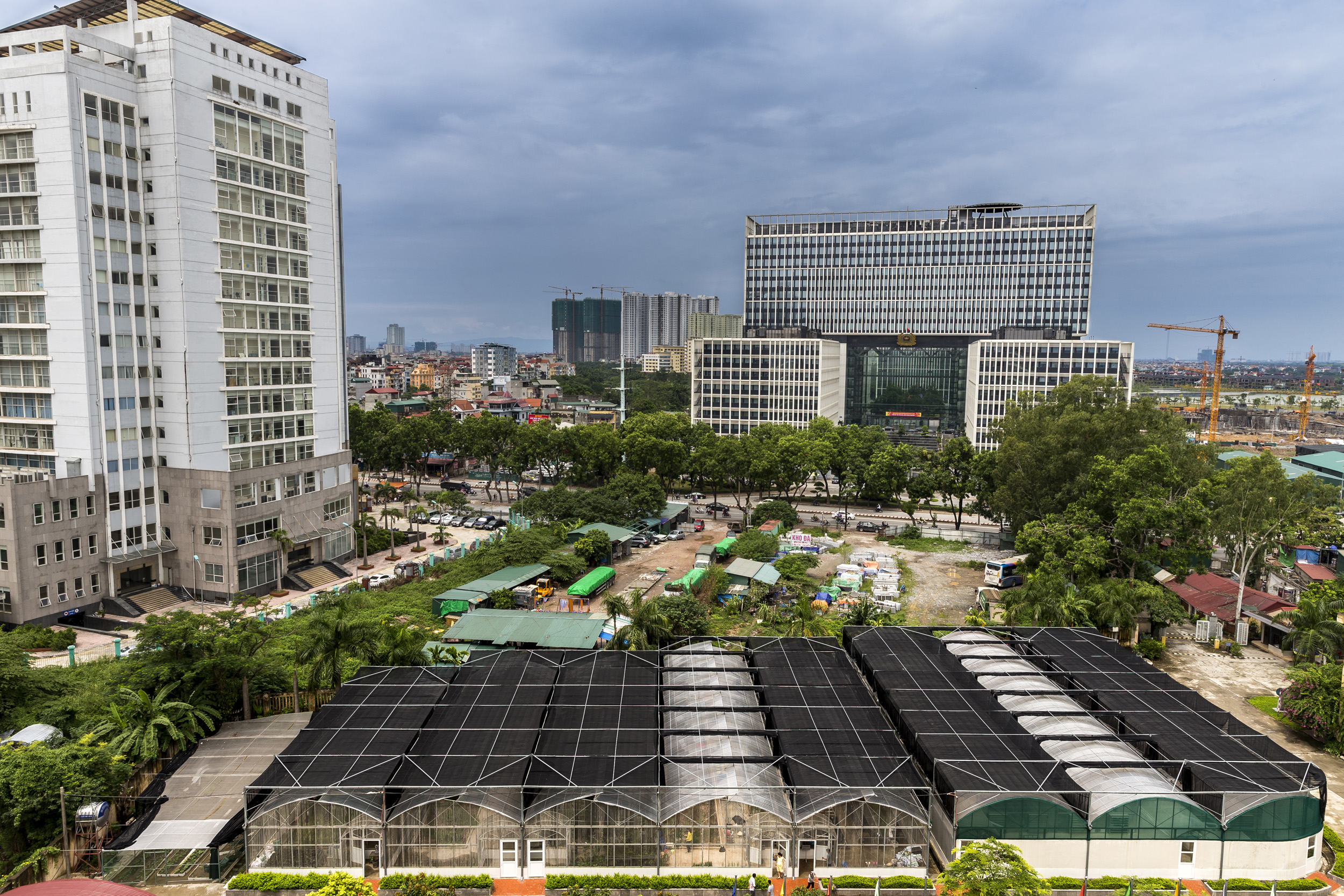
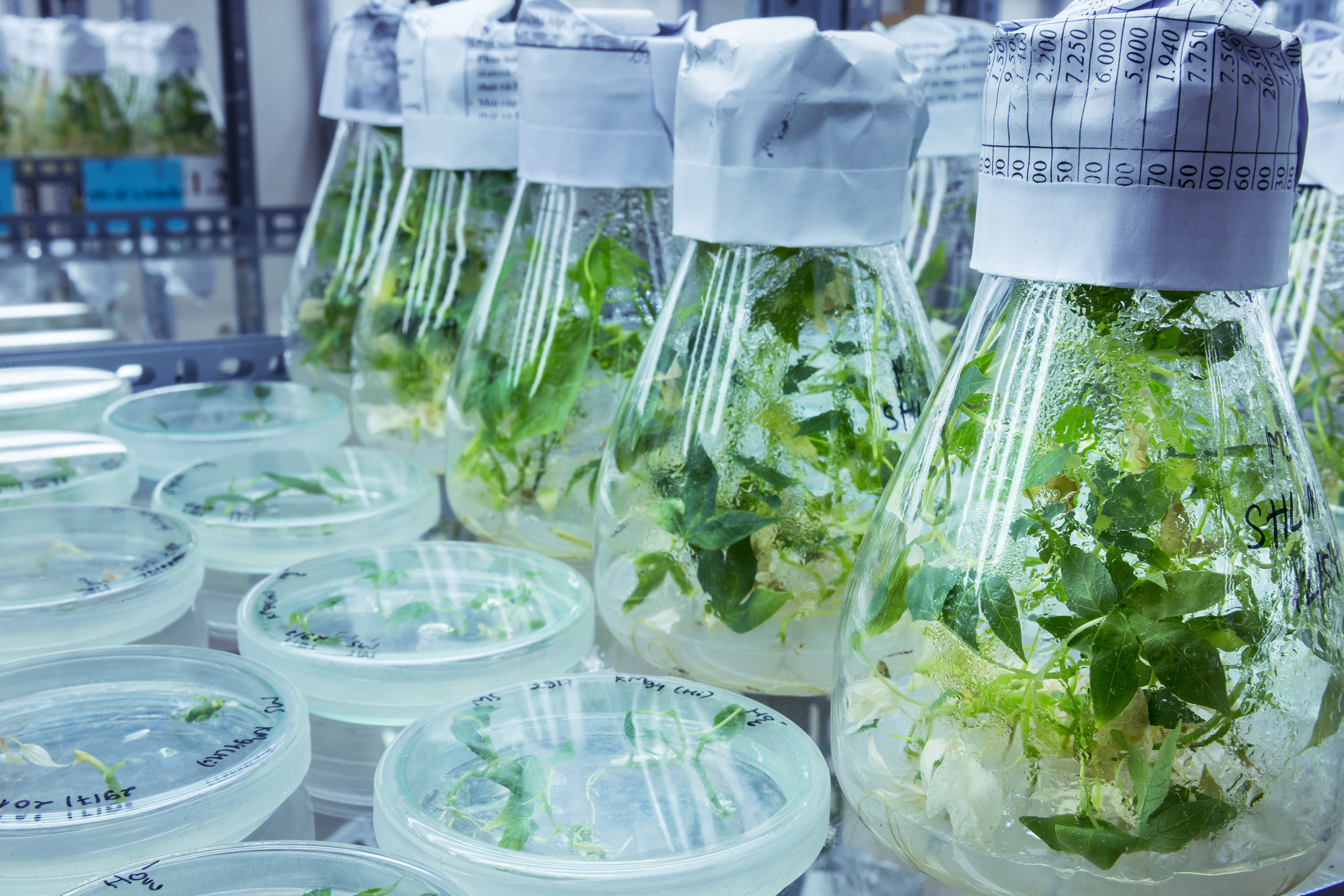
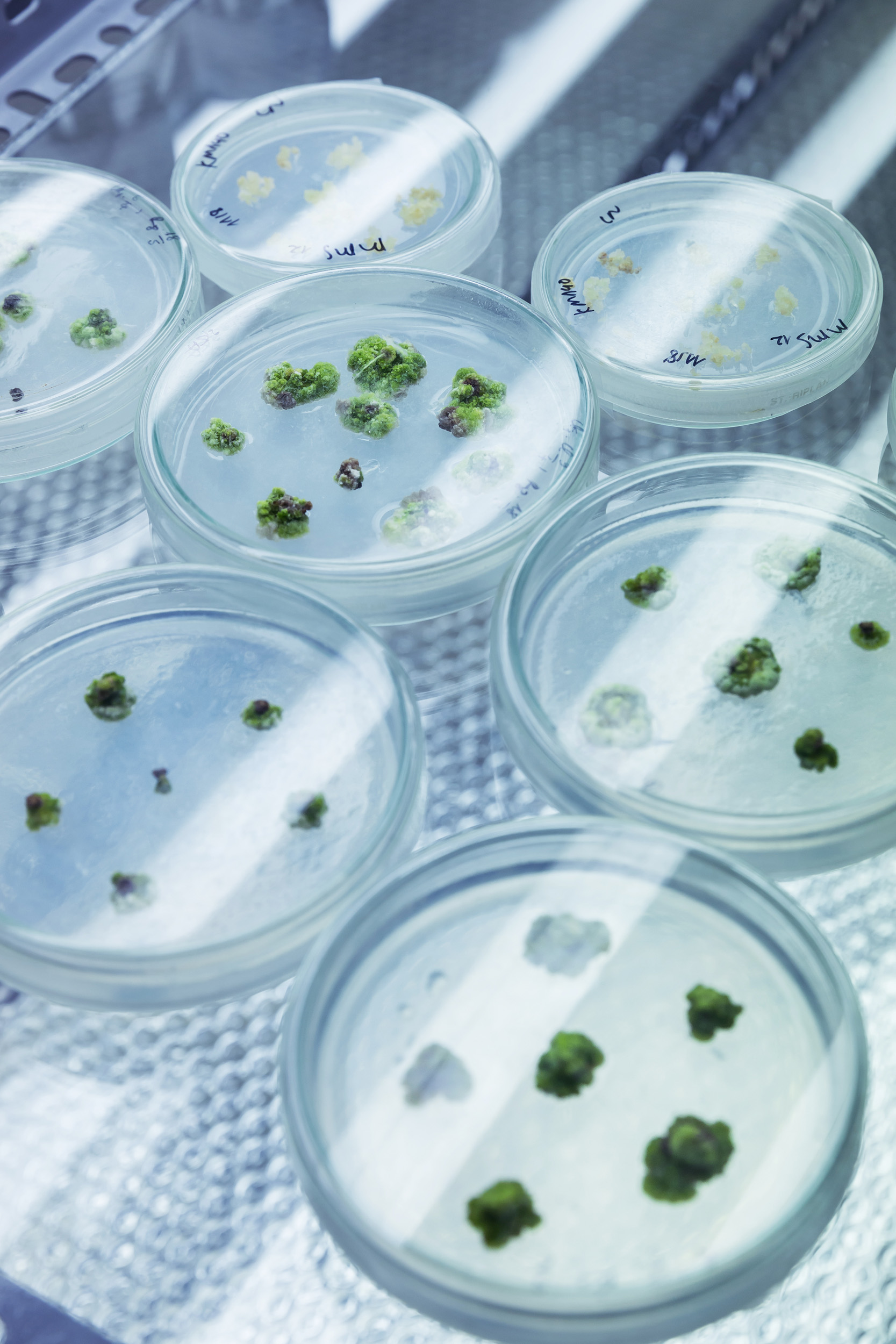
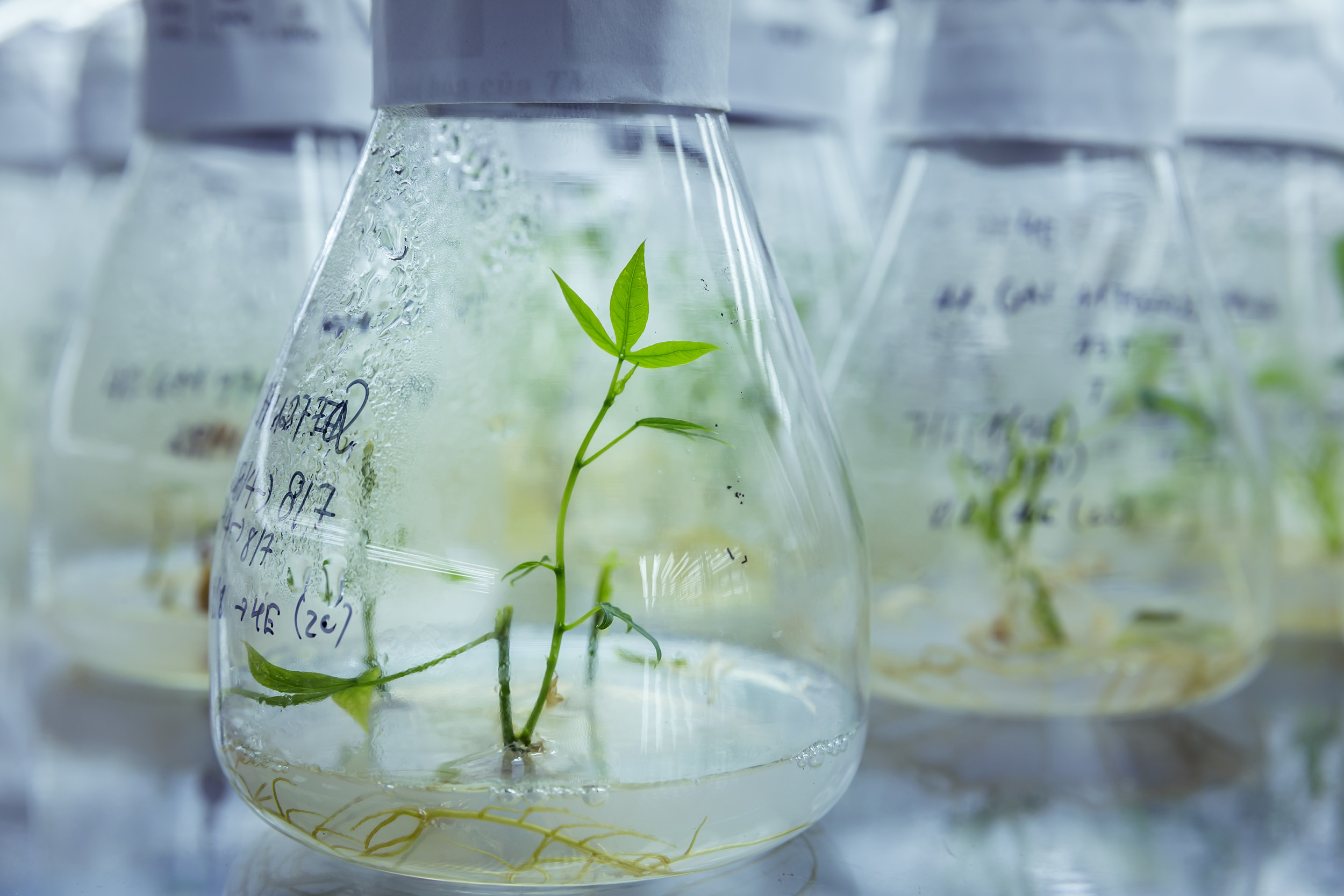
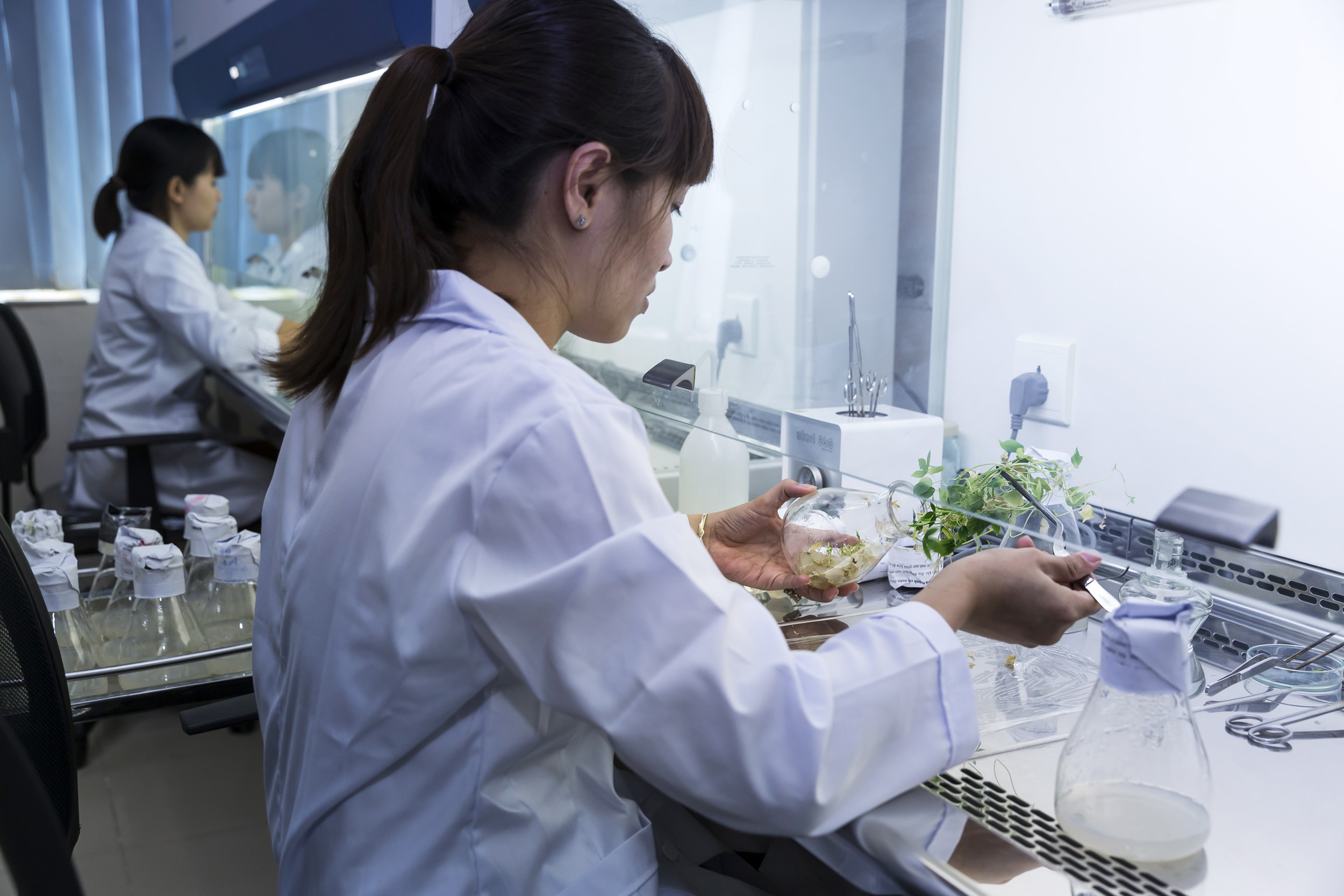
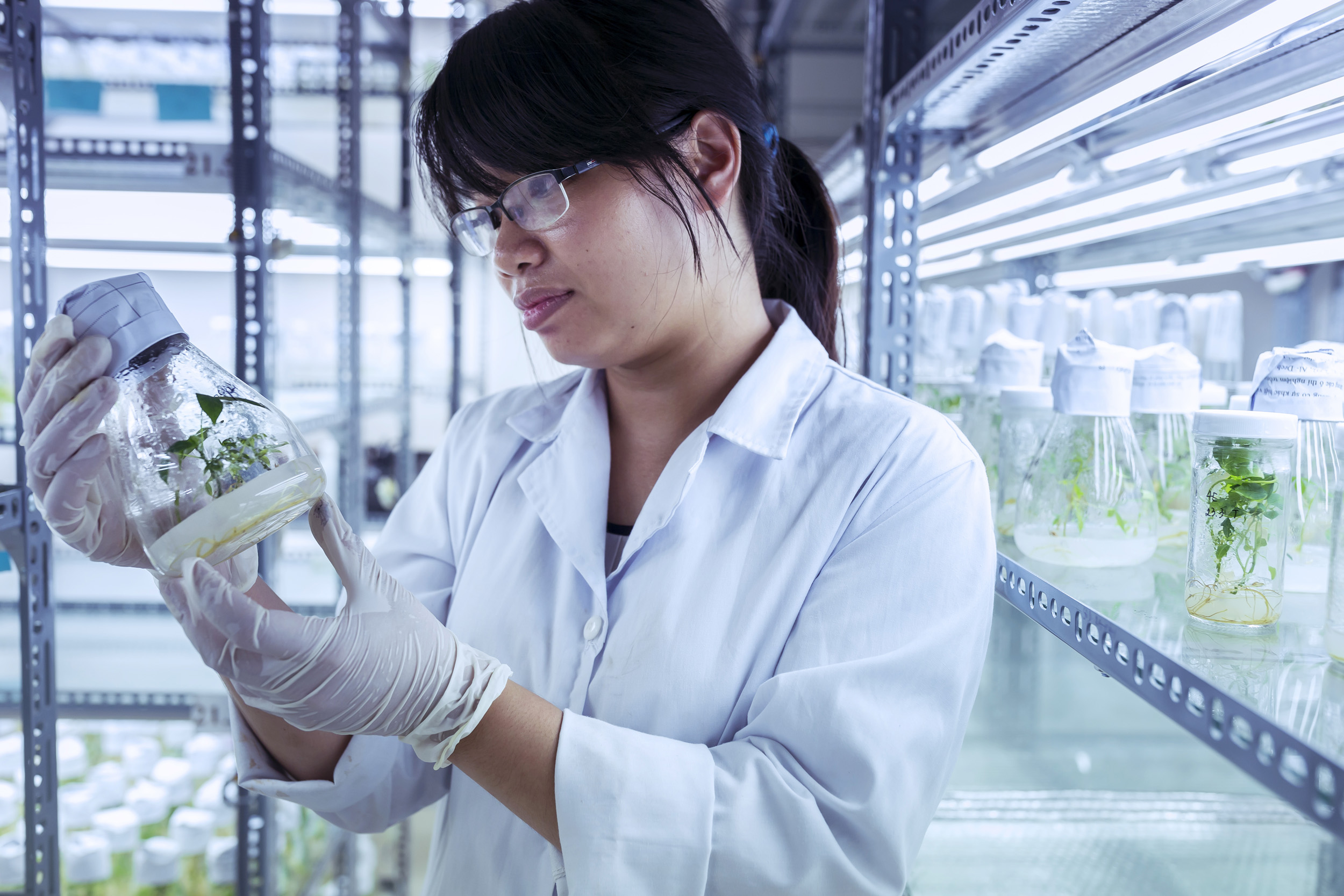
BANAUE, PHILIPPINES: The Banaue Rice Terraces are 2,000-year-old terraces that were carved into the mountains of Ifugao in the Philippines by ancestors of the indigenous people. The Rice Terraces are commonly referred to as the "Eighth Wonder of the World". It is commonly thought that the terraces were built with minimal equipment, largely by hand. The terraces are located approximately 1500 metres (5000 ft) above sea level. They are fed by an ancient irrigation system from the rainforests above the terraces. (PHOTO BY BRENT STIRTON/REPORTAGE BY GETTY IMAGES FOR CROP TRUST.)
Banaue, Ifugao, Philippines, 8 August 2016: Ana Dulnuan-Habbiling is an Ifugaon leader with extensive knowledge of the Rice world in the area where she lives in the highlands of the Philippines. There is a long-standing tradition of rice growing in this area, something Ana speaks of as a tribute to the memory of her ancestors. She is seen with her family rice stocks, cleaning and preparing rice, cooking it and serving it to her family. She is also seen as she begins to clear her ceremonial rice paddy, something that will be seen by the other villagers as a sign that they too must begin to ready their paddies for planting. The rice they plant is known as aromatic and glutenous rice, a small group of rice strains they try to preserve and protect. Ana visited the International Rice Research Institute in Manila a few years ago where she was able to find a strain of rice her ancestors grew and which had been lost to her community, she now grows that rice again and is grateful to IRRI for the chance, in her words, to honor her ancestors. (Photo by Brent Stirton/Reportage by Getty Images for Crop Trust)
Banaue, Ifugao, Philippines, 8 August 2016: Ana Dulnuan-Habbiling is an Ifugaon leader with extensive knowledge of the Rice world in the area where she lives in the highlands of the Philippines. There is a long-standing tradition of rice growing in this area, something Ana speaks of as a tribute to the memory of her ancestors. She is seen with her family rice stocks, cleaning and preparing rice, cooking it and serving it to her family. She is also seen as she begins to clear her ceremonial rice paddy, something that will be seen by the other villagers as a sign that they too must begin to ready their paddies for planting. The rice they plant is known as aromatic and glutenous rice, a small group of rice strains they try to preserve and protect. Ana visited the International Rice Research Institute in Manila a few years ago where she was able to find a strain of rice her ancestors grew and which had been lost to her community, she now grows that rice again and is grateful to IRRI for the chance, in her words, to honor her ancestors. (Photo by Brent Stirton/Reportage by Getty Images for Crop Trust)
Banaue, Ifugao, Philippines, 8 August 2016: Ana Dulnuan-Habbiling is an Ifugaon leader with extensive knowledge of the Rice world in the area where she lives in the highlands of the Philippines. There is a long-standing tradition of rice growing in this area, something Ana speaks of as a tribute to the memory of her ancestors. She is seen with her family rice stocks, cleaning and preparing rice, cooking it and serving it to her family. She is also seen as she begins to clear her ceremonial rice paddy, something that will be seen by the other villagers as a sign that they too must begin to ready their paddies for planting. The rice they plant is known as aromatic and glutenous rice, a small group of rice strains they try to preserve and protect. Ana visited the International Rice Research Institute in Manila a few years ago where she was able to find a strain of rice her ancestors grew and which had been lost to her community, she now grows that rice again and is grateful to IRRI for the chance, in her words, to honor her ancestors. (Photo by Brent Stirton/Reportage by Getty Images for Crop Trust)
Banaue, Ifugao, Philippines, 8 August 2016: Ana Dulnuan-Habbiling is an Ifugaon leader with extensive knowledge of the Rice world in the area where she lives in the highlands of the Philippines. There is a long-standing tradition of rice growing in this area, something Ana speaks of as a tribute to the memory of her ancestors. She is seen with her family rice stocks, cleaning and preparing rice, cooking it and serving it to her family. She is also seen as she begins to clear her ceremonial rice paddy, something that will be seen by the other villagers as a sign that they too must begin to ready their paddies for planting. The rice they plant is known as aromatic and glutenous rice, a small group of rice strains they try to preserve and protect. Ana visited the International Rice Research Institute in Manila a few years ago where she was able to find a strain of rice her ancestors grew and which had been lost to her community, she now grows that rice again and is grateful to IRRI for the chance, in her words, to honor her ancestors. (Photo by Brent Stirton/Reportage by Getty Images for Crop Trust)
Banaue, Ifugao, Philippines, 8 August 2016: Ana Dulnuan-Habbiling is an Ifugaon leader with extensive knowledge of the Rice world in the area where she lives in the highlands of the Philippines. There is a long-standing tradition of rice growing in this area, something Ana speaks of as a tribute to the memory of her ancestors. She is seen with her family rice stocks, cleaning and preparing rice, cooking it and serving it to her family. She is also seen as she begins to clear her ceremonial rice paddy, something that will be seen by the other villagers as a sign that they too must begin to ready their paddies for planting. The rice they plant is known as aromatic and glutenous rice, a small group of rice strains they try to preserve and protect. Ana visited the International Rice Research Institute in Manila a few years ago where she was able to find a strain of rice her ancestors grew and which had been lost to her community, she now grows that rice again and is grateful to IRRI for the chance, in her words, to honor her ancestors. (Photo by Brent Stirton/Reportage by Getty Images for Crop Trust)
Banaue, Ifugao, Philippines, 8 August 2016: Ana Dulnuan-Habbiling is an Ifugaon leader with extensive knowledge of the Rice world in the area where she lives in the highlands of the Philippines. There is a long-standing tradition of rice growing in this area, something Ana speaks of as a tribute to the memory of her ancestors. She is seen with her family rice stocks, cleaning and preparing rice, cooking it and serving it to her family. She is also seen as she begins to clear her ceremonial rice paddy, something that will be seen by the other villagers as a sign that they too must begin to ready their paddies for planting. The rice they plant is known as aromatic and glutenous rice, a small group of rice strains they try to preserve and protect. Ana visited the International Rice Research Institute in Manila a few years ago where she was able to find a strain of rice her ancestors grew and which had been lost to her community, she now grows that rice again and is grateful to IRRI for the chance, in her words, to honor her ancestors. (Photo by Brent Stirton/Reportage by Getty Images for Crop Trust)
Banaue, Ifugao, Philippines, 8 August 2016: Ana Dulnuan-Habbiling is an Ifugaon leader with extensive knowledge of the Rice world in the area where she lives in the highlands of the Philippines. There is a long-standing tradition of rice growing in this area, something Ana speaks of as a tribute to the memory of her ancestors. She is seen with her family rice stocks, cleaning and preparing rice, cooking it and serving it to her family. She is also seen as she begins to clear her ceremonial rice paddy, something that will be seen by the other villagers as a sign that they too must begin to ready their paddies for planting. The rice they plant is known as aromatic and glutenous rice, a small group of rice strains they try to preserve and protect. Ana visited the International Rice Research Institute in Manila a few years ago where she was able to find a strain of rice her ancestors grew and which had been lost to her community, she now grows that rice again and is grateful to IRRI for the chance, in her words, to honor her ancestors. (Photo by Brent Stirton/Reportage by Getty Images for Crop Trust)
PUEBLO ANTONIA, DAVAO, PHILIPPINES, 10 AUGUST 2016: Maize farmer Juan Dajao, 59, examines corn ears in his maize field in the district of Gawad Kalinga. 54 farmers grow maize in this area over 30 hectares. It is a traditional crop in Davoa, its origins lying in trade between Spain and the Philippines going back centuries. The crop is resiliant, organic and does not require much maintenance or pesticide use. Corn in the Philippines has traditionally been associated with the poor and is more affordable than rice. It has a lower glycemic index and is a higher source of energy. Rice may be more expensive but it is not as good for you. High blood sugar is often linked to the consumption of white rice. If managed correctly, corn could address the need for the Philippines to import rice to feed its people. In the Philippines it is most often consumed once milled and looks very similar to rice on the plate. (Photo by Brent Stirton/Reportage by Getty Images for Crop Trust.)
PUEBLO ANTONIA, DAVAO, PHILIPPINES, 10 AUGUST 2016: A Maize farmer seen riding his water buffalo while inspecting his maize field in the district of Gawad Kalinga. 54 farmers grow maize in this area over 30 hectares. It is a traditional crop in Davoa, its origins lying in trade between Spain and the Philippines going back centuries. The crop is resiliant, organic and does not require much maintenance or pesticide use. Corn in the Philippines has traditionally been associated with the poor and is more affordable than rice. It has a lower glycemic index and is a higher source of energy. Rice may be more expensive but it is not as good for you. High blood sugar is often linked to the consumption of white rice. If managed correctly, corn could address the need for the Philippines to import rice to feed its people. In the Philippines it is most often consumed once milled and looks very similar to rice on the plate. (Photo by Brent Stirton/Reportage by Getty Images for Crop Trust.)
PUEBLO ANTONIA, DAVAO, PHILIPPINES, 10 AUGUST 2016: Juan Dajao, 59, sits with his family and prepares freshly harvested corn for milling in the district of Gawad Kalinga. 54 farmers grow maize in this area over 30 hectares. It is a traditional crop in Davoa, its origins lying in trade between Spain and the Philippines going back centuries. The crop is resiliant, organic and does not require much maintenance or pesticide use. Corn in the Philippines has traditionally been associated with the poor and is more affordable than rice. It has a lower glycemic index and is a higher source of energy. Rice may be more expensive but it is not as good for you. High blood sugar is often linked to the consumption of white rice. If managed correctly, corn could address the need for the Philippines to import rice to feed its people. In the Philippines it is most often consumed once milled and looks very similar to rice on the plate. (Photo by Brent Stirton/Reportage by Getty Images for Crop Trust.)
PUEBLO ANTONIA, DAVAO, PHILIPPINES, 10 AUGUST 2016: Maize farmer Juan Dajao, 59, and his wife Maria cook milled corn in the district of Gawad Kalinga. They use corn cobs to fuel their cooking fire. 54 farmers grow maize in this area over 30 hectares. It is a traditional crop in Davoa, its origins lying in trade between Spain and the Philippines going back centuries. The crop is resiliant, organic and does not require much maintenance or pesticide use. Corn in the Philippines has traditionally been associated with the poor and is more affordable than rice. It has a lower glycemic index and is a higher source of energy. Rice may be more expensive but it is not as good for you. High blood sugar is often linked to the consumption of white rice. If managed correctly, corn could address the need for the Philippines to import rice to feed its people. In the Philippines it is most often consumed once milled and looks very similar to rice on the plate. (Photo by Brent Stirton/Reportage by Getty Images for Crop Trust.)
PUEBLO ANTONIA, DAVAO, PHILIPPINES, 10 AUGUST 2016: Maize farmer Juan Dajao, 59, and his wife Maria eat with their son a meal of milled corn in the district of Gawad Kalinga. They use corn cobs to fuel their cooking fire. 54 farmers grow maize in this area over 30 hectares. It is a traditional crop in Davoa, its origins lying in trade between Spain and the Philippines going back centuries. The crop is resiliant, organic and does not require much maintenance or pesticide use. Corn in the Philippines has traditionally been associated with the poor and is more affordable than rice. It has a lower glycemic index and is a higher source of energy. Rice may be more expensive but it is not as good for you. High blood sugar is often linked to the consumption of white rice. If managed correctly, corn could address the need for the Philippines to import rice to feed its people. In the Philippines it is most often consumed once milled and looks very similar to rice on the plate. (Photo by Brent Stirton/Reportage by Getty Images for Crop Trust.)
SON LA, VIETNAM, 19 AUGUST 2016: Cassava crops fill the hills close to Son La city. (Photo by Brent Stirton/Reportage by Getty Images.)
SON LA, VIETNAM, 19 AUGUST 2016: Thai minority women move amongst Cassava crops that fill the hills close to Son La city. (Photo by Brent Stirton/Reportage by Getty Images.)
SON LA, VIETNAM, 19 AUGUST 2016: Thai minority women move amongst Cassava crops that fill the hills close to Son La city. (Photo by Brent Stirton/Reportage by Getty Images.)
SON LA, VIETNAM, 20 AUGUST 2016: Men from a farming hamlet in Son La province construct an irrigation system for their rice paddies. Most of these farmers will eat the rice they produce, using the proceeds from corn they raise for animal feed to purchase it. (Photo by Brent Stirton/Reportage by Getty Images.)
SON LA, VIETNAM, 18 AUGUST 2016: Farmers spray rice crops with pesticides to guarantee a good harvest. In these farming valleys rice, cassava and corn are all grown simultaneously. the majority of this corn will go towards animal feed, a leading commercial crop for Vietnamese farmers, most of the cassava will go for industrial purposes and and animal feed, the rice is most often for personal consumption. (Photo by Brent Stirton/Reportage by Getty Images.)
SON LA, VIETNAM, 18 AUGUST 2016: Farmers plant rice in sparse areas of the paddy to ensure a good harvest. In these farming valleys rice, cassava and corn are all grown simultaneously. the majority of this corn will go towards animal feed, a leading commercial crop for Vietnamese farmers, most of the cassava will go for industrial purposes and and animal feed, the rice is most often for personal consumption. (Photo by Brent Stirton/Reportage by Getty Images.)
SON LA, VIETNAM, 18 AUGUST 2016: Farmers plant rice in sparse areas of the paddy to ensure a good harvest. In these farming valleys rice, cassava and corn are all grown simultaneously. the majority of this corn will go towards animal feed, a leading commercial crop for Vietnamese farmers, most of the cassava will go for industrial purposes and and animal feed, the rice is most often for personal consumption. (Photo by Brent Stirton/Reportage by Getty Images.)
BANAUE, PHILIPPINES: The Banaue Rice Terraces are 2,000-year-old terraces that were carved into the mountains of Ifugao in the Philippines by ancestors of the indigenous people. The Rice Terraces are commonly referred to as the "Eighth Wonder of the World". It is commonly thought that the terraces were built with minimal equipment, largely by hand. The terraces are located approximately 1500 metres (5000 ft) above sea level. They are fed by an ancient irrigation system from the rainforests above the terraces. (PHOTO BY BRENT STIRTON/REPORTAGE BY GETTY IMAGES FOR CROP TRUST.)
MU CANG CHAI, YEN BAI, VIETNAM, 5 JUNE 2015: Local people prepare the rice paddies Mu Cang Chai is famous for. (Photo by Brent Stirton/Getty Images.)
MU CANG CHAI, YEN BAI, VIETNAM, 6 JUNE 2015: Local people prepare the rice paddies Mu Cang Chai is famous for. Rice is the staple crop in a community where people earn on average less than one dollar a day. (Photo by Brent Stirton/Getty Images)
MU CANG CHAI, YEN BAI, VIETNAM, 5 JUNE 2015: Local people prepare the rice paddies Mu Cang Chai is famous for. (Photo by Brent Stirton/Getty Images)
MU CANG CHAI, YEN BAI, VIETNAM, 5 JUNE 2015: local people prepare the rice paddies Mu Cang Chai is famous for. (Photo by Brent Stirton/Getty Images)
MU CANG CHAI, YEN BAI, VIETNAM, 6 JUNE 2015: A Hmong rice farmer tills his paddy with his water buffalo in a landscape of beautiful shapes that Mu Cang Chai is famous for. Rice is the staple crop in a community where people earn on average less than one dollar a day. (Photo by Brent Stirton/Novartis)
MU CANG CHAI, YEN BAI, VIETNAM, 6 JUNE 2015: A view over a landscape of beautiful shapes showcases the rice paddies that Mu Cang Chai is famous for. Rice is the staple crop in a community where people earn on average less than one dollar a day. (Photo by Brent Stirton/Getty Images)
SON LA, VIETNAM, 18 AUGUST 2016: Images of Thai minority people in Vietnam harvesting corn and preparing it for transport. In these farming valleys rice, cassava and corn are all grown simultaneously, the majority of this corn will go towards animal feed, a leading commercial crop for Vietnamese farmers, most of the cassava will go for industrial purposes and and animal feed, the rice is most often for personal consumption. (Photo by Brent Stirton/Reportage by Getty Images.)
SON LA, VIETNAM, 18 AUGUST 2016: Images of Thai minority people in Vietnam harvesting corn and preparing it for transport. In these farming valleys rice, cassava and corn are all grown simultaneously, the majority of this corn will go towards animal feed, a leading commercial crop for Vietnamese farmers, most of the cassava will go for industrial purposes and and animal feed, the rice is most often for personal consumption. (Photo by Brent Stirton/Reportage by Getty Images.)
SON LA, VIETNAM, 18 AUGUST 2016: Images of Thai minority people in Vietnam harvesting corn and preparing it for transport. In these farming valleys rice, cassava and corn are all grown simultaneously, the majority of this corn will go towards animal feed, a leading commercial crop for Vietnamese farmers, most of the cassava will go for industrial purposes and and animal feed, the rice is most often for personal consumption. (Photo by Brent Stirton/Reportage by Getty Images.)
SON LA, VIETNAM, 18 AUGUST 2016: Images of Thai minority people in Vietnam harvesting corn and preparing it for transport. In these farming valleys rice, cassava and corn are all grown simultaneously, the majority of this corn will go towards animal feed, a leading commercial crop for Vietnamese farmers, most of the cassava will go for industrial purposes and and animal feed, the rice is most often for personal consumption. (Photo by Brent Stirton/Reportage by Getty Images.)
SON LA, VIETNAM, 18 AUGUST 2016: Images of Thai minority people in Vietnam harvesting corn and preparing it for transport. In these farming valleys rice, cassava and corn are all grown simultaneously, the majority of this corn will go towards animal feed, a leading commercial crop for Vietnamese farmers, most of the cassava will go for industrial purposes and and animal feed, the rice is most often for personal consumption. (Photo by Brent Stirton/Reportage by Getty Images.)
SON LA, VIETNAM, 18 AUGUST 2016: Early harvest corn is sheltered from rain on an old runway. The majority of this corn will go towards animal feed, a leading commercial crop for Vietnamese farmers. Most of these farmers will eat rice, using the proceeds from corn to purchase it. (Photo by Brent Stirton/Reportage by Getty Images.)
SON LA, VIETNAM, 18 AUGUST 2016: Early harvest corn drying in the sun and at facilities for processsing, the majority of this corn will go towards animal feed, a leading commercial crop for Vietnamese farmers. Most of these farmers will eat rice, using the proceeds from corn to purchase it. (Photo by Brent Stirton/Reportage by Getty Images.)
SON LA, VIETNAM, 18 AUGUST 2016: Early harvest corn drying in the sun and at facilities for processsing, the majority of this corn will go towards animal feed, a leading commercial crop for Vietnamese farmers. Most of these farmers will eat rice, using the proceeds from corn to purchase it. (Photo by Brent Stirton/Reportage by Getty Images.)
PUEBLO ANTONIA, DAVAO, PHILIPPINES, 10 AUGUST 2016: A corn mill mills farmers corn in a poor section of Davao. Corn is a traditional crop in Davoa, its origins lying in trade between Spain and the Philippines going back centuries. The crop is resiliant, organic and does not require much maintenance or pesticide use. Corn in the Philippines has traditionally been associated with the poor and is more affordable than rice. It has a lower glycemic index and is a higher source of energy. Rice may be more expensive but it is not as good for you. High blood sugar is often linked to the consumption of white rice. If managed correctly, corn could address the need for the Philippines to import rice to feed its people. In the Philippines it is most often consumed once milled and looks very similar to rice on the plate. (Photo by Brent Stirton/Reportage by Getty Images for Crop Trust.)
PUEBLO ANTONIA, DAVAO, PHILIPPINES, 10 AUGUST 2016: Workers at a Casava farmers co-operative use machines to prepare and wash Casava for the market. Casava is traditional a crop eaten by the Islamic population of Davao but this is changing. Two kinds are grown, a crop for animal feed and a crop for human consumption. Food products like cakes, flour, and thickening agents are produced from it and its is also used industrially in adhesives. Casava is increasing in popularity amongst farmers as a staple for animal feed and production has risen steadily over the last 5 years. It is replacing the more expensive corn for this purpose. Casava is very drought tolerant and resistant to Typhoon weather. (Photo by Brent Stirton/Reportage by Getty Images for Crop Trust.)
PUEBLO ANTONIA, DAVAO, PHILIPPINES, 10 AUGUST 2016: Workers at a Casava farmers co-operative use machines to prepare and wash Casava for the market. Casava is traditional a crop eaten by the Islamic population of Davao but this is changing. Two kinds are grown, a crop for animal feed and a crop for human consumption. Food products like cakes, flour, and thickening agents are produced from it and its is also used industrially in adhesives. Casava is increasing in popularity amongst farmers as a staple for animal feed and production has risen steadily over the last 5 years. It is replacing the more expensive corn for this purpose. Casava is very drought tolerant and resistant to Typhoon weather. (Photo by Brent Stirton/Reportage by Getty Images for Crop Trust.)
DAVAO, PHILIPPINES, 10 AUGUST 2016: Casava farmers harvest ripe Casava tubers for a co-operative outside of Davao. Casava is traditional a crop eaten by the Islamic population of Davao but this is changing. Two kinds are grown, a crop for animal feed and a crop for human consumption. Food products like cakes, flour, and thickening agents are produced from it and its is also used industrially in adhesives. Casava is increasing in popularity amongst farmers as a staple for animal feed and production has risen steadily over the last 5 years. It is replacing the more expensive corn for this purpose. Casava is very drought tolerant and resistant to Typhoon weather. (Photo by Brent Stirton/Reportage by Getty Images for Crop Trust.)
DAVAO, PHILIPPINES, 10 AUGUST 2016: Casava is prepared and sold in the markets of Davao. Casava is traditional a crop eaten by the Islamic population of Davao but this is changing. Two kinds are grown, a crop for animal feed and a crop for human consumption. Food products like cakes, flour, and thickening agents are produced from it and its is also used industrially in adhesives. Casava is increasing in popularity amongst farmers as a staple for animal feed and production has risen steadily over the last 5 years. It is replacing the more expensive corn for this purpose. Casava is very drought tolerant and resistant to Typhoon weather. (Photo by Brent Stirton/Reportage by Getty Images for Crop Trust.)
SON LA, VIETNAM, 18 AUGUST 2016: Small vegetable sellers seen in the villages closer to Son La city. (Photo by Brent Stirton/Reportage by Getty Images.)
SON LA, VIETNAM, 18 AUGUST 2016: Pigs are fed processed corn as animal feed in pens at a corn processing site close to Son La city. In these farming valleys rice, cassava and corn are all grown simultaneously, the majority of this corn will go towards animal feed, a leading commercial crop for Vietnamese farmers, most of the cassava will go for industrial purposes and and animal feed, the rice is most often for personal consumption. (Photo by Brent Stirton/Reportage by Getty Images.)
SON LA, VIETNAM, 18 AUGUST 2016: Pigs are fed processed corn as animal feed in pens at a corn processing site close to Son La city. In these farming valleys rice, cassava and corn are all grown simultaneously, the majority of this corn will go towards animal feed, a leading commercial crop for Vietnamese farmers, most of the cassava will go for industrial purposes and and animal feed, the rice is most often for personal consumption. (Photo by Brent Stirton/Reportage by Getty Images.)
DAVAO, PHILIPPINES, 10 AUGUST 2016: Workers unload rice imported from Vietnam into a warehouse on the docks in Davao, Philippines. The Philippines used to produce more rice than any other country in the region but today finds itself importing to make up demand. This is due to increased demand, rising wealth, crop destruction by the weather and other factors. (Photo by Brent Stirton/Reportage by Getty Images for Crop Trust.)
DAVAO, PHILIPPINES, 10 AUGUST 2016: Workers unload rice imported from Vietnam into a warehouse on the docks in Davao, Philippines. The Philippines used to produce more rice than any other country in the region but today finds itself importing to make up demand. This is due to increased demand, rising wealth, crop destruction by the weather and other factors. (Photo by Brent Stirton/Reportage by Getty Images for Crop Trust.)
IRRI, LOS BANOS, PHILIPPINES, 9 AUGUST 2016: The International Rice Research Institute. IRRI is the world’s premier research organization dedicated to reducing poverty and hunger through rice science; improving the health and welfare of rice farmers and consumers; and protecting the rice-growingenvironment for future generations. IRRI is an independent, nonprofit research andeducational institute founded in 1960 by the Ford and Rockefeller foundations, withsupport from the Philippine government. The institute, headquartered in LosBaños,Philippines, has offices in 17 rice-growing countries in Asia and Africa, and About 1,000 staff members. Working with in-country partners, IRRI develops advanced rice varieties that yield more grain and better withstand pests and disease as well as flooding, drought, and other destructive effects of climate change. More than half of the rice area in Asia is planted to IRRI-bred varieties or their progenies. The institute develops new and improved methods and technologies that enable farmers to manage their farms profitably and sustainably, and recommends rice varieties and agricultural practices suitable to particular farm conditions as well as consumer preferences. IRRI assists national agricultural research and extension systems in formulating and implementing country rice sector strategies. (Photo by Brent Stirton/Reportage by Getty Images for Crop Trust.)
IRRI, LOS BANOS, PHILIPPINES, 9 AUGUST 2016: Experimental rice being grown for testing at the International Rice Research Institute. IRRI is the world’s premier research organization dedicated to reducing poverty and hunger through rice science; improving the health and welfare of rice farmers and consumers; and protecting the rice-growingenvironment for future generations. IRRI is an independent, nonprofit research andeducational institute founded in 1960 by the Ford and Rockefeller foundations, withsupport from the Philippine government. The institute, headquartered in LosBaños,Philippines, has offices in 17 rice-growing countries in Asia and Africa, and About 1,000 staff members. Working with in-country partners, IRRI develops advanced rice varieties that yield more grain and better withstand pests and disease as well as flooding, drought, and other destructive effects of climate change. More than half of the rice area in Asia is planted to IRRI-bred varieties or their progenies. The institute develops new and improved methods and technologies that enable farmers to manage their farms profitably and sustainably, and recommends rice varieties and agricultural practices suitable to particular farm conditions as well as consumer preferences. IRRI assists national agricultural research and extension systems in formulating and implementing country rice sector strategies. (Photo by Brent Stirton/Reportage by Getty Images for Crop Trust.)
IRRI, LOS BANOS, PHILIPPINES, 9 AUGUST 2016: Workers harvest experimental rice for testing at the International Rice Research Institute. IRRI is the world’s premier research organization dedicated to reducing poverty and hunger through rice science; improving the health and welfare of rice farmers and consumers; and protecting the rice-growingenvironment for future generations. IRRI is an independent, nonprofit research andeducational institute founded in 1960 by the Ford and Rockefeller foundations, withsupport from the Philippine government. The institute, headquartered in LosBaños,Philippines, has offices in 17 rice-growing countries in Asia and Africa, and About 1,000 staff members. Working with in-country partners, IRRI develops advanced rice varieties that yield more grain and better withstand pests and disease as well as flooding, drought, and other destructive effects of climate change. More than half of the rice area in Asia is planted to IRRI-bred varieties or their progenies. The institute develops new and improved methods and technologies that enable farmers to manage their farms profitably and sustainably, and recommends rice varieties and agricultural practices suitable to particular farm conditions as well as consumer preferences. IRRI assists national agricultural research and extension systems in formulating and implementing country rice sector strategies. (Photo by Brent Stirton/Reportage by Getty Images for Crop Trust.)
IRRI, LOS BANOS, PHILIPPINES, 9 AUGUST 2016: Workers conduct drought resistance rice sampling at the International Rice Research Institute. IRRI is the world’s premier research organization dedicated to reducing poverty and hunger through rice science; improving the health and welfare of rice farmers and consumers; and protecting the rice-growingenvironment for future generations. IRRI is an independent, nonprofit research andeducational institute founded in 1960 by the Ford and Rockefeller foundations, withsupport from the Philippine government. The institute, headquartered in LosBaños,Philippines, has offices in 17 rice-growing countries in Asia and Africa, and About 1,000 staff members. Working with in-country partners, IRRI develops advanced rice varieties that yield more grain and better withstand pests and disease as well as flooding, drought, and other destructive effects of climate change. More than half of the rice area in Asia is planted to IRRI-bred varieties or their progenies. The institute develops new and improved methods and technologies that enable farmers to manage their farms profitably and sustainably, and recommends rice varieties and agricultural practices suitable to particular farm conditions as well as consumer preferences. IRRI assists national agricultural research and extension systems in formulating and implementing country rice sector strategies. (Photo by Brent Stirton/Reportage by Getty Images for Crop Trust.)
IRRI, LOS BANOS, PHILIPPINES, 9 AUGUST 2016: Workers conduct drought resistance rice sampling at the International Rice Research Institute. IRRI is the world’s premier research organization dedicated to reducing poverty and hunger through rice science; improving the health and welfare of rice farmers and consumers; and protecting the rice-growingenvironment for future generations. IRRI is an independent, nonprofit research andeducational institute founded in 1960 by the Ford and Rockefeller foundations, withsupport from the Philippine government. The institute, headquartered in LosBaños,Philippines, has offices in 17 rice-growing countries in Asia and Africa, and About 1,000 staff members. Working with in-country partners, IRRI develops advanced rice varieties that yield more grain and better withstand pests and disease as well as flooding, drought, and other destructive effects of climate change. More than half of the rice area in Asia is planted to IRRI-bred varieties or their progenies. The institute develops new and improved methods and technologies that enable farmers to manage their farms profitably and sustainably, and recommends rice varieties and agricultural practices suitable to particular farm conditions as well as consumer preferences. IRRI assists national agricultural research and extension systems in formulating and implementing country rice sector strategies. (Photo by Brent Stirton/Reportage by Getty Images for Crop Trust.)
IRRI, LOS BANOS, PHILIPPINES, 9 AUGUST 2016: Dr Vera Cruz checks a rice experiment to monitor the progress of Blight at the International Rice Research Institute. IRRI is the world’s premier research organization dedicated to reducing poverty and hunger through rice science; improving the health and welfare of rice farmers and consumers; and protecting the rice-growingenvironment for future generations. IRRI is an independent, nonprofit research andeducational institute founded in 1960 by the Ford and Rockefeller foundations, withsupport from the Philippine government. The institute, headquartered in LosBaños,Philippines, has offices in 17 rice-growing countries in Asia and Africa, and About 1,000 staff members. Working with in-country partners, IRRI develops advanced rice varieties that yield more grain and better withstand pests and disease as well as flooding, drought, and other destructive effects of climate change. More than half of the rice area in Asia is planted to IRRI-bred varieties or their progenies. The institute develops new and improved methods and technologies that enable farmers to manage their farms profitably and sustainably, and recommends rice varieties and agricultural practices suitable to particular farm conditions as well as consumer preferences. IRRI assists national agricultural research and extension systems in formulating and implementing country rice sector strategies. (Photo by Brent Stirton/Reportage by Getty Images for Crop Trust.)
HANOI, VIETNAM, 15 AUGUST 2016: Greenhouse experimental rice sampling for genetic research purposes in the greenhouses of the International Center for Tropical Agriculture. CIAT’s mission is to reduce hunger and poverty, and improve human nutrition in the tropics through research aimed at increasing the eco-efficiency of agriculture. Backed by the Colombian government and Rockefeller, Ford, and Kellogg Foundations, CIAT was formally established in 1967 and began its research in 1969. CIAT’s staff includes about 200 scientists. Supported by a wide array of donors, the Center collaborates with hundreds of partners to conduct high-quality research and translate the results into development impact. A Board of Trustees provides oversight of CIAT’s research and financial management. CIAT develops technologies, methods, and knowledge that better enable farmers, mainly smallholders, to enhance eco-efficiency in agriculture. This makes production more competitive and profitable as well as sustainable and resilient through economically and ecologically sound use of natural resources and purchased inputs. CIAT has global responsibility for the improvement of two staplefoods, cassava and common bean, together with tropical forages for livestock. In Latin America and the Caribbean, research is conducted on rice as well. Representing diverse food groups and a key component of the world’s agricultural biodiversity, those crops are vital for global food and nutrition security. In its work on agrobiodiversity, the Center employs advanced biotechnology to accelerate crop improvement. Progress in our crop research also depends on unique collections of genetic resources– 65,000 crop samples in all – which are held in trust for humanity. Alongside its research on agrobiodiversity, CIAT works in two other areas – soils and decision and policy analysis – which cut across all tropical crops and production environments. Center soil scientists conduct research across scales
HANOI, VIETNAM, 15 AUGUST 2016: Greenhouse experimental rice sampling for genetic research purposes in the greenhouses of the International Center for Tropical Agriculture. CIAT’s mission is to reduce hunger and poverty, and improve human nutrition in the tropics through research aimed at increasing the eco-efficiency of agriculture. Backed by the Colombian government and Rockefeller, Ford, and Kellogg Foundations, CIAT was formally established in 1967 and began its research in 1969. CIAT’s staff includes about 200 scientists. Supported by a wide array of donors, the Center collaborates with hundreds of partners to conduct high-quality research and translate the results into development impact. A Board of Trustees provides oversight of CIAT’s research and financial management. CIAT develops technologies, methods, and knowledge that better enable farmers, mainly smallholders, to enhance eco-efficiency in agriculture. This makes production more competitive and profitable as well as sustainable and resilient through economically and ecologically sound use of natural resources and purchased inputs. CIAT has global responsibility for the improvement of two staplefoods, cassava and common bean, together with tropical forages for livestock. In Latin America and the Caribbean, research is conducted on rice as well. Representing diverse food groups and a key component of the world’s agricultural biodiversity, those crops are vital for global food and nutrition security. In its work on agrobiodiversity, the Center employs advanced biotechnology to accelerate crop improvement. Progress in our crop research also depends on unique collections of genetic resources– 65,000 crop samples in all – which are held in trust for humanity. Alongside its research on agrobiodiversity, CIAT works in two other areas – soils and decision and policy analysis – which cut across all tropical crops and production environments. Center soil scientists conduct research across scales
HANOI, VIETNAM, 15 AUGUST 2016: Images of experiemental Cassava crops at the Root Crop Research and Development Center, (RCRDC,) where over 100 Cassava varieties from all over Vietnam have been sampled. On the left Nguyen Trong Hien, Deputy Director, looks at DNA based sampled of Cassava developed in conjunction with the national assessments of the International Center for Tropical Agriculture, (CIAT.) On the right Cassava researchers examine genetically modified Cassava designed for things like drought resistance, early harvest capabilities and disease resistance. Cassava is a root crop of tropical American origin, cassava (Manihot esculenta Crantz) has risen from relative obscurity in recent decades to become the world’s third most important source of dietary energy after maize and rice. Esteemed by smallholder farmers for its tolerance to drought and infertile soils, the crop is inherently eco-efficient, offering a reliable source of food as well as income from markets for a wide variety of food, feed, and industrial products. CIAT’s Genetic Resources Program conserves in vitro the world’s most important collection of cassava germplasm, encompassing a wide array of landraces together with wild species related to the cultivated crop. These materials are a valuable resource for cassava improvement worldwide. The Center’s Cassava Program develops £elite germplasm through the use of improved breeding methods, such as rapid-cycling recurrent selection and production of doubled haploids. This material is shared directly with research partners in Southeast Asia as well as Latin America and the Caribbean and in sub-Saharan Africa through the International Institute of Tropical Agriculture (IITA). Center cassava researchers also develop £source germplasm containing key traits, such as tolerance to postharvest physiological deterioration, resistance to whiteflies, and amylose-free or high-amylose starch. A root crop of tropical American origin, cassava (Manihot e
IRRI, LOS BANOS, PHILIPPINES, 9 AUGUST 2016: Seeds are checked during a rice experiment to monitor salinity at the International Rice Research Institute. IRRI is the world’s premier research organization dedicated to reducing poverty and hunger through rice science; improving the health and welfare of rice farmers and consumers; and protecting the rice-growingenvironment for future generations. IRRI is an independent, nonprofit research andeducational institute founded in 1960 by the Ford and Rockefeller foundations, withsupport from the Philippine government. The institute, headquartered in LosBaños,Philippines, has offices in 17 rice-growing countries in Asia and Africa, and About 1,000 staff members. Working with in-country partners, IRRI develops advanced rice varieties that yield more grain and better withstand pests and disease as well as flooding, drought, and other destructive effects of climate change. More than half of the rice area in Asia is planted to IRRI-bred varieties or their progenies. The institute develops new and improved methods and technologies that enable farmers to manage their farms profitably and sustainably, and recommends rice varieties and agricultural practices suitable to particular farm conditions as well as consumer preferences. IRRI assists national agricultural research and extension systems in formulating and implementing country rice sector strategies. (Photo by Brent Stirton/Reportage by Getty Images for Crop Trust.)
IRRI, LOS BANOS, PHILIPPINES, 9 AUGUST 2016: A worker hand pollinating rice plants to induce specific varieties at the International Rice Research Institute. IRRI is the world’s premier research organization dedicated to reducing poverty and hunger through rice science; improving the health and welfare of rice farmers and consumers; and protecting the rice-growingenvironment for future generations. IRRI is an independent, nonprofit research andeducational institute founded in 1960 by the Ford and Rockefeller foundations, withsupport from the Philippine government. The institute, headquartered in LosBaños,Philippines, has offices in 17 rice-growing countries in Asia and Africa, and About 1,000 staff members. Working with in-country partners, IRRI develops advanced rice varieties that yield more grain and better withstand pests and disease as well as flooding, drought, and other destructive effects of climate change. More than half of the rice area in Asia is planted to IRRI-bred varieties or their progenies. The institute develops new and improved methods and technologies that enable farmers to manage their farms profitably and sustainably, and recommends rice varieties and agricultural practices suitable to particular farm conditions as well as consumer preferences. IRRI assists national agricultural research and extension systems in formulating and implementing country rice sector strategies. (Photo by Brent Stirton/Reportage by Getty Images for Crop Trust.)
IRRI, LOS BANOS, PHILIPPINES, 9 AUGUST 2016: A worker emasculates plants at the International Rice Research Institute. IRRI is the world’s premier research organization dedicated to reducing poverty and hunger through rice science; improving the health and welfare of rice farmers and consumers; and protecting the rice-growingenvironment for future generations. IRRI is an independent, nonprofit research andeducational institute founded in 1960 by the Ford and Rockefeller foundations, withsupport from the Philippine government. The institute, headquartered in LosBaños,Philippines, has offices in 17 rice-growing countries in Asia and Africa, and About 1,000 staff members. Working with in-country partners, IRRI develops advanced rice varieties that yield more grain and better withstand pests and disease as well as flooding, drought, and other destructive effects of climate change. More than half of the rice area in Asia is planted to IRRI-bred varieties or their progenies. The institute develops new and improved methods and technologies that enable farmers to manage their farms profitably and sustainably, and recommends rice varieties and agricultural practices suitable to particular farm conditions as well as consumer preferences. IRRI assists national agricultural research and extension systems in formulating and implementing country rice sector strategies. (Photo by Brent Stirton/Reportage by Getty Images for Crop Trust.)
IRRI, LOS BANOS, PHILIPPINES, 9 AUGUST 2016: Workers enact quality control over specially produced rice for archiving and distribution at the International Rice Research Institute. IRRI is the world’s premier research organization dedicated to reducing poverty and hunger through rice science; improving the health and welfare of rice farmers and consumers; and protecting the rice-growingenvironment for future generations. IRRI is an independent, nonprofit research andeducational institute founded in 1960 by the Ford and Rockefeller foundations, withsupport from the Philippine government. The institute, headquartered in LosBaños,Philippines, has offices in 17 rice-growing countries in Asia and Africa, and About 1,000 staff members. Working with in-country partners, IRRI develops advanced rice varieties that yield more grain and better withstand pests and disease as well as flooding, drought, and other destructive effects of climate change. More than half of the rice area in Asia is planted to IRRI-bred varieties or their progenies. The institute develops new and improved methods and technologies that enable farmers to manage their farms profitably and sustainably, and recommends rice varieties and agricultural practices suitable to particular farm conditions as well as consumer preferences. IRRI assists national agricultural research and extension systems in formulating and implementing country rice sector strategies. (Photo by Brent Stirton/Reportage by Getty Images for Crop Trust.)
IRRI, LOS BANOS, PHILIPPINES, 9 AUGUST 2016: Workers enact quality control over specially produced rice for archiving and distribution at the International Rice Research Institute. IRRI is the world’s premier research organization dedicated to reducing poverty and hunger through rice science; improving the health and welfare of rice farmers and consumers; and protecting the rice-growingenvironment for future generations. IRRI is an independent, nonprofit research andeducational institute founded in 1960 by the Ford and Rockefeller foundations, withsupport from the Philippine government. The institute, headquartered in LosBaños,Philippines, has offices in 17 rice-growing countries in Asia and Africa, and About 1,000 staff members. Working with in-country partners, IRRI develops advanced rice varieties that yield more grain and better withstand pests and disease as well as flooding, drought, and other destructive effects of climate change. More than half of the rice area in Asia is planted to IRRI-bred varieties or their progenies. The institute develops new and improved methods and technologies that enable farmers to manage their farms profitably and sustainably, and recommends rice varieties and agricultural practices suitable to particular farm conditions as well as consumer preferences. IRRI assists national agricultural research and extension systems in formulating and implementing country rice sector strategies. (Photo by Brent Stirton/Reportage by Getty Images for Crop Trust.)
IRRI, LOS BANOS, PHILIPPINES, 9 AUGUST 2016: A map of Rice seed collaboration globally, seen inside the gene bank at IRRI at the International Rice Research Institute. IRRI is the world’s premier research organization dedicated to reducing poverty and hunger through rice science; improving the health and welfare of rice farmers and consumers; and protecting the rice-growingenvironment for future generations. IRRI is an independent, nonprofit research andeducational institute founded in 1960 by the Ford and Rockefeller foundations, withsupport from the Philippine government. The institute, headquartered in LosBaños,Philippines, has offices in 17 rice-growing countries in Asia and Africa, and About 1,000 staff members. Working with in-country partners, IRRI develops advanced rice varieties that yield more grain and better withstand pests and disease as well as flooding, drought, and other destructive effects of climate change. More than half of the rice area in Asia is planted to IRRI-bred varieties or their progenies. The institute develops new and improved methods and technologies that enable farmers to manage their farms profitably and sustainably, and recommends rice varieties and agricultural practices suitable to particular farm conditions as well as consumer preferences. IRRI assists national agricultural research and extension systems in formulating and implementing country rice sector strategies. (Photo by Brent Stirton/Reportage by Getty Images for Crop Trust.)
IRRI, LOS BANOS, PHILIPPINES, 9 AUGUST 2016: Dr Ruaraidh Sackville Hamilton, head of the TT Chang Genetic Resources center, Genetics and Biotechnology. He is seen standing in the cold room for the active collection of rice seeds for IRRI, over 120 000 varieties of rice IRRI at the International Rice Research Institute. IRRI is the world’s premier research organization dedicated to reducing poverty and hunger through rice science; improving the health and welfare of rice farmers and consumers; and protecting the rice-growingenvironment for future generations. IRRI is an independent, nonprofit research andeducational institute founded in 1960 by the Ford and Rockefeller foundations, withsupport from the Philippine government. The institute, headquartered in LosBaños,Philippines, has offices in 17 rice-growing countries in Asia and Africa, and About 1,000 staff members. Working with in-country partners, IRRI develops advanced rice varieties that yield more grain and better withstand pests and disease as well as flooding, drought, and other destructive effects of climate change. More than half of the rice area in Asia is planted to IRRI-bred varieties or their progenies. The institute develops new and improved methods and technologies that enable farmers to manage their farms profitably and sustainably, and recommends rice varieties and agricultural practices suitable to particular farm conditions as well as consumer preferences. IRRI assists national agricultural research and extension systems in formulating and implementing country rice sector strategies. (Photo by Brent Stirton/Reportage by Getty Images for Crop Trust.)
IRRI, LOS BANOS, PHILIPPINES, 9 AUGUST 2016: Inside the minus 20 degrees base collection storage facilty of rice seeds at IRRI, this stoarge guarantees 40 years of life for these seeds. IRRI is the world’s premier research organization dedicated to reducing poverty and hunger through rice science; improving the health and welfare of rice farmers and consumers; and protecting the rice-growingenvironment for future generations. IRRI is an independent, nonprofit research andeducational institute founded in 1960 by the Ford and Rockefeller foundations, withsupport from the Philippine government. The institute, headquartered in LosBaños,Philippines, has offices in 17 rice-growing countries in Asia and Africa, and About 1,000 staff members. Working with in-country partners, IRRI develops advanced rice varieties that yield more grain and better withstand pests and disease as well as flooding, drought, and other destructive effects of climate change. More than half of the rice area in Asia is planted to IRRI-bred varieties or their progenies. The institute develops new and improved methods and technologies that enable farmers to manage their farms profitably and sustainably, and recommends rice varieties and agricultural practices suitable to particular farm conditions as well as consumer preferences. IRRI assists national agricultural research and extension systems in formulating and implementing country rice sector strategies. (Photo by Brent Stirton/Reportage by Getty Images for Crop Trust.)
HANOI, VIETNAM, 15 AUGUST 2016: Greenhouse experimental crop sampling for genetic research purposes in the greenhouses of the International Center for Tropical Agriculture. CIAT’s mission is to reduce hunger and poverty, and improve human nutrition in the tropics through research aimed at increasing the eco-efficiency of agriculture. Backed by the Colombian government and Rockefeller, Ford, and Kellogg Foundations, CIAT was formally established in 1967 and began its research in 1969. CIAT’s staff includes about 200 scientists. Supported by a wide array of donors, the Center collaborates with hundreds of partners to conduct high-quality research and translate the results into development impact. A Board of Trustees provides oversight of CIAT’s research and financial management. CIAT develops technologies, methods, and knowledge that better enable farmers, mainly smallholders, to enhance eco-efficiency in agriculture. This makes production more competitive and profitable as well as sustainable and resilient through economically and ecologically sound use of natural resources and purchased inputs. CIAT has global responsibility for the improvement of two staplefoods, cassava and common bean, together with tropical forages for livestock. In Latin America and the Caribbean, research is conducted on rice as well. Representing diverse food groups and a key component of the world’s agricultural biodiversity, those crops are vital for global food and nutrition security. In its work on agrobiodiversity, the Center employs advanced biotechnology to accelerate crop improvement. Progress in our crop research also depends on unique collections of genetic resources– 65,000 crop samples in all – which are held in trust for humanity. Alongside its research on agrobiodiversity, CIAT works in two other areas – soils and decision and policy analysis – which cut across all tropical crops and production environments. Center soil scientists conduct research across scales
HANOI, VIETNAM, 15 AUGUST 2016: The cold storage and lab facilities for plant multiplications purposes at the offices of the International Center for Tropical Agriculture. CIAT’s mission is to reduce hunger and poverty, and improve human nutrition in the tropics through research aimed at increasing the eco-efficiency of agriculture. Backed by the Colombian government and Rockefeller, Ford, and Kellogg Foundations, CIAT was formally established in 1967 and began its research in 1969. CIAT’s staff includes about 200 scientists. Supported by a wide array of donors, the Center collaborates with hundreds of partners to conduct high-quality research and translate the results into development impact. A Board of Trustees provides oversight of CIAT’s research and financial management. CIAT develops technologies, methods, and knowledge that better enable farmers, mainly smallholders, to enhance eco-efficiency in agriculture. This makes production more competitive and profitable as well as sustainable and resilient through economically and ecologically sound use of natural resources and purchased inputs. CIAT has global responsibility for the improvement of two staplefoods, cassava and common bean, together with tropical forages for livestock. In Latin America and the Caribbean, research is conducted on rice as well. Representing diverse food groups and a key component of the world’s agricultural biodiversity, those crops are vital for global food and nutrition security. In its work on agrobiodiversity, the Center employs advanced biotechnology to accelerate crop improvement. Progress in our crop research also depends on unique collections of genetic resources– 65,000 crop samples in all – which are held in trust for humanity. Alongside its research on agrobiodiversity, CIAT works in two other areas – soils and decision and policy analysis – which cut across all tropical crops and production environments. Center soil scientists conduct research across scales
HANOI, VIETNAM, 15 AUGUST 2016: The cold storage and lab facilities for plant multiplications purposes at the offices of the International Center for Tropical Agriculture. CIAT’s mission is to reduce hunger and poverty, and improve human nutrition in the tropics through research aimed at increasing the eco-efficiency of agriculture. Backed by the Colombian government and Rockefeller, Ford, and Kellogg Foundations, CIAT was formally established in 1967 and began its research in 1969. CIAT’s staff includes about 200 scientists. Supported by a wide array of donors, the Center collaborates with hundreds of partners to conduct high-quality research and translate the results into development impact. A Board of Trustees provides oversight of CIAT’s research and financial management. CIAT develops technologies, methods, and knowledge that better enable farmers, mainly smallholders, to enhance eco-efficiency in agriculture. This makes production more competitive and profitable as well as sustainable and resilient through economically and ecologically sound use of natural resources and purchased inputs. CIAT has global responsibility for the improvement of two staplefoods, cassava and common bean, together with tropical forages for livestock. In Latin America and the Caribbean, research is conducted on rice as well. Representing diverse food groups and a key component of the world’s agricultural biodiversity, those crops are vital for global food and nutrition security. In its work on agrobiodiversity, the Center employs advanced biotechnology to accelerate crop improvement. Progress in our crop research also depends on unique collections of genetic resources– 65,000 crop samples in all – which are held in trust for humanity. Alongside its research on agrobiodiversity, CIAT works in two other areas – soils and decision and policy analysis – which cut across all tropical crops and production environments. Center soil scientists conduct research across scales
HANOI, VIETNAM, 15 AUGUST 2016: The cold storage and lab facilities for plant multiplications purposes at the offices of the International Center for Tropical Agriculture. CIAT’s mission is to reduce hunger and poverty, and improve human nutrition in the tropics through research aimed at increasing the eco-efficiency of agriculture. Backed by the Colombian government and Rockefeller, Ford, and Kellogg Foundations, CIAT was formally established in 1967 and began its research in 1969. CIAT’s staff includes about 200 scientists. Supported by a wide array of donors, the Center collaborates with hundreds of partners to conduct high-quality research and translate the results into development impact. A Board of Trustees provides oversight of CIAT’s research and financial management. CIAT develops technologies, methods, and knowledge that better enable farmers, mainly smallholders, to enhance eco-efficiency in agriculture. This makes production more competitive and profitable as well as sustainable and resilient through economically and ecologically sound use of natural resources and purchased inputs. CIAT has global responsibility for the improvement of two staplefoods, cassava and common bean, together with tropical forages for livestock. In Latin America and the Caribbean, research is conducted on rice as well. Representing diverse food groups and a key component of the world’s agricultural biodiversity, those crops are vital for global food and nutrition security. In its work on agrobiodiversity, the Center employs advanced biotechnology to accelerate crop improvement. Progress in our crop research also depends on unique collections of genetic resources– 65,000 crop samples in all – which are held in trust for humanity. Alongside its research on agrobiodiversity, CIAT works in two other areas – soils and decision and policy analysis – which cut across all tropical crops and production environments. Center soil scientists conduct research across scales
HANOI, VIETNAM, 15 AUGUST 2016: The cold storage and lab facilities for plant multiplications purposes at the offices of the International Center for Tropical Agriculture. CIAT’s mission is to reduce hunger and poverty, and improve human nutrition in the tropics through research aimed at increasing the eco-efficiency of agriculture. Backed by the Colombian government and Rockefeller, Ford, and Kellogg Foundations, CIAT was formally established in 1967 and began its research in 1969. CIAT’s staff includes about 200 scientists. Supported by a wide array of donors, the Center collaborates with hundreds of partners to conduct high-quality research and translate the results into development impact. A Board of Trustees provides oversight of CIAT’s research and financial management. CIAT develops technologies, methods, and knowledge that better enable farmers, mainly smallholders, to enhance eco-efficiency in agriculture. This makes production more competitive and profitable as well as sustainable and resilient through economically and ecologically sound use of natural resources and purchased inputs. CIAT has global responsibility for the improvement of two staplefoods, cassava and common bean, together with tropical forages for livestock. In Latin America and the Caribbean, research is conducted on rice as well. Representing diverse food groups and a key component of the world’s agricultural biodiversity, those crops are vital for global food and nutrition security. In its work on agrobiodiversity, the Center employs advanced biotechnology to accelerate crop improvement. Progress in our crop research also depends on unique collections of genetic resources– 65,000 crop samples in all – which are held in trust for humanity. Alongside its research on agrobiodiversity, CIAT works in two other areas – soils and decision and policy analysis – which cut across all tropical crops and production environments. Center soil scientists conduct research across scales
HANOI, VIETNAM, 15 AUGUST 2016: The cold storage and lab facilities for plant multiplications purposes at the offices of the International Center for Tropical Agriculture. CIAT’s mission is to reduce hunger and poverty, and improve human nutrition in the tropics through research aimed at increasing the eco-efficiency of agriculture. Backed by the Colombian government and Rockefeller, Ford, and Kellogg Foundations, CIAT was formally established in 1967 and began its research in 1969. CIAT’s staff includes about 200 scientists. Supported by a wide array of donors, the Center collaborates with hundreds of partners to conduct high-quality research and translate the results into development impact. A Board of Trustees provides oversight of CIAT’s research and financial management. CIAT develops technologies, methods, and knowledge that better enable farmers, mainly smallholders, to enhance eco-efficiency in agriculture. This makes production more competitive and profitable as well as sustainable and resilient through economically and ecologically sound use of natural resources and purchased inputs. CIAT has global responsibility for the improvement of two staplefoods, cassava and common bean, together with tropical forages for livestock. In Latin America and the Caribbean, research is conducted on rice as well. Representing diverse food groups and a key component of the world’s agricultural biodiversity, those crops are vital for global food and nutrition security. In its work on agrobiodiversity, the Center employs advanced biotechnology to accelerate crop improvement. Progress in our crop research also depends on unique collections of genetic resources– 65,000 crop samples in all – which are held in trust for humanity. Alongside its research on agrobiodiversity, CIAT works in two other areas – soils and decision and policy analysis – which cut across all tropical crops and production environments. Center soil scientists conduct research across scales
